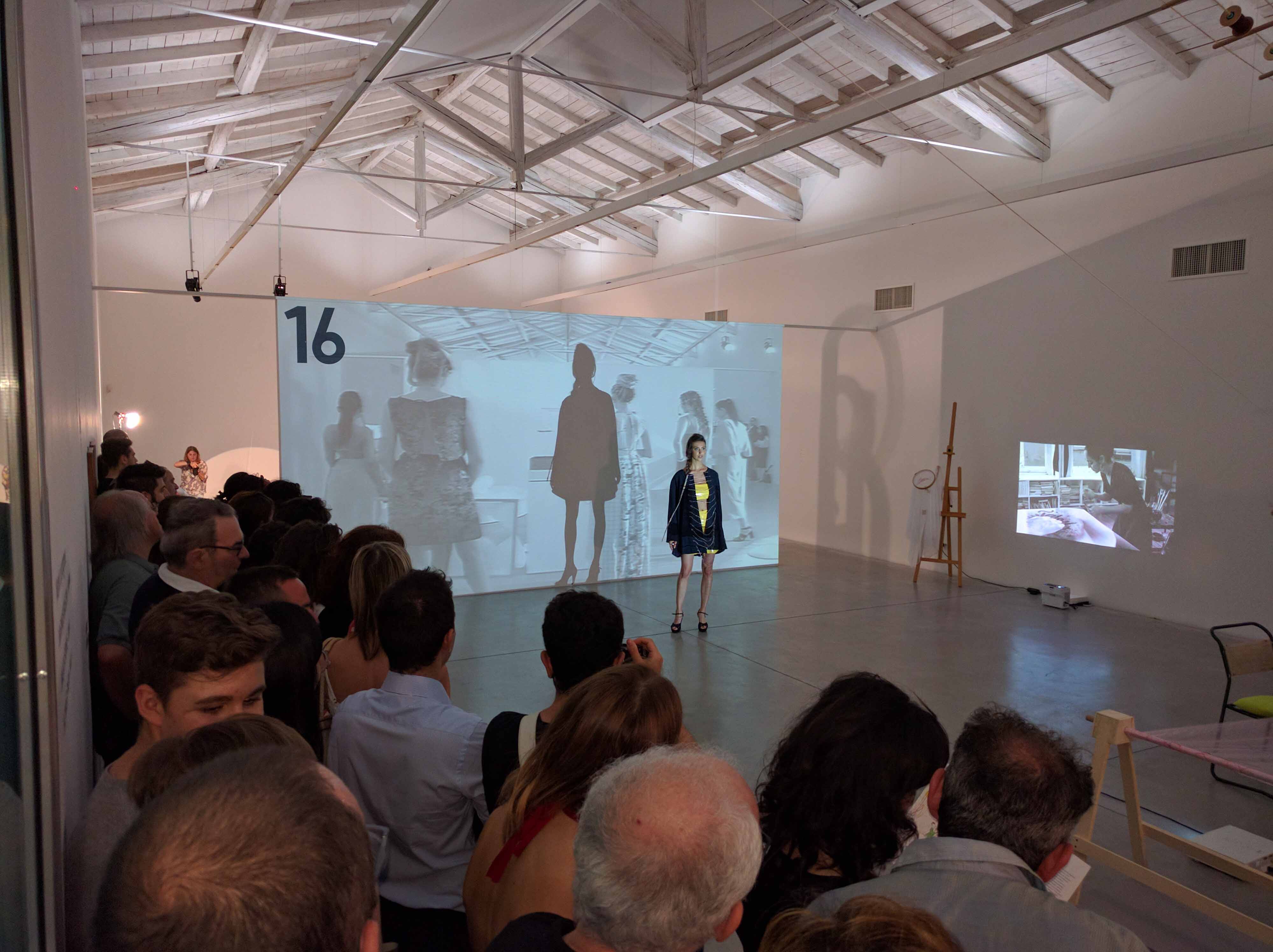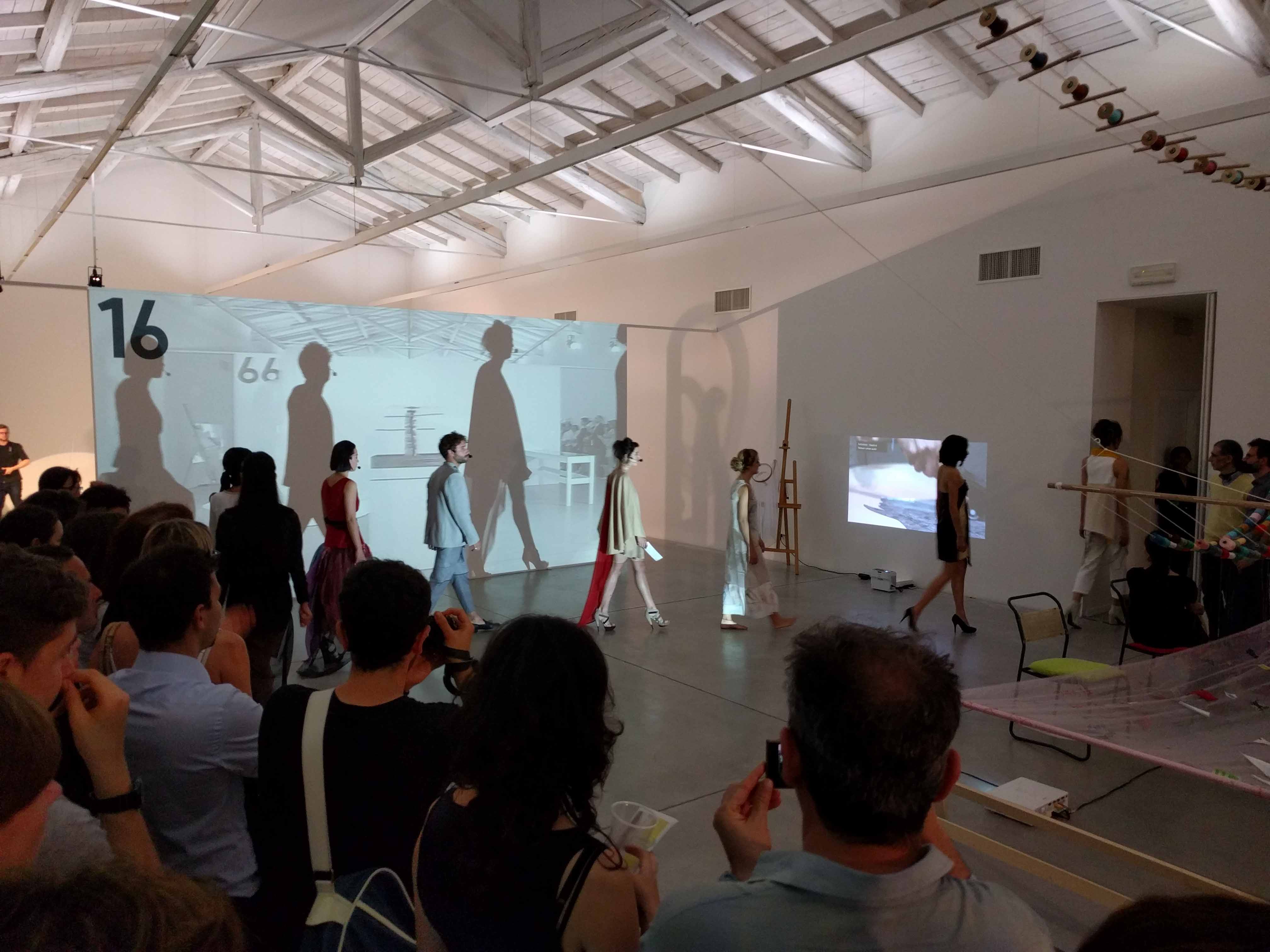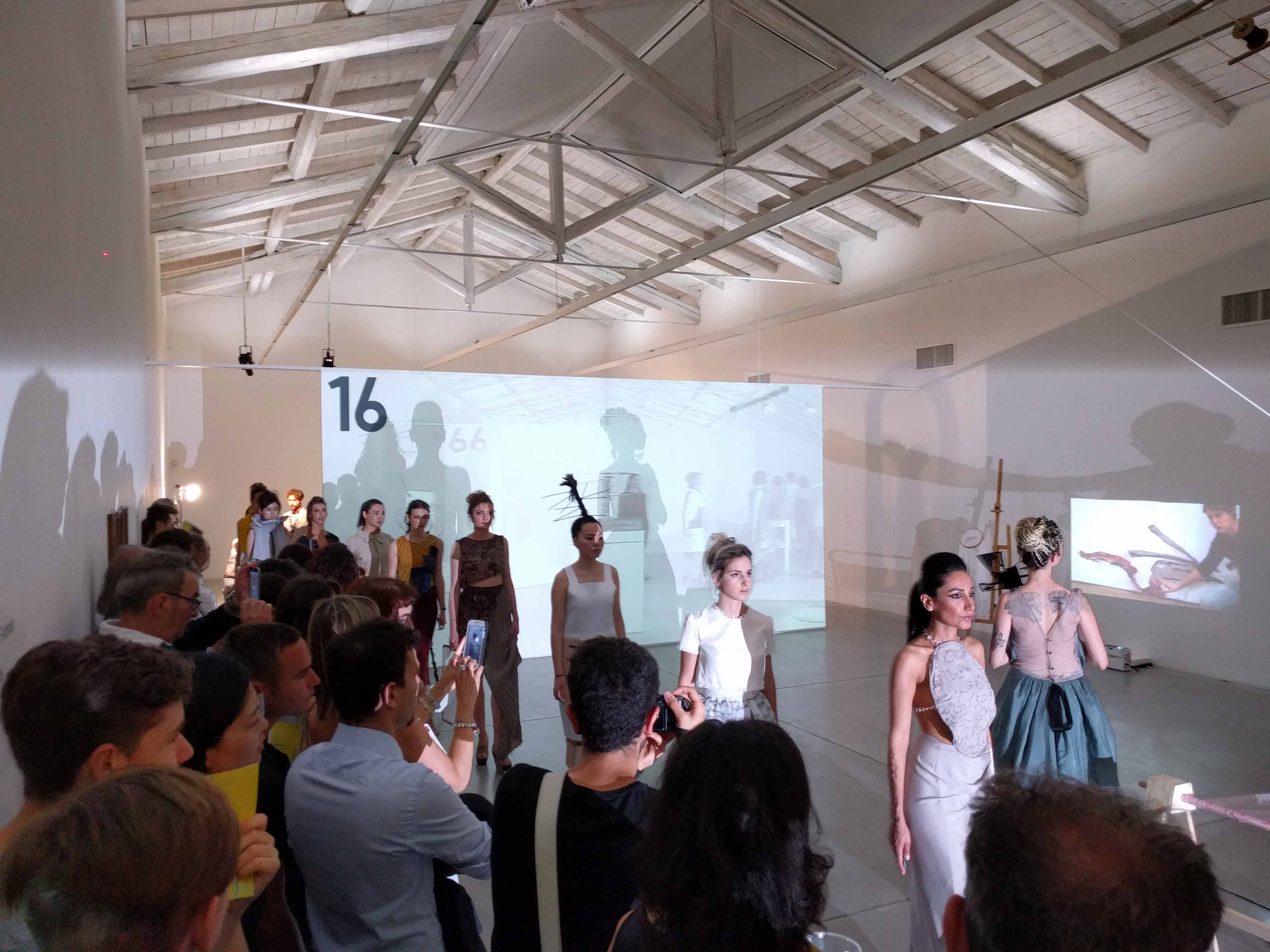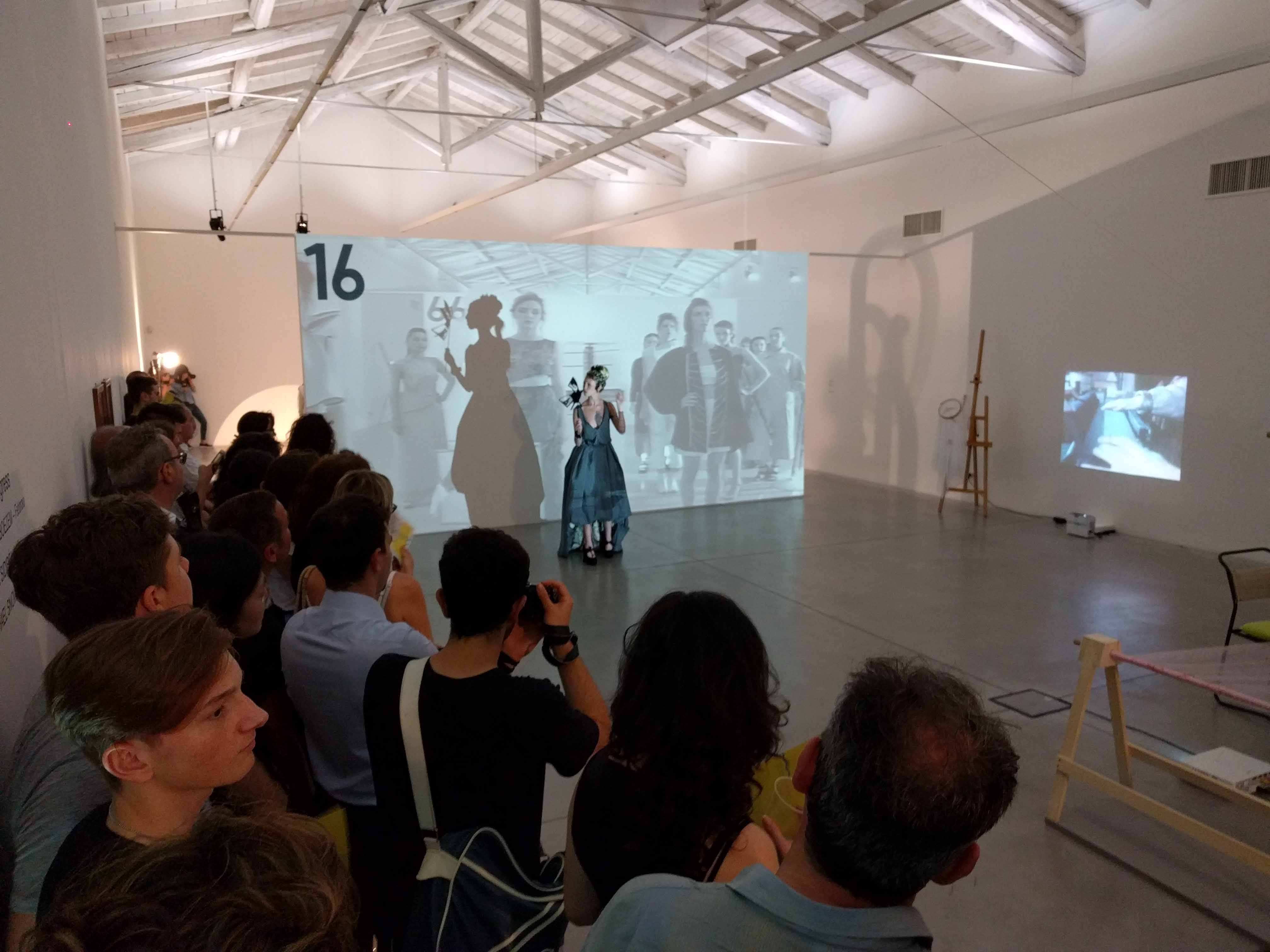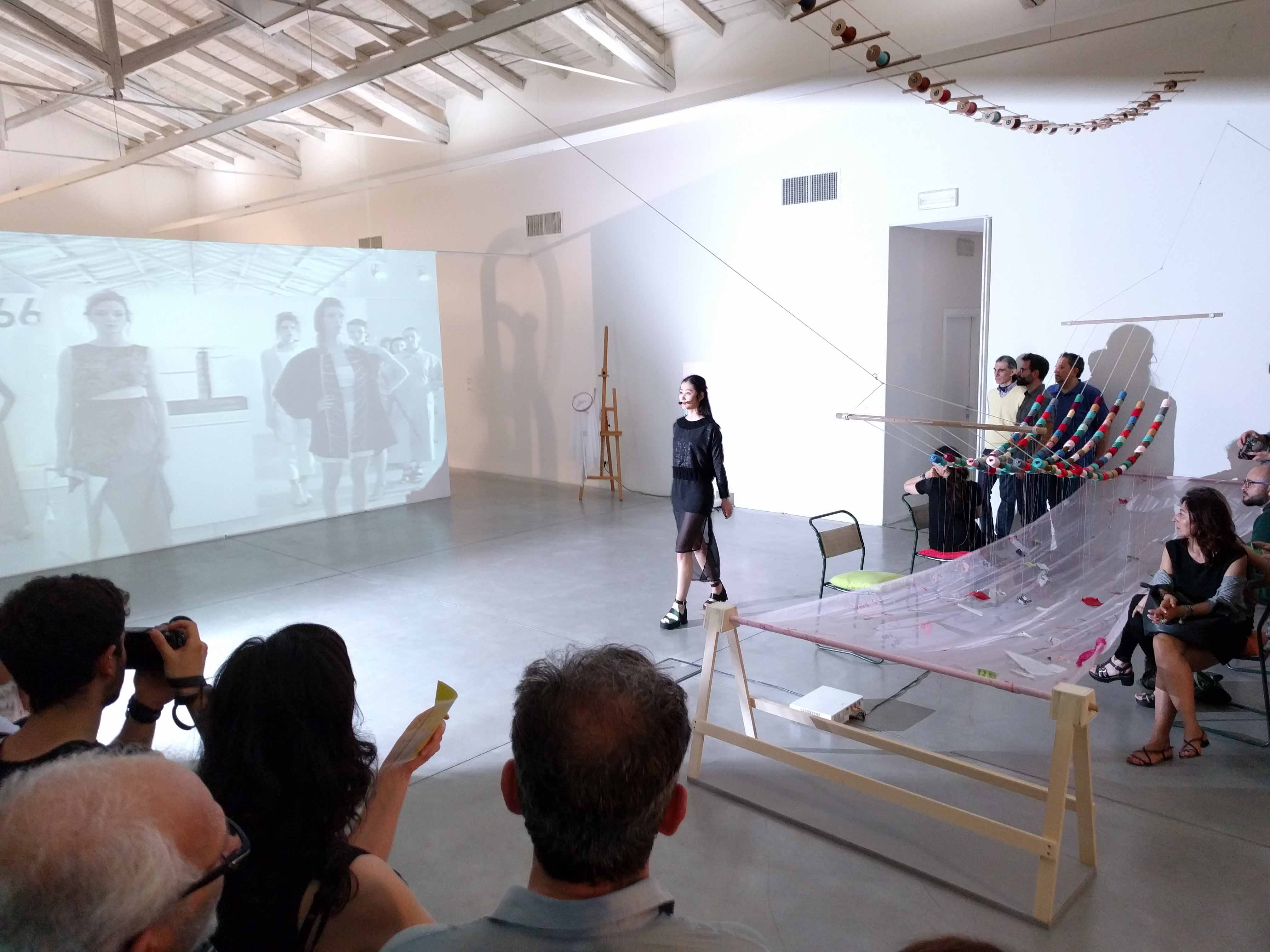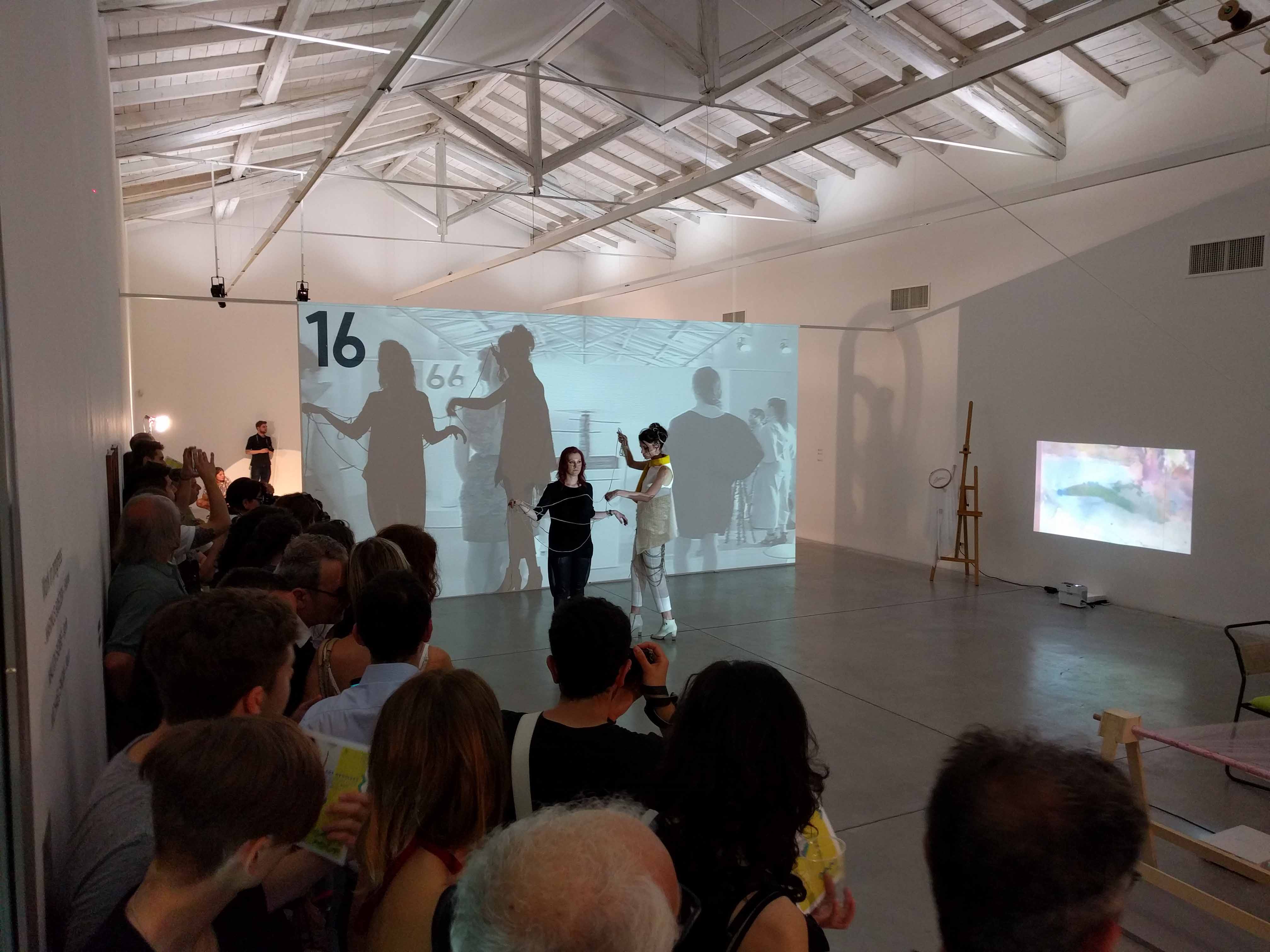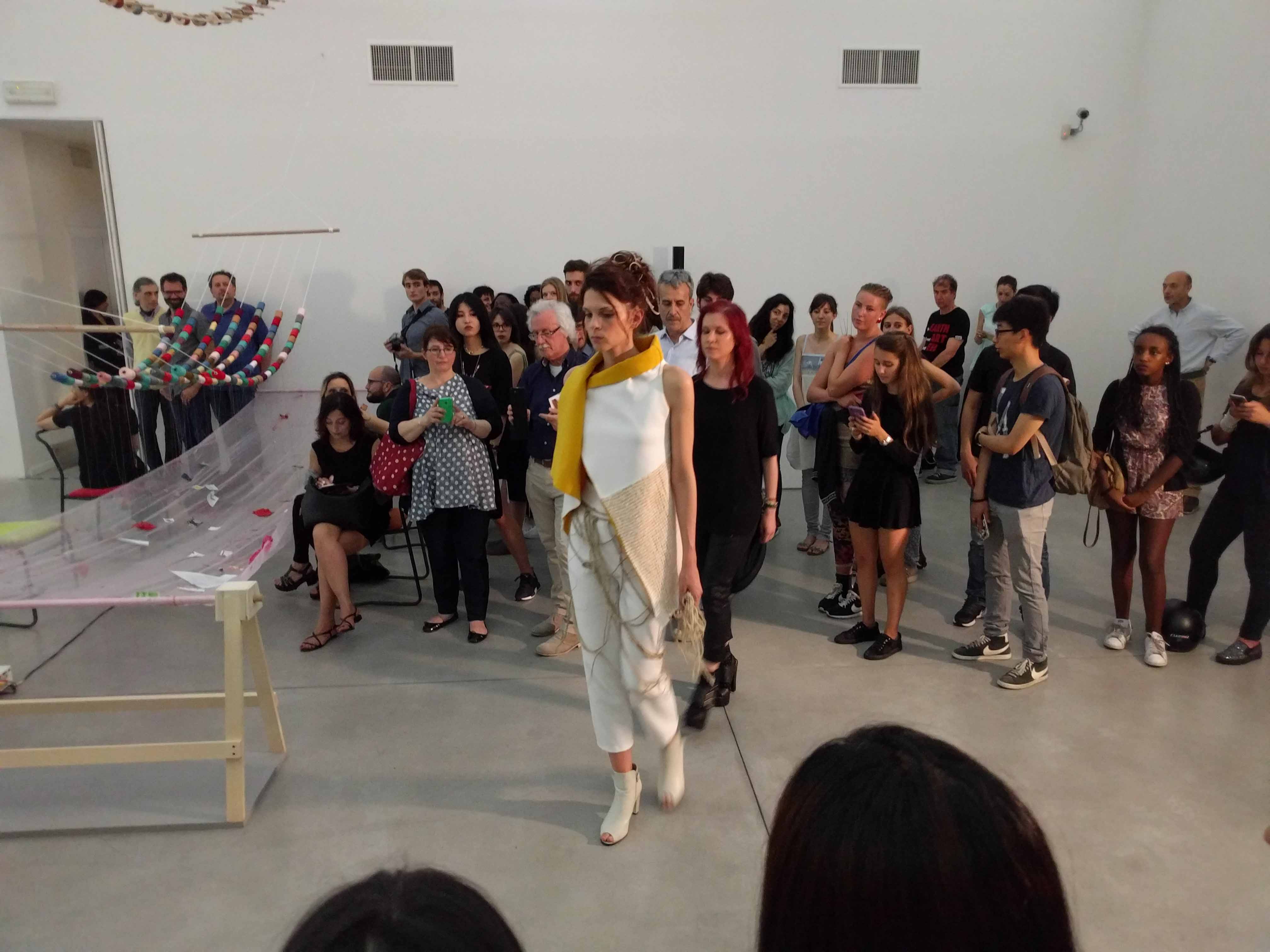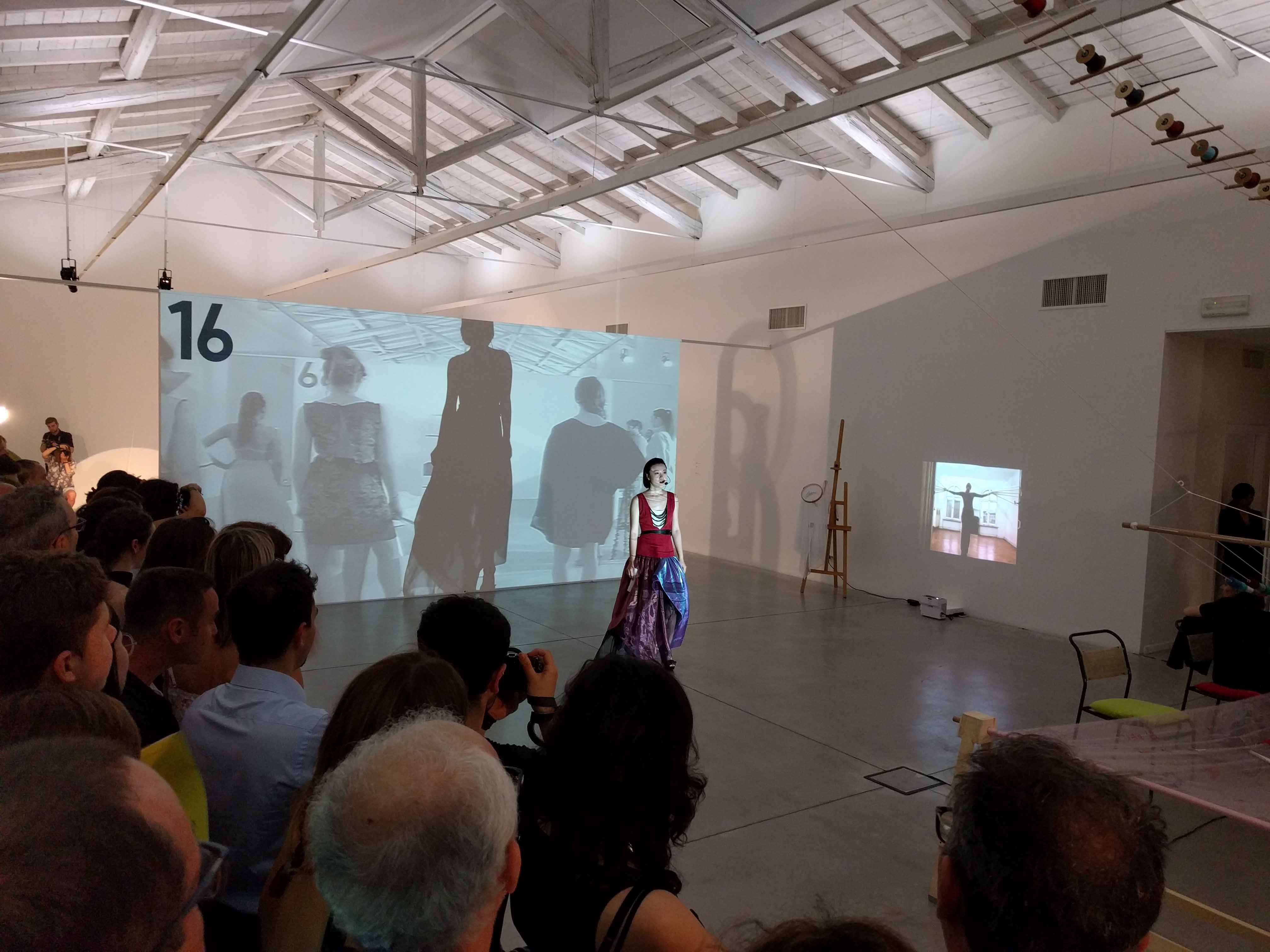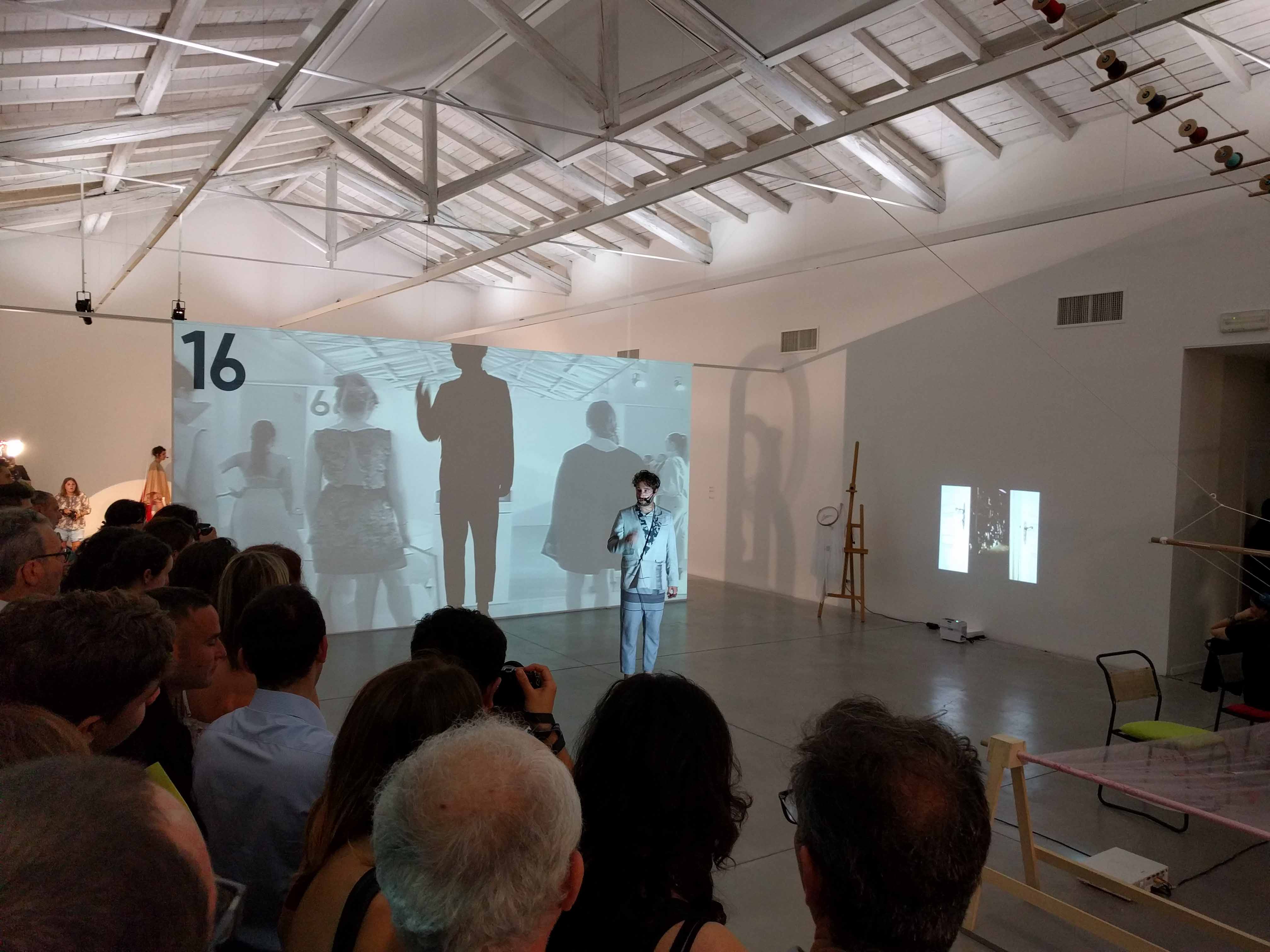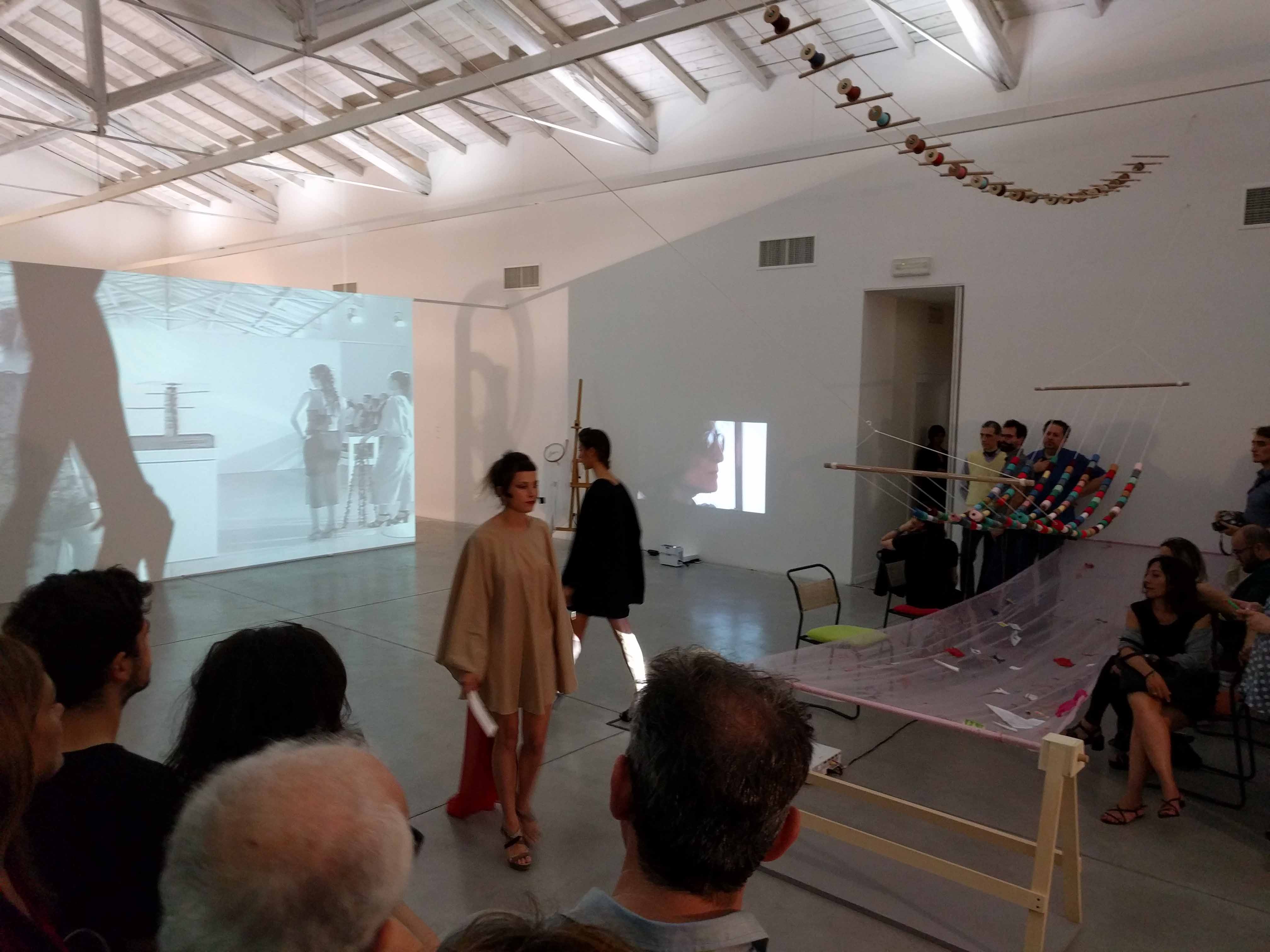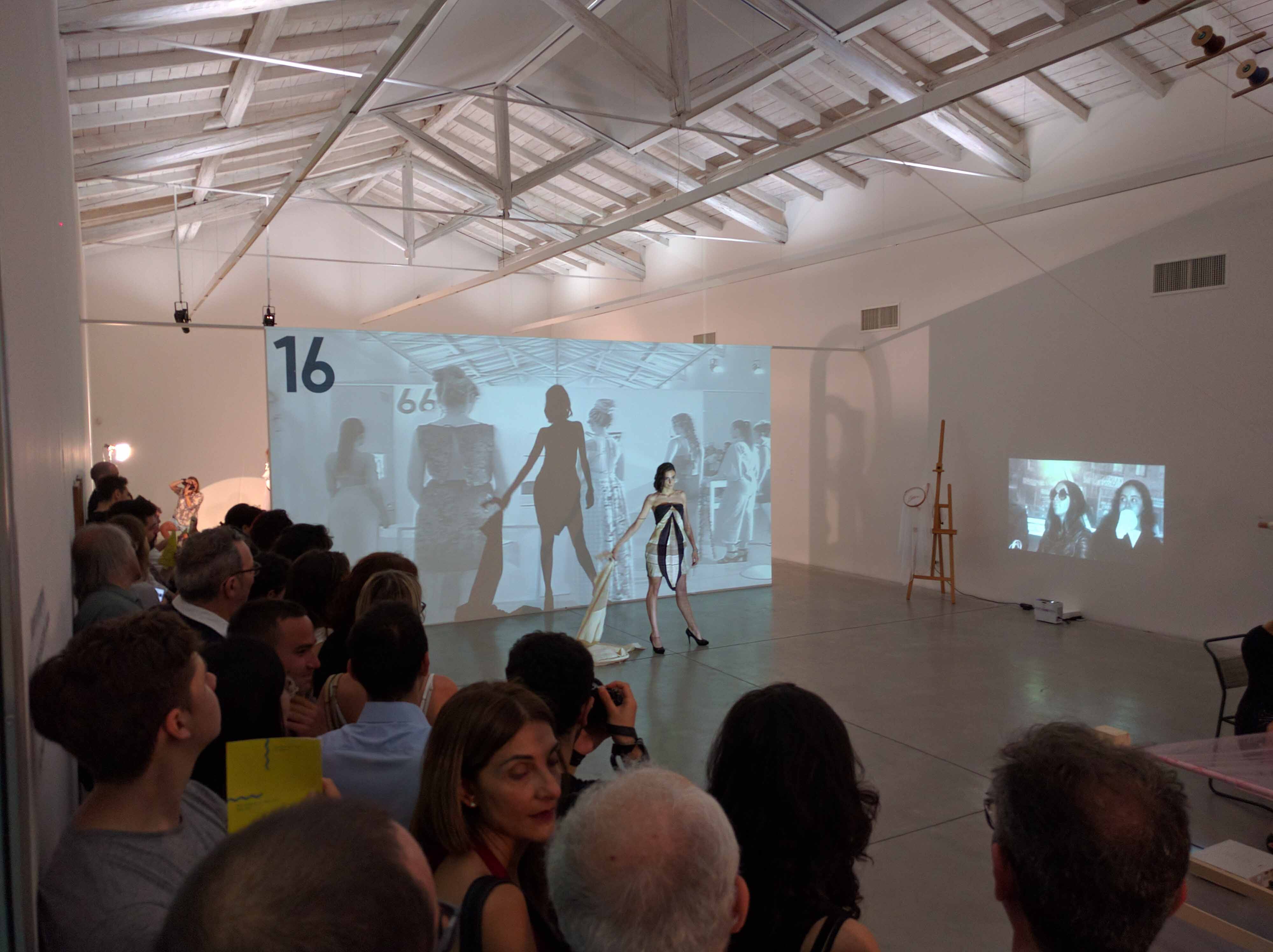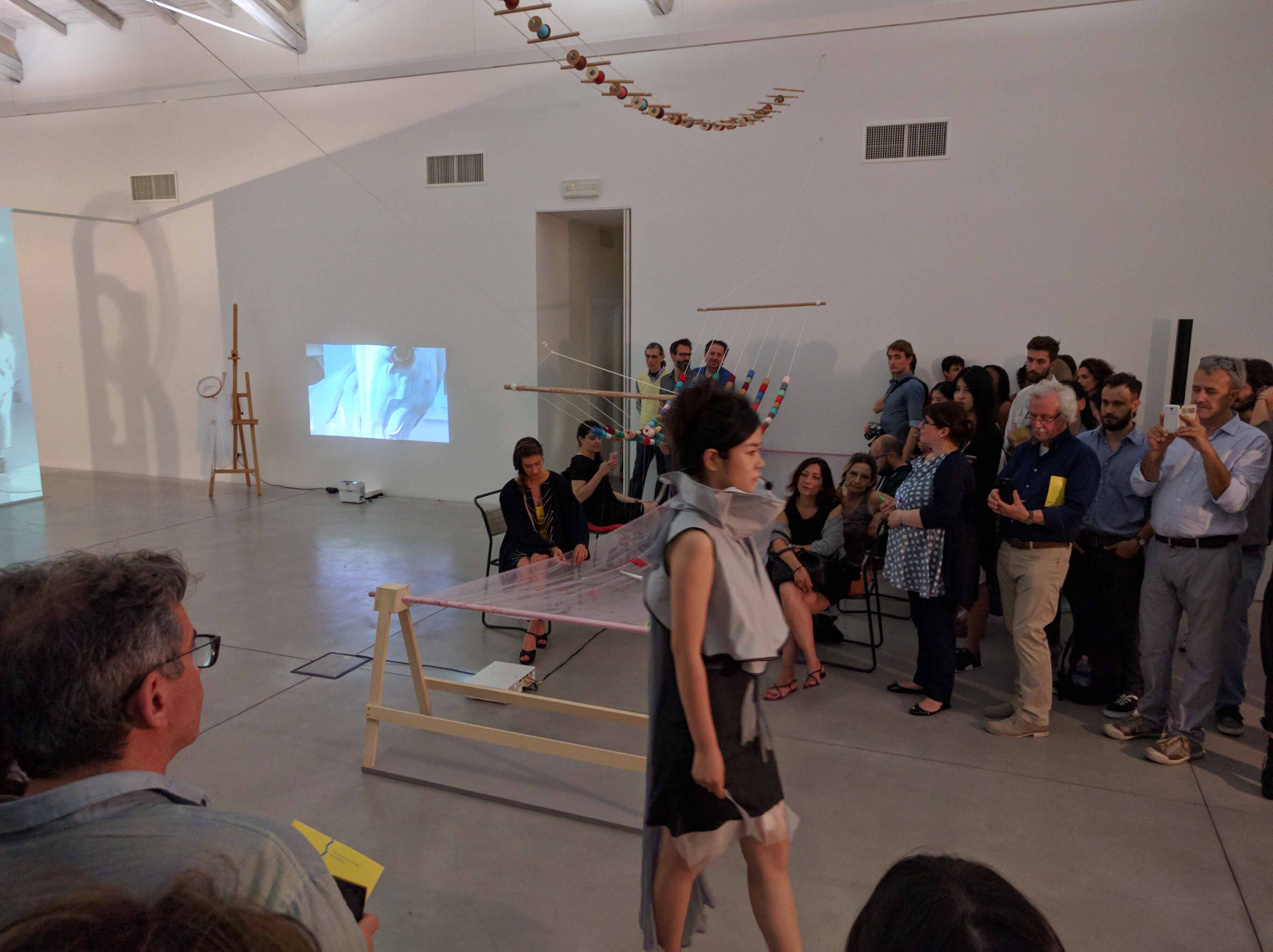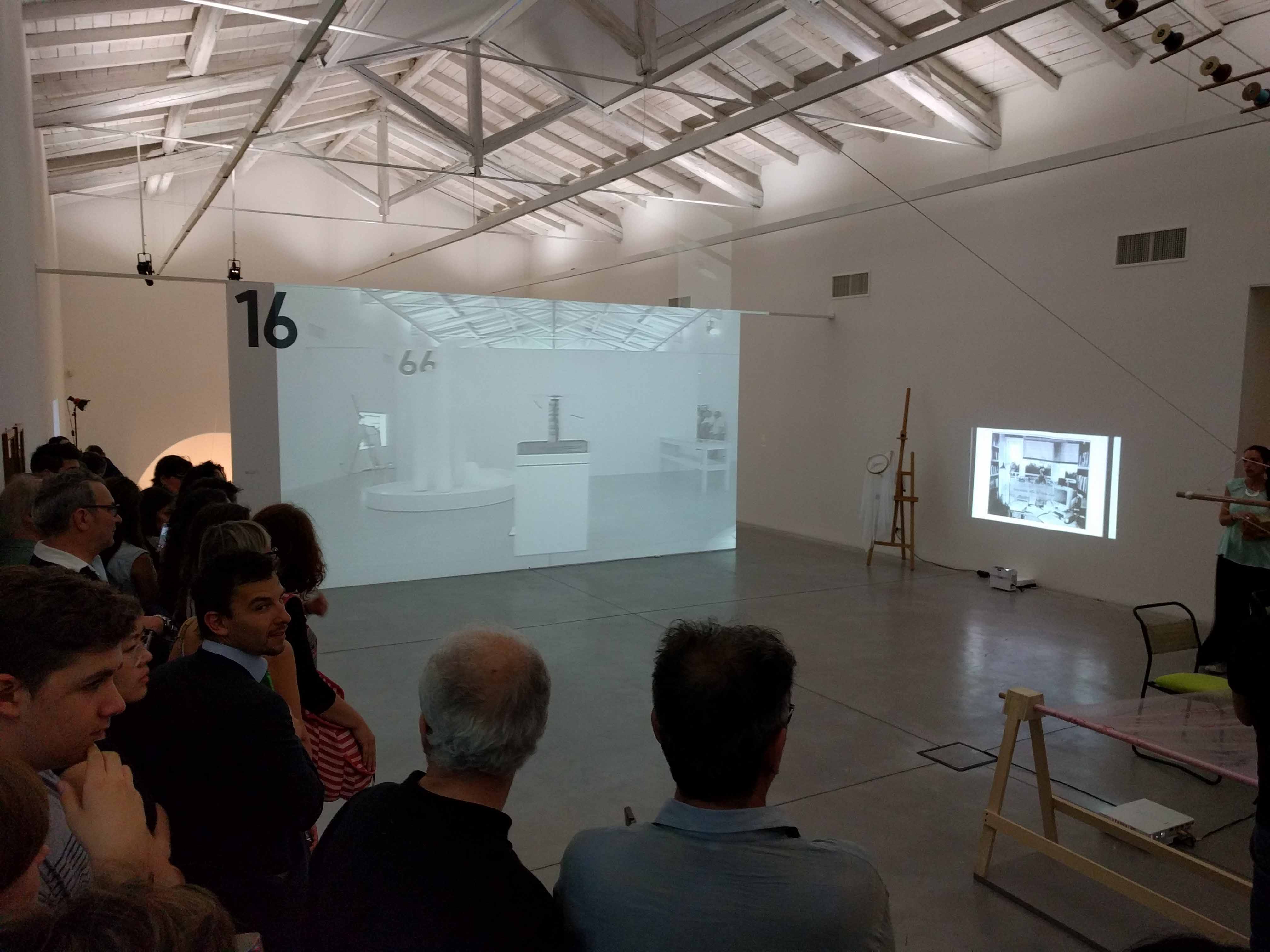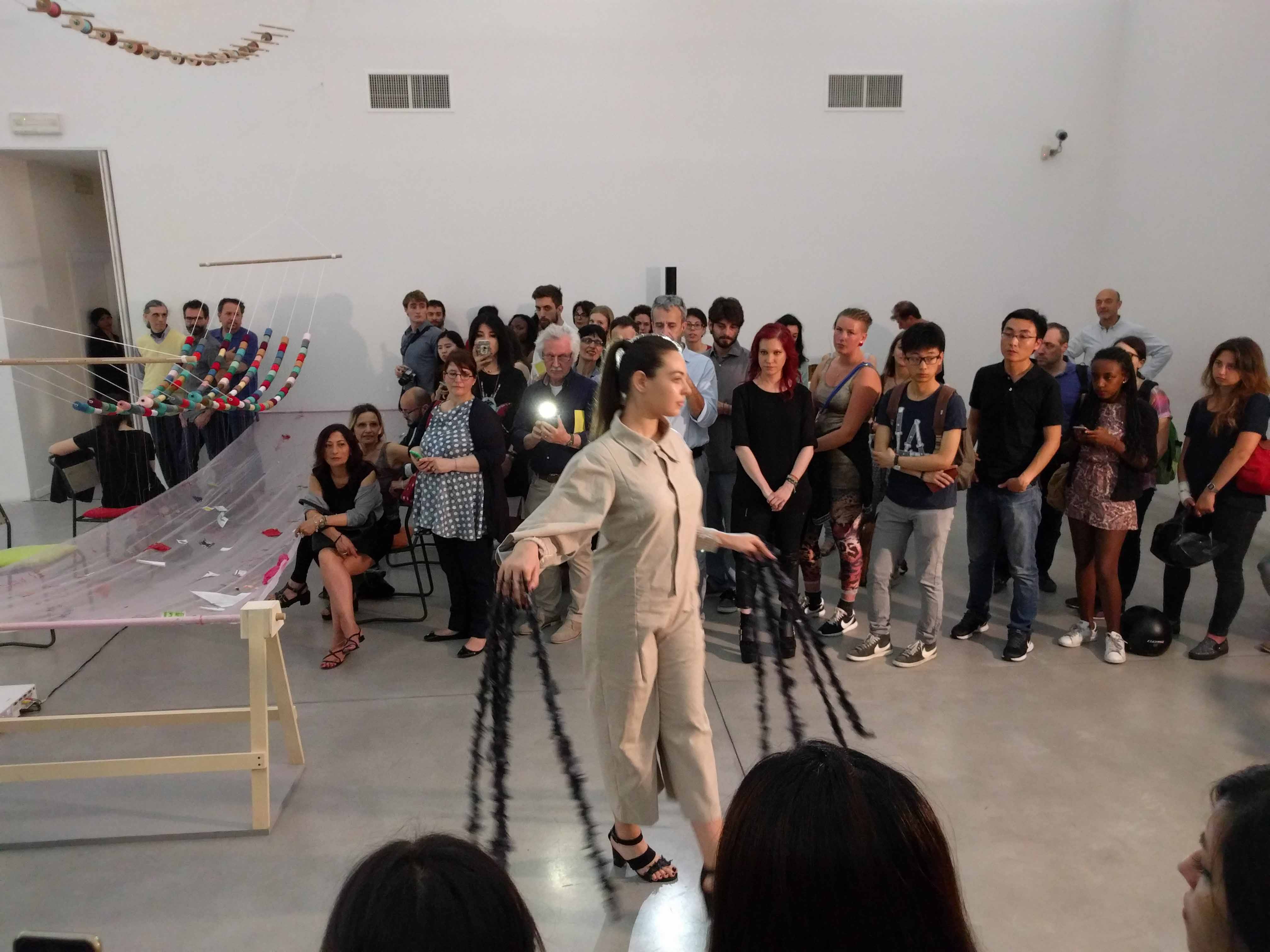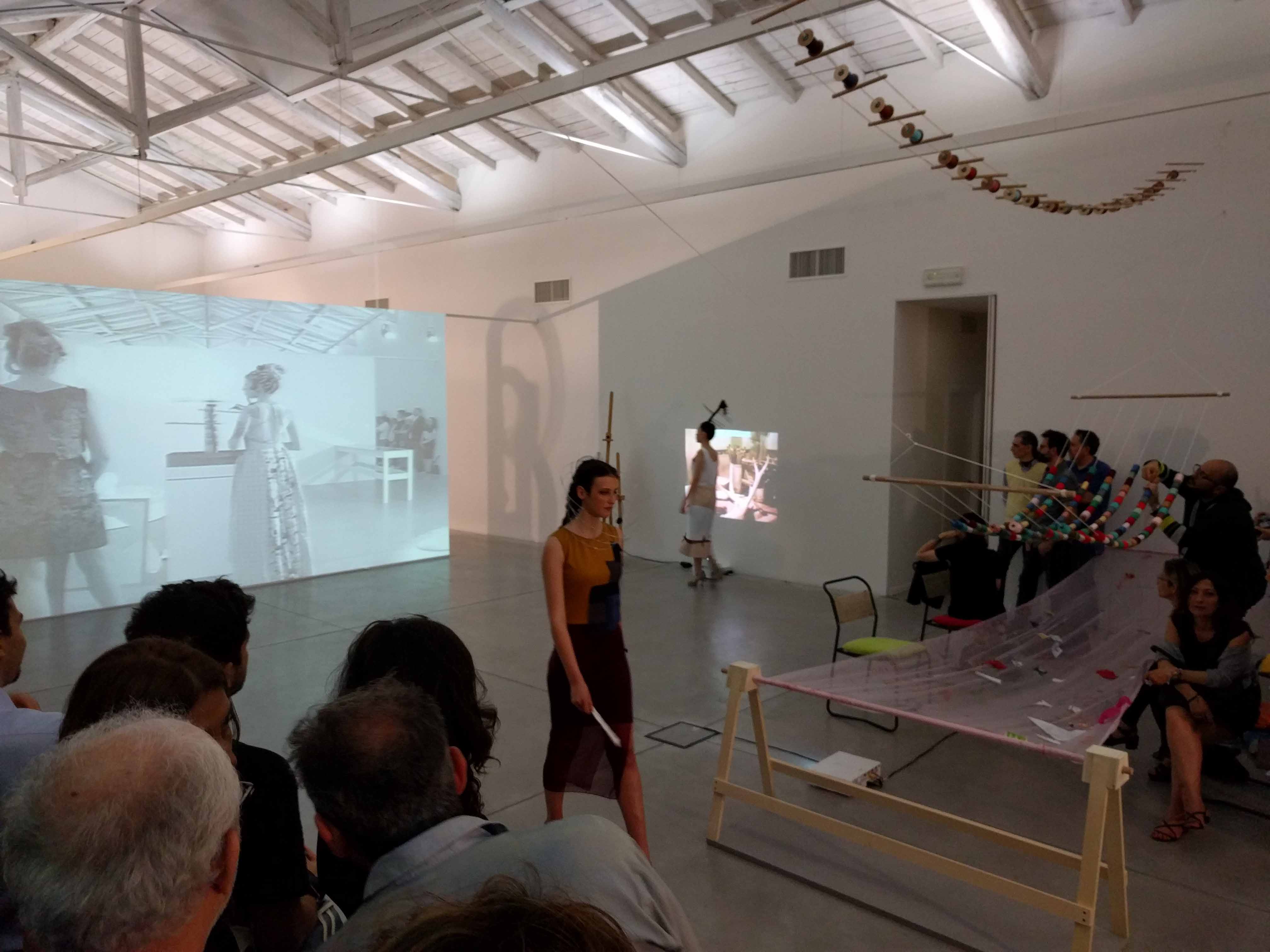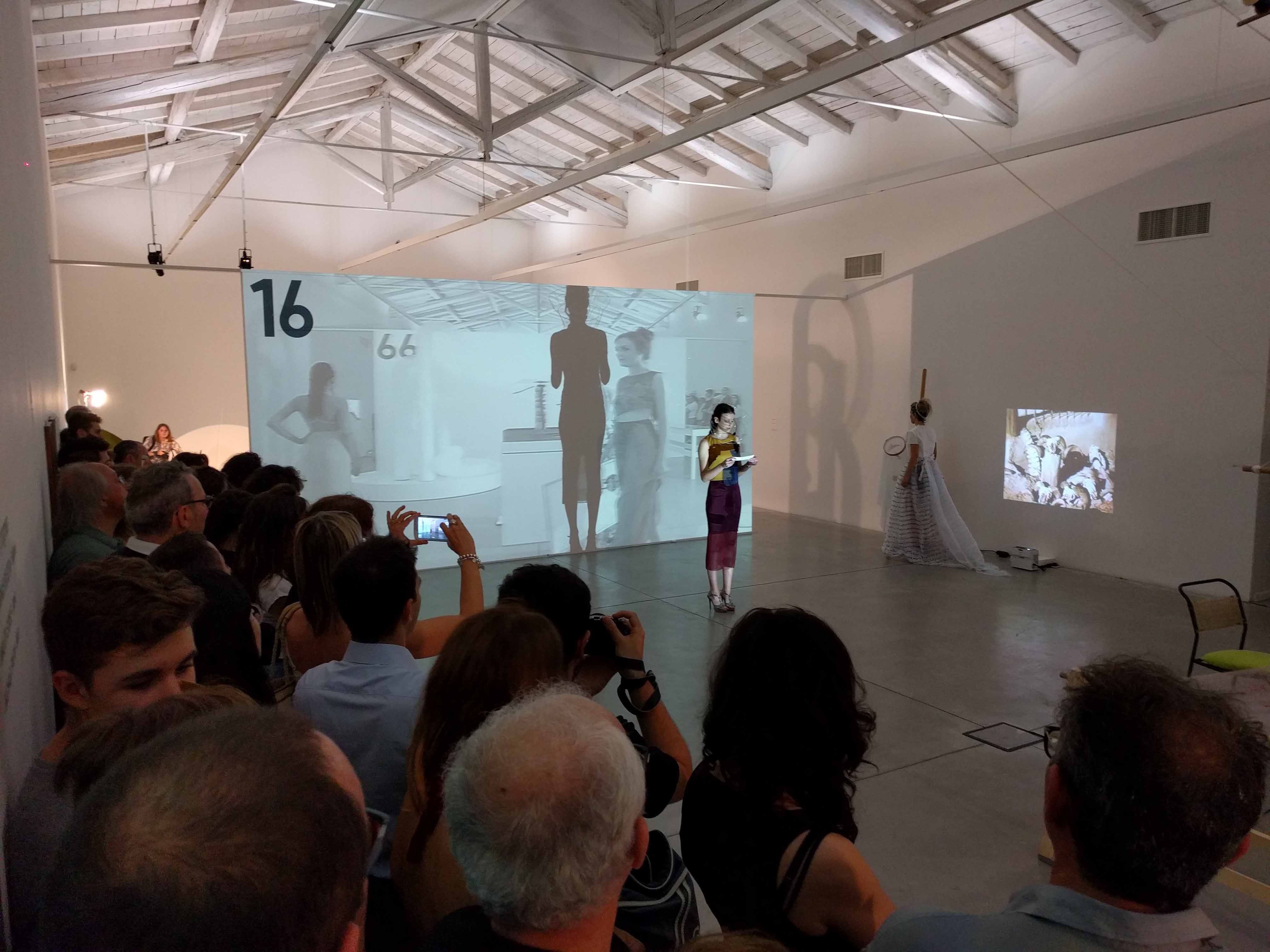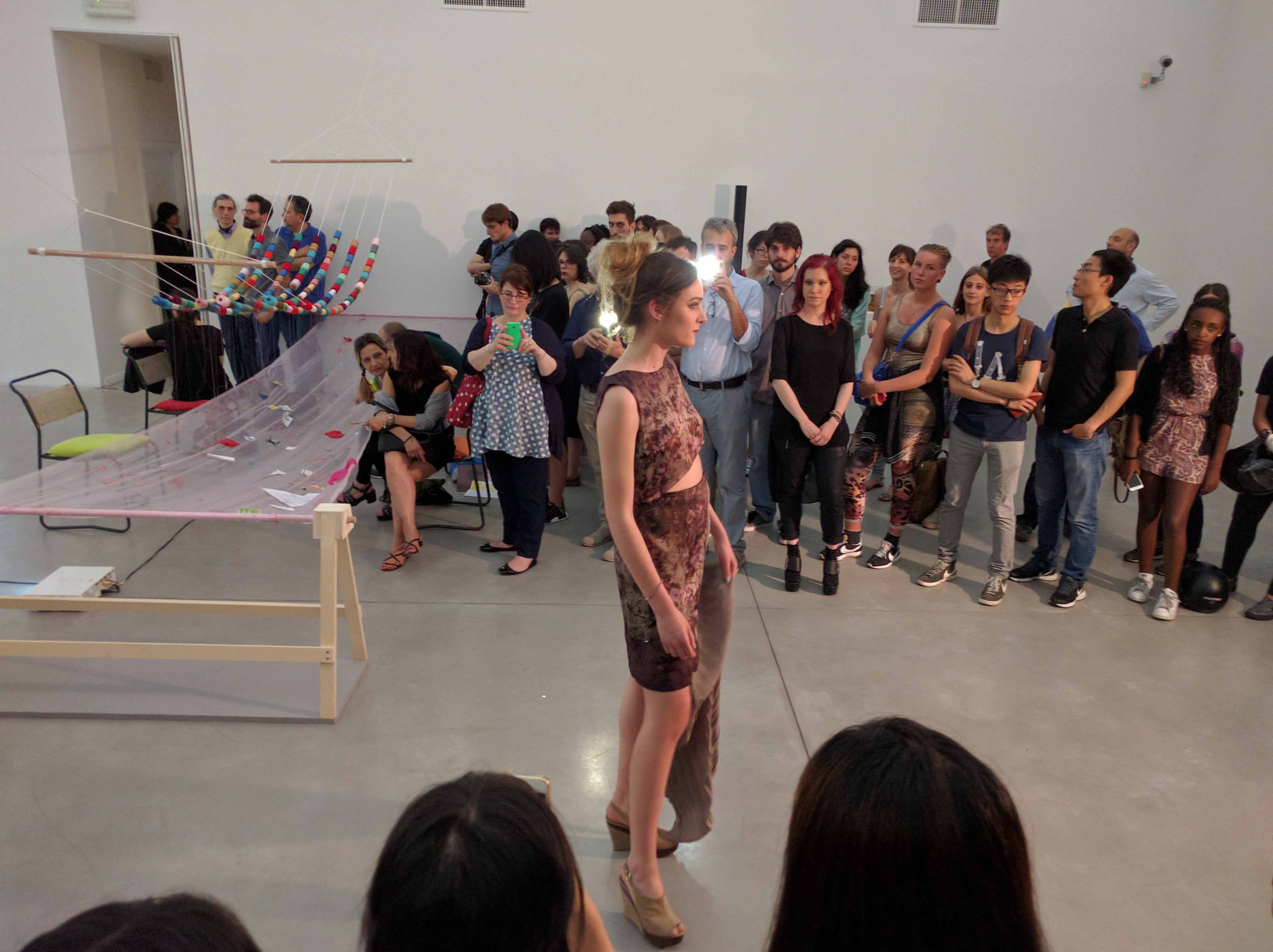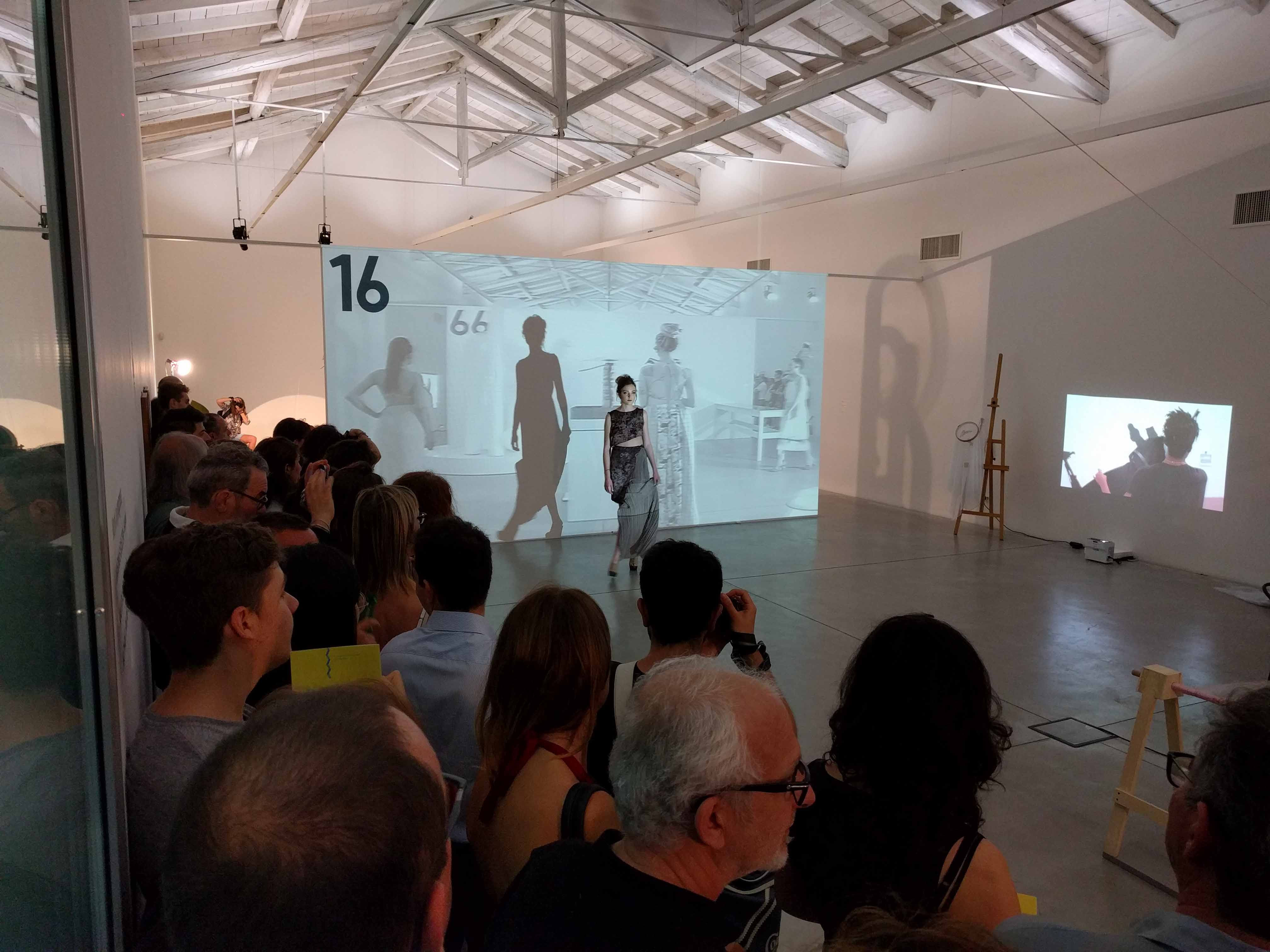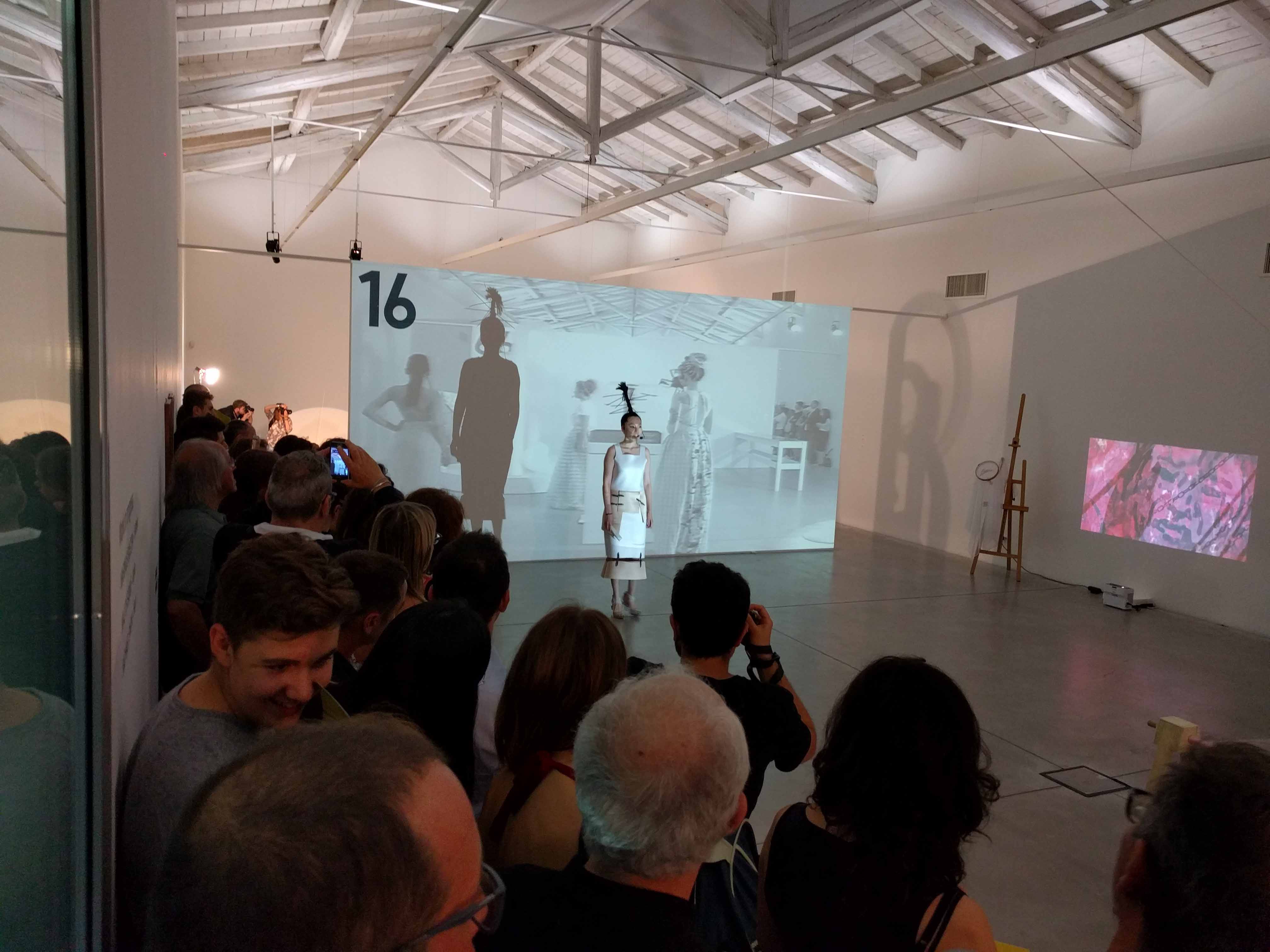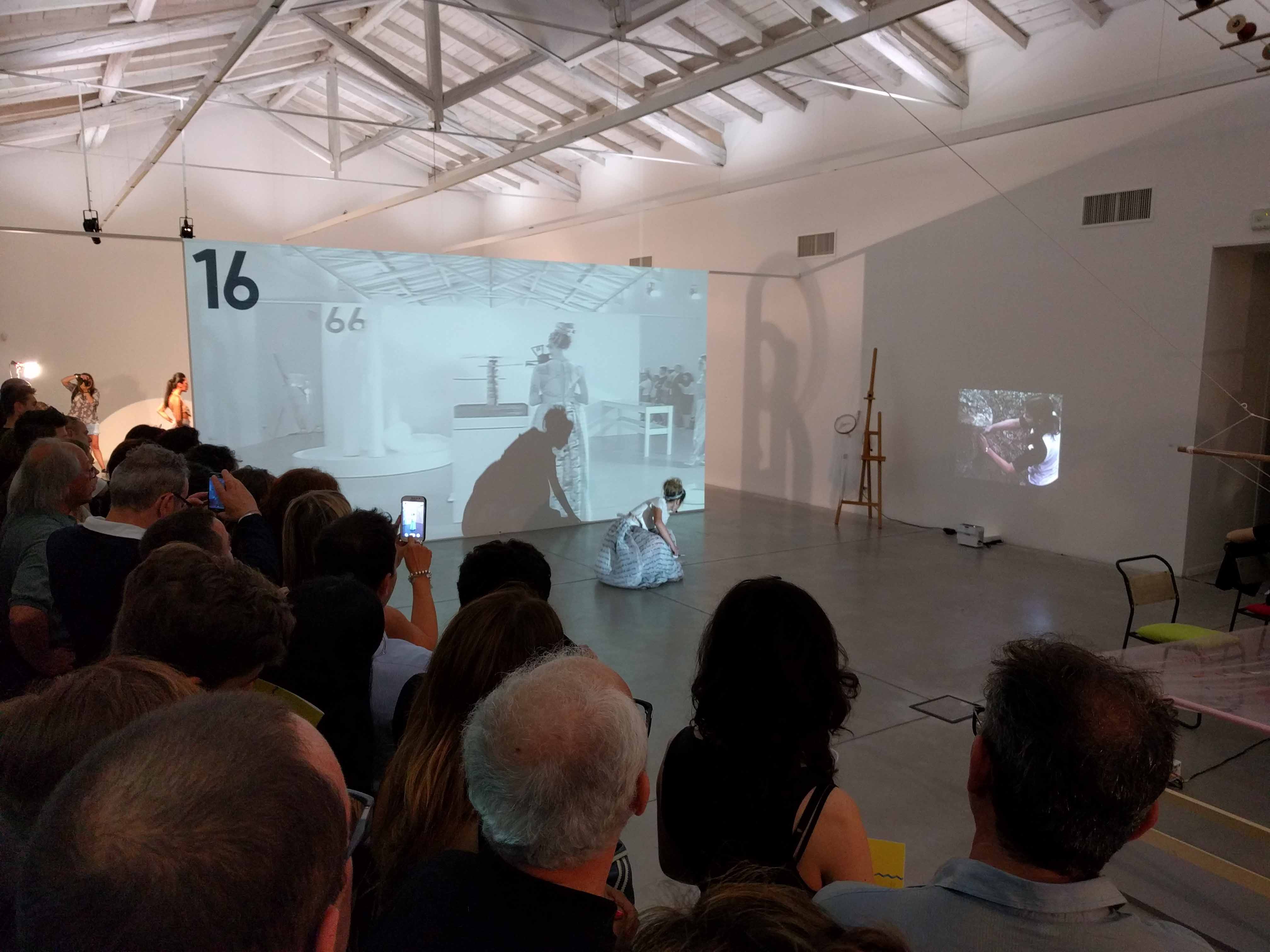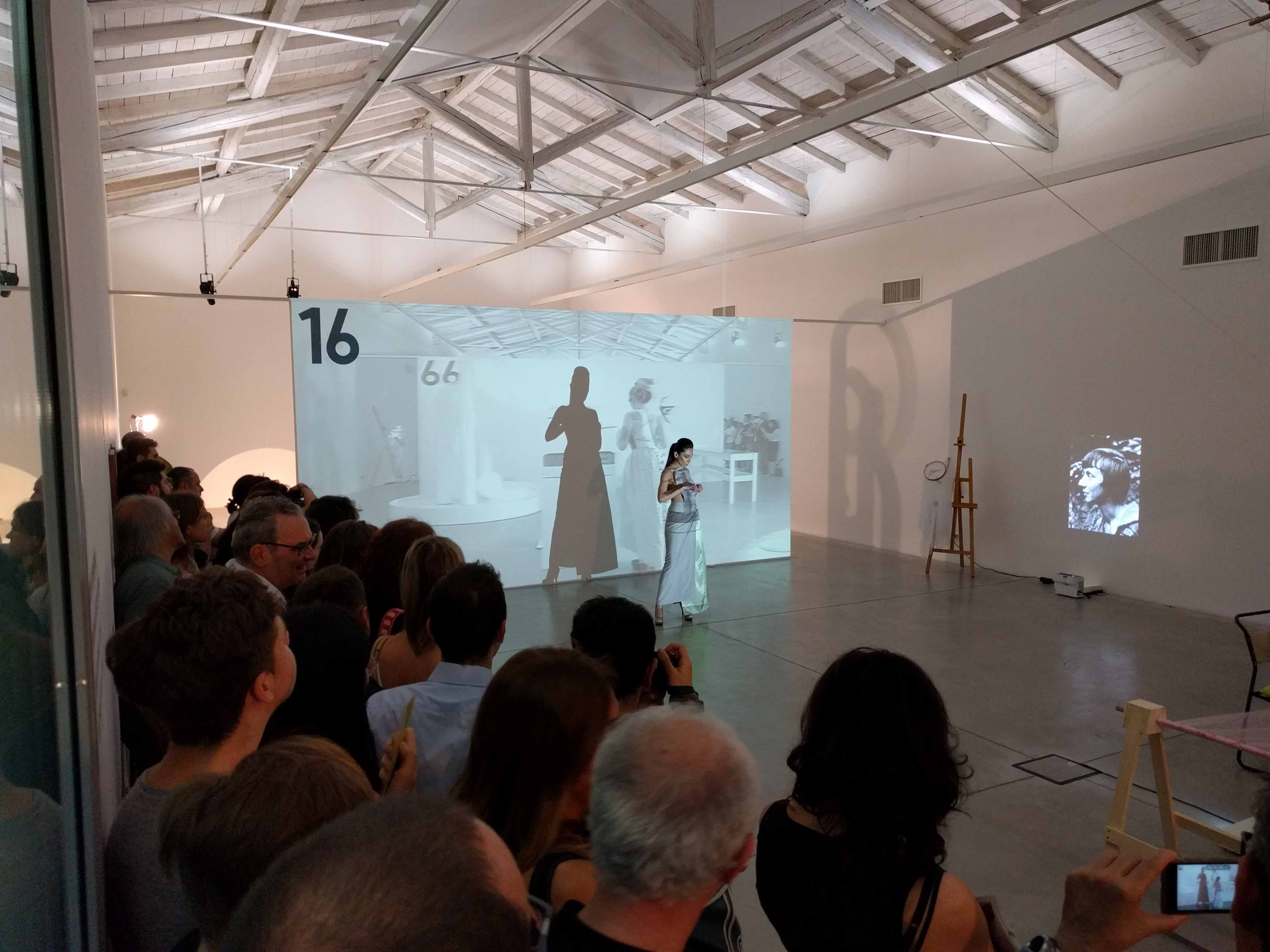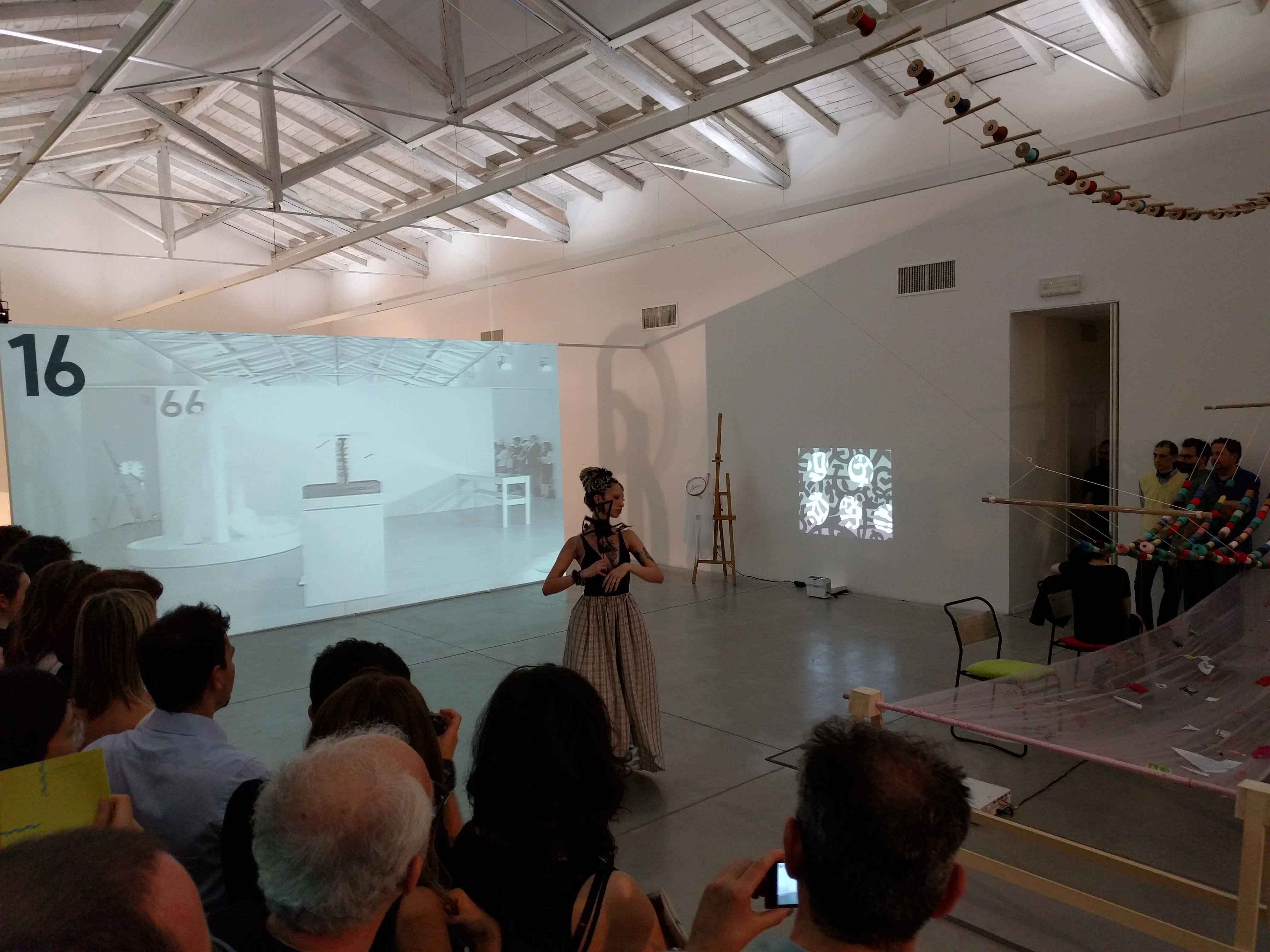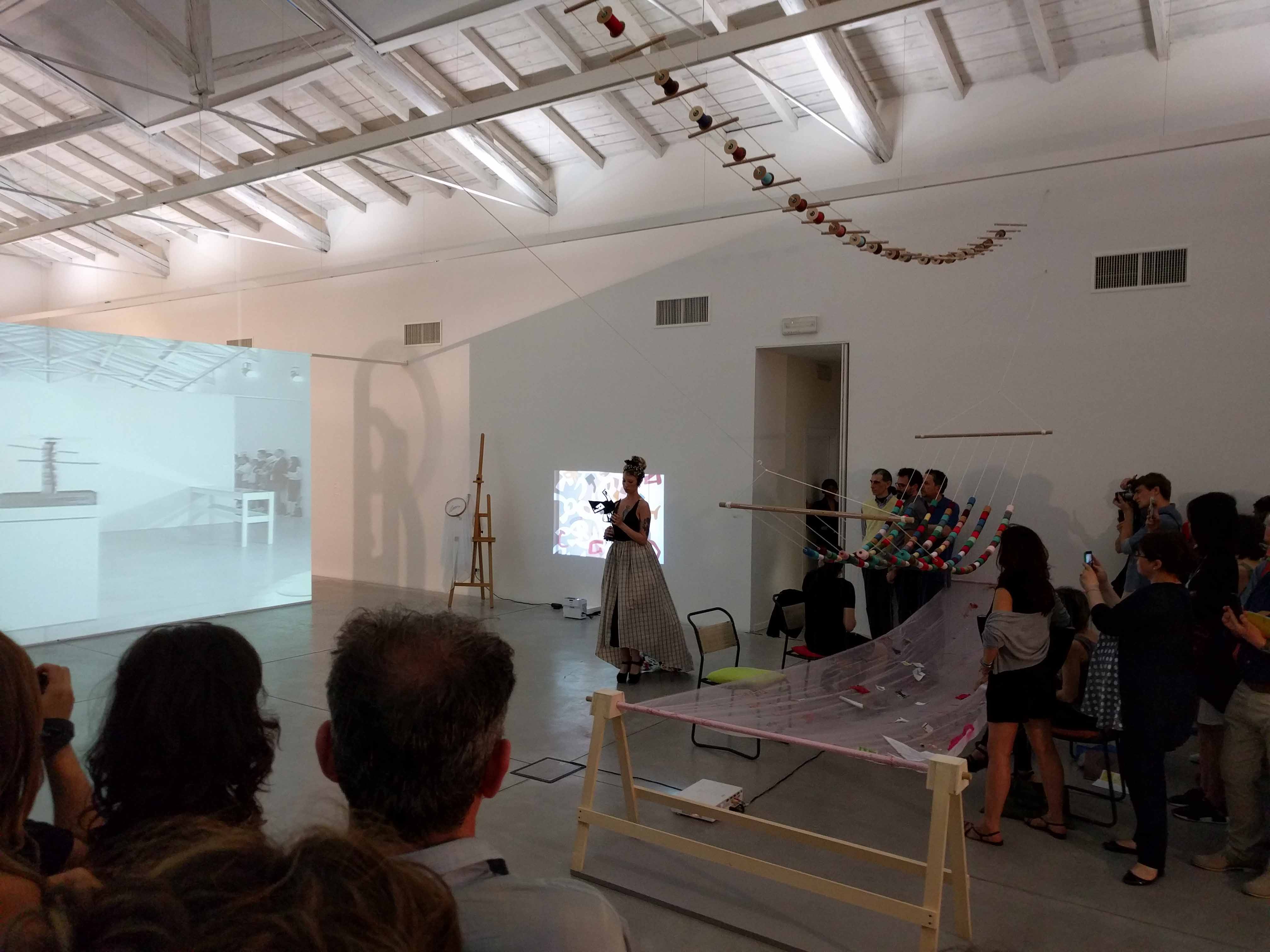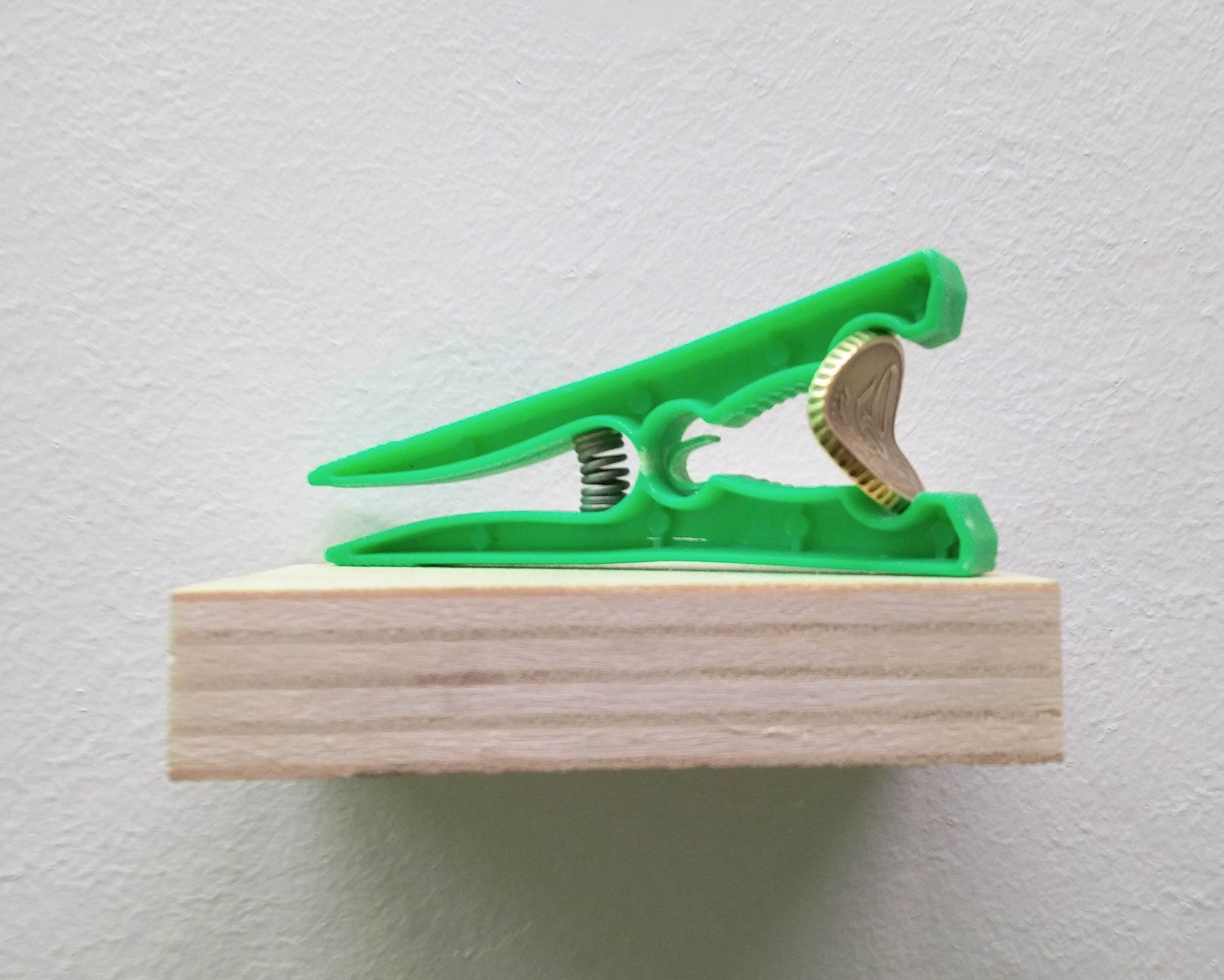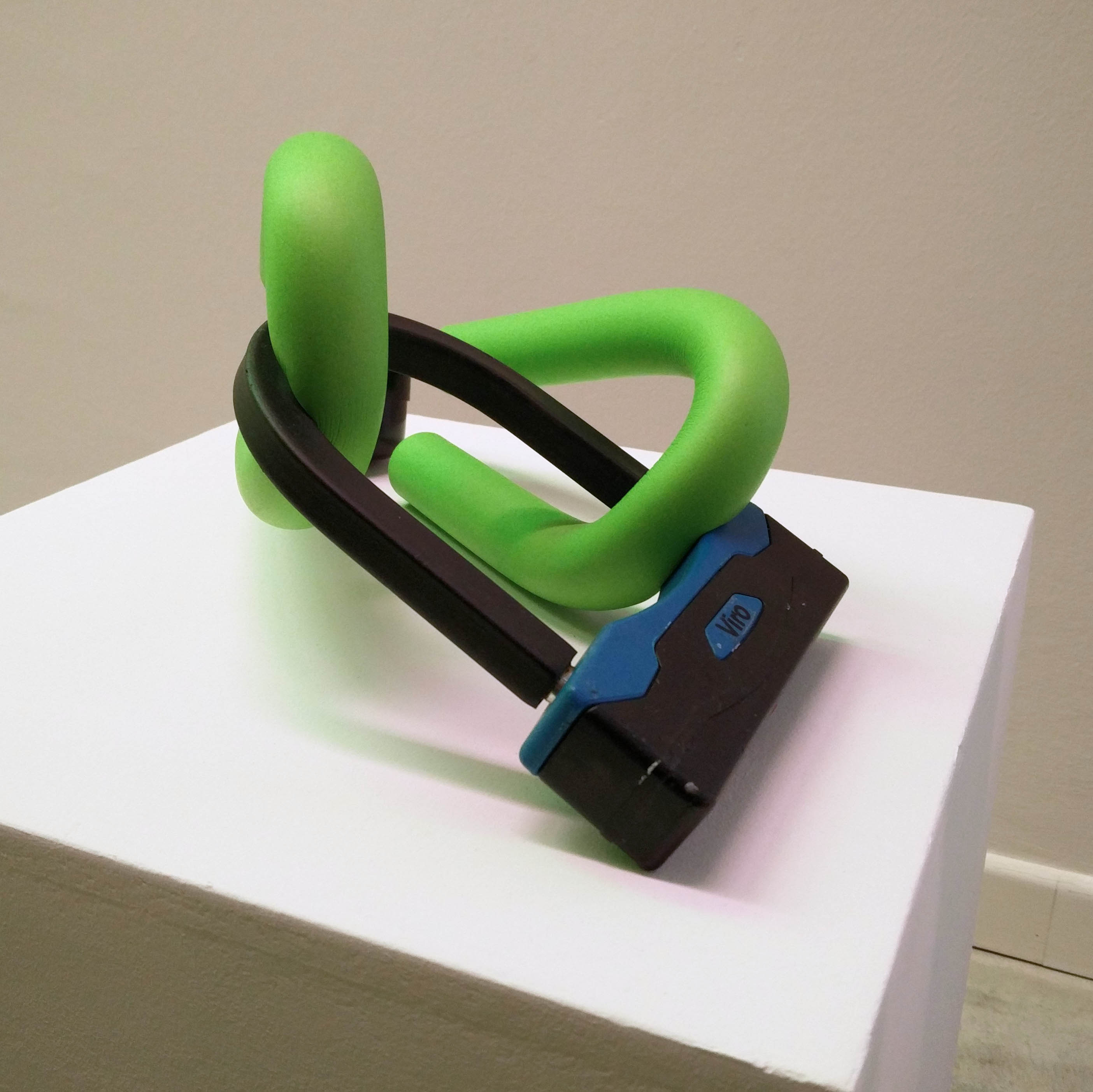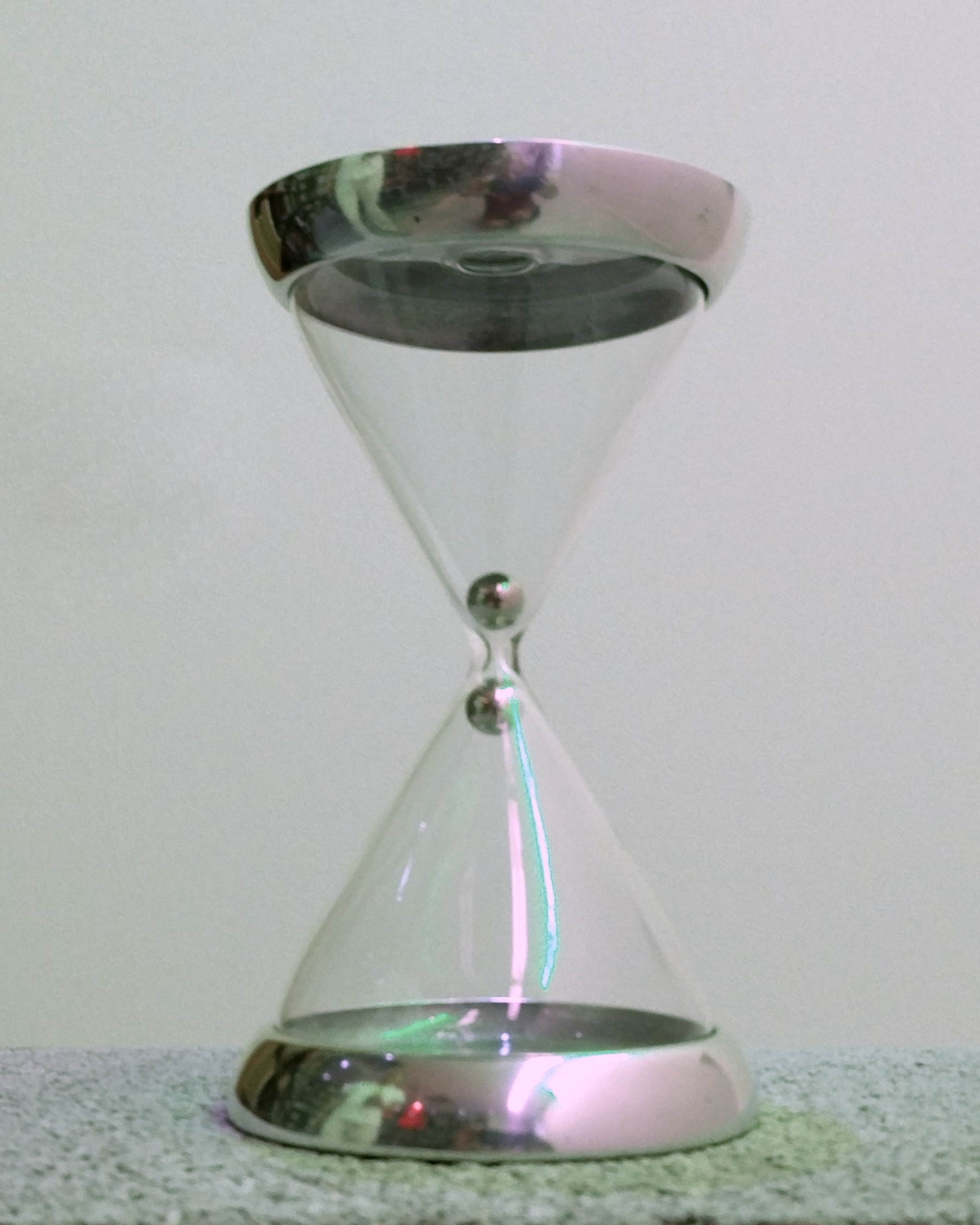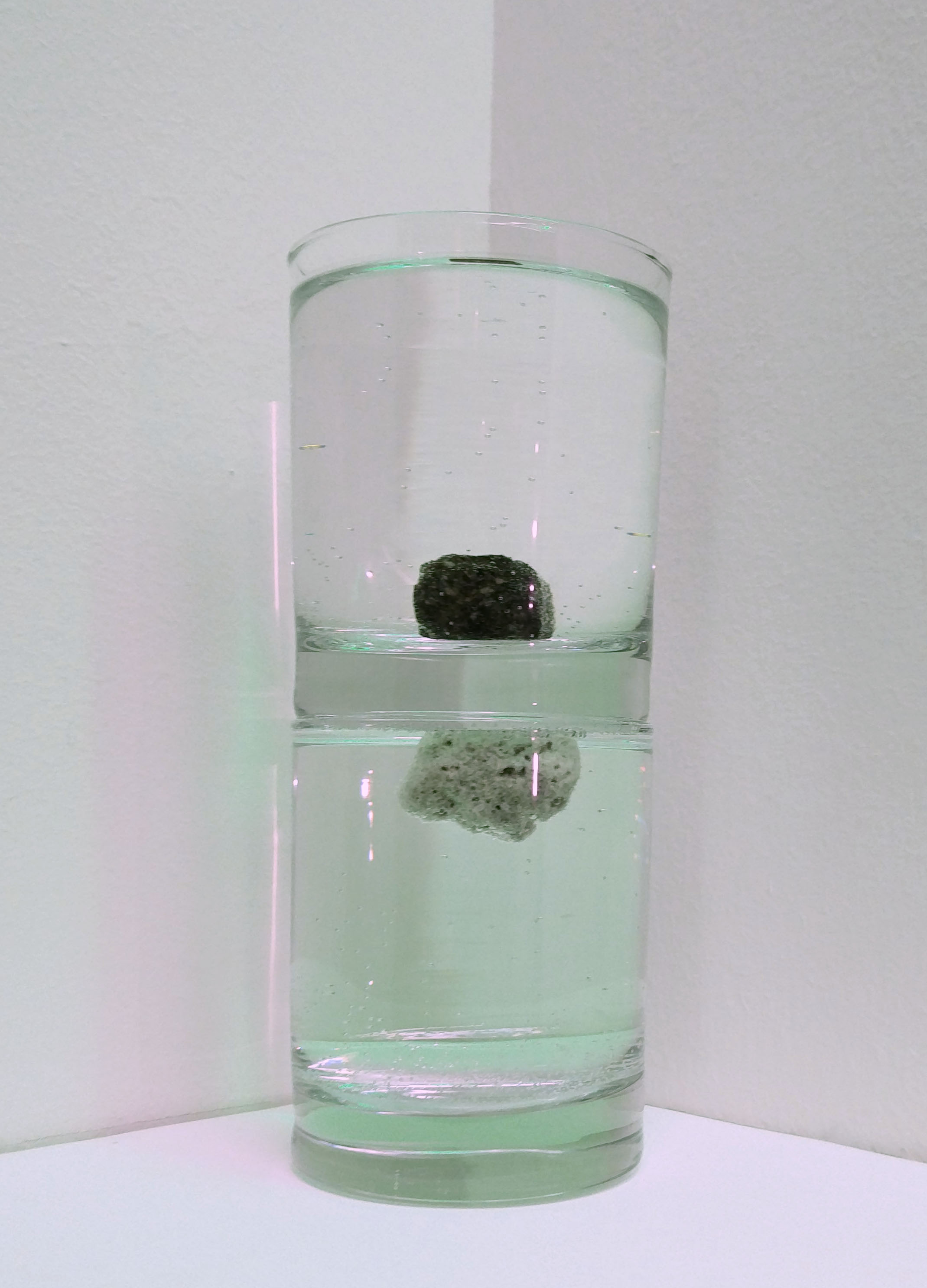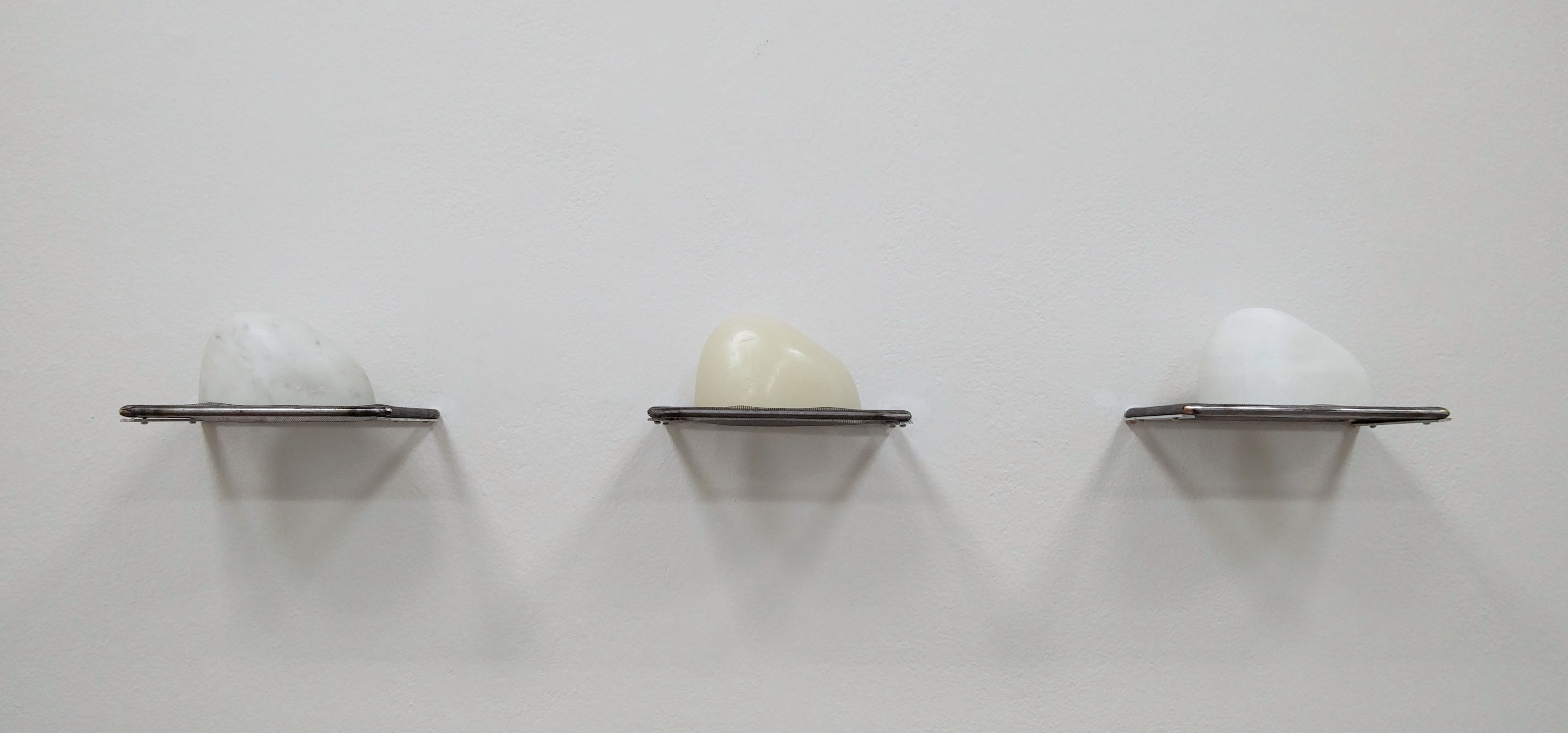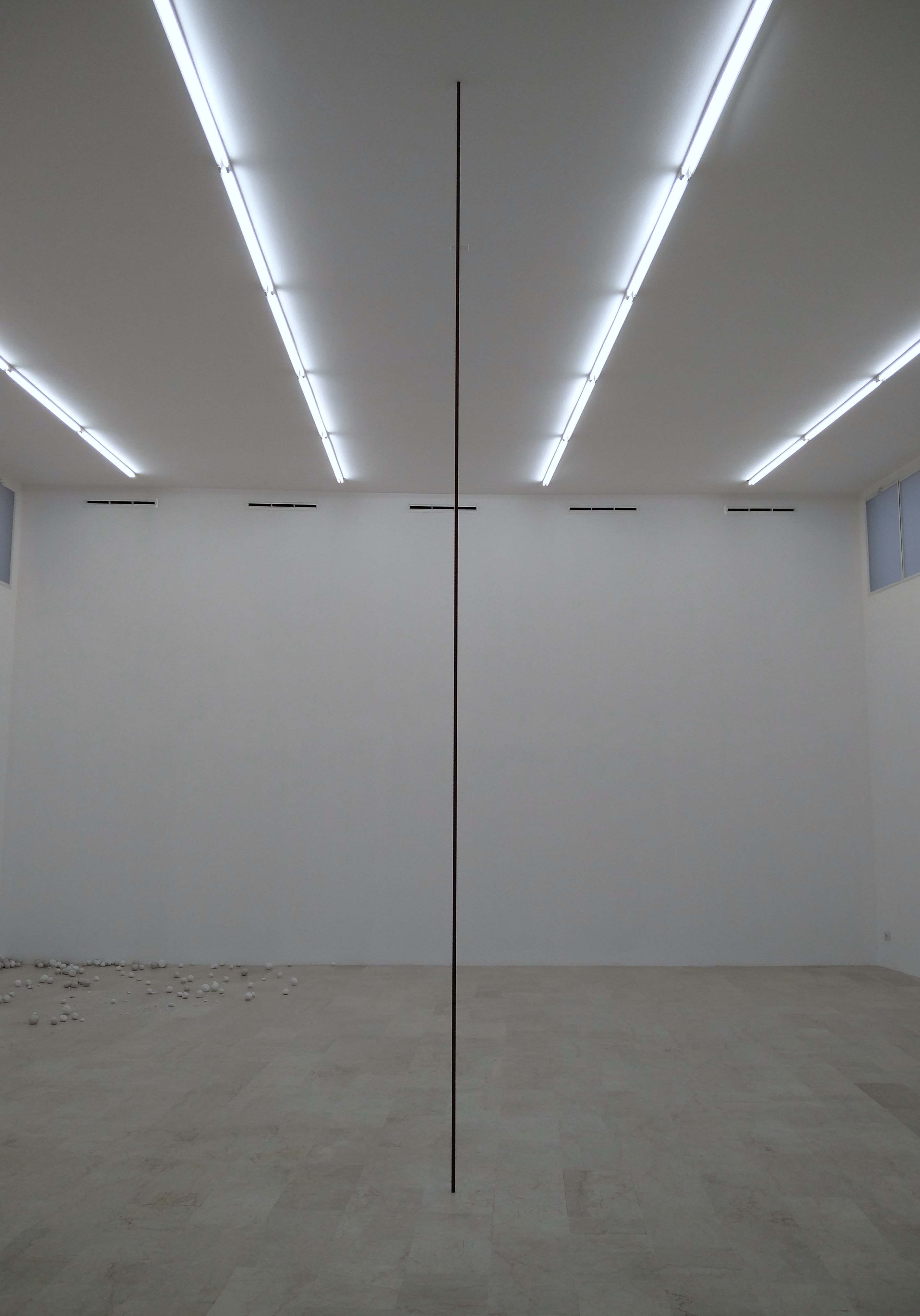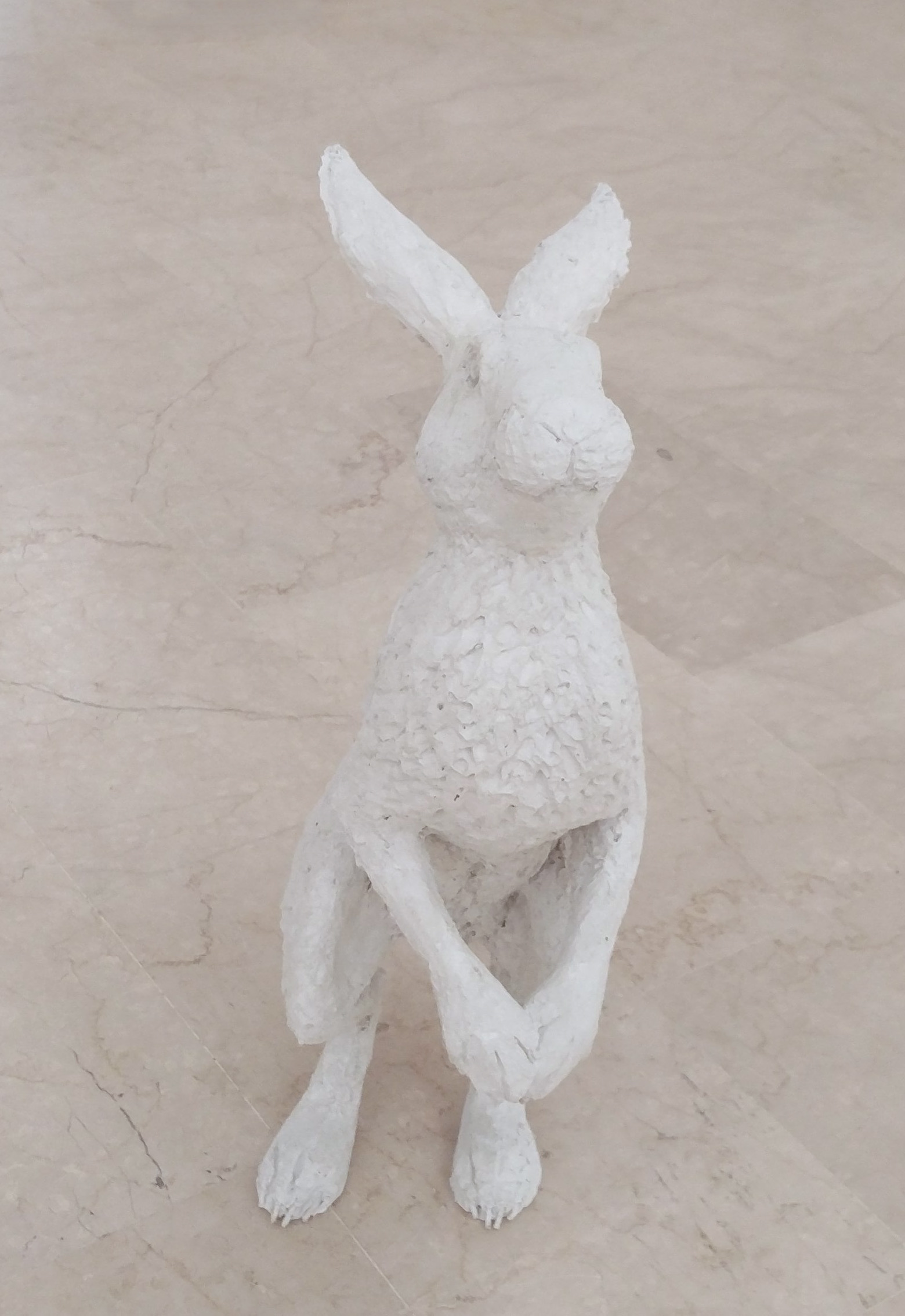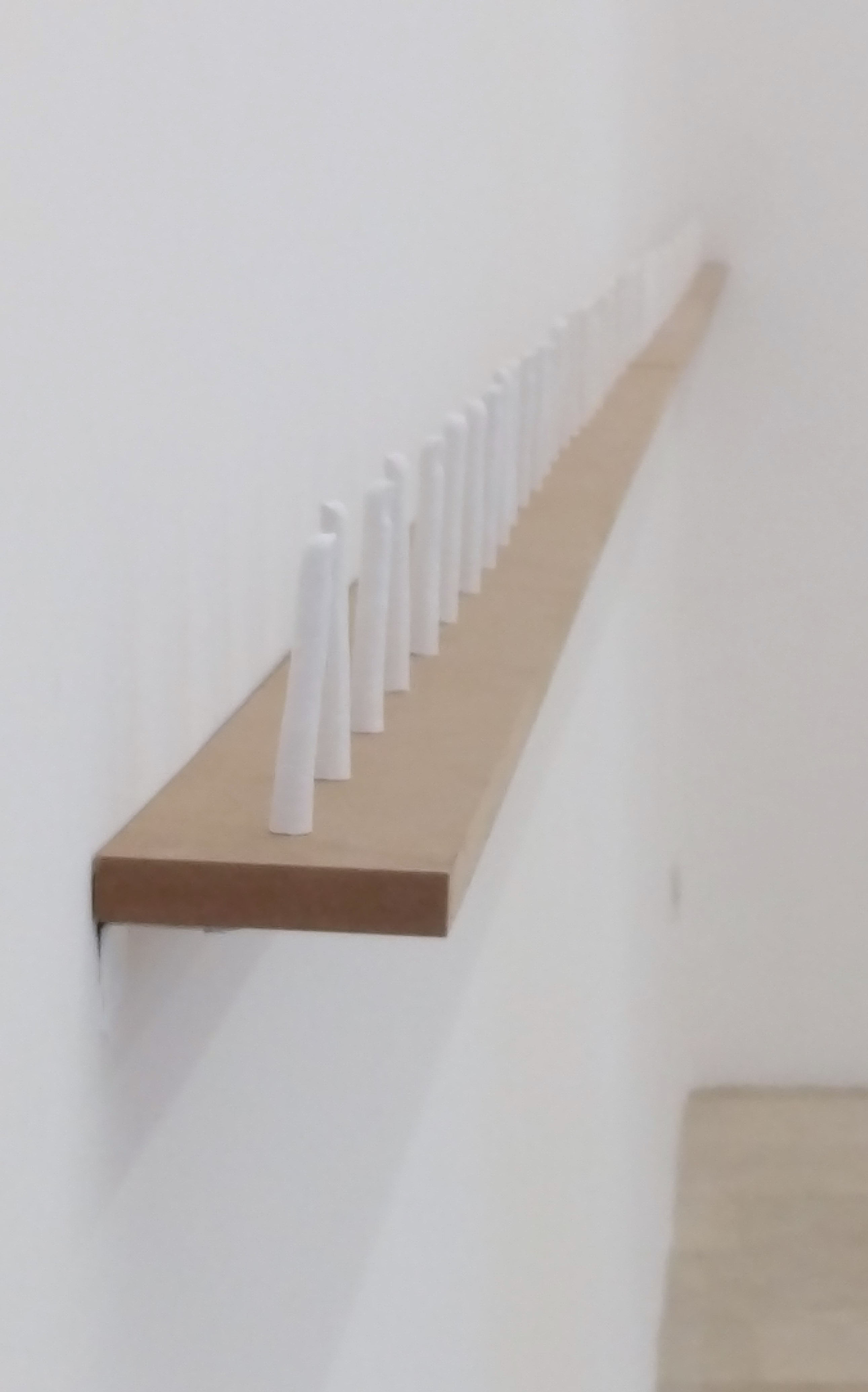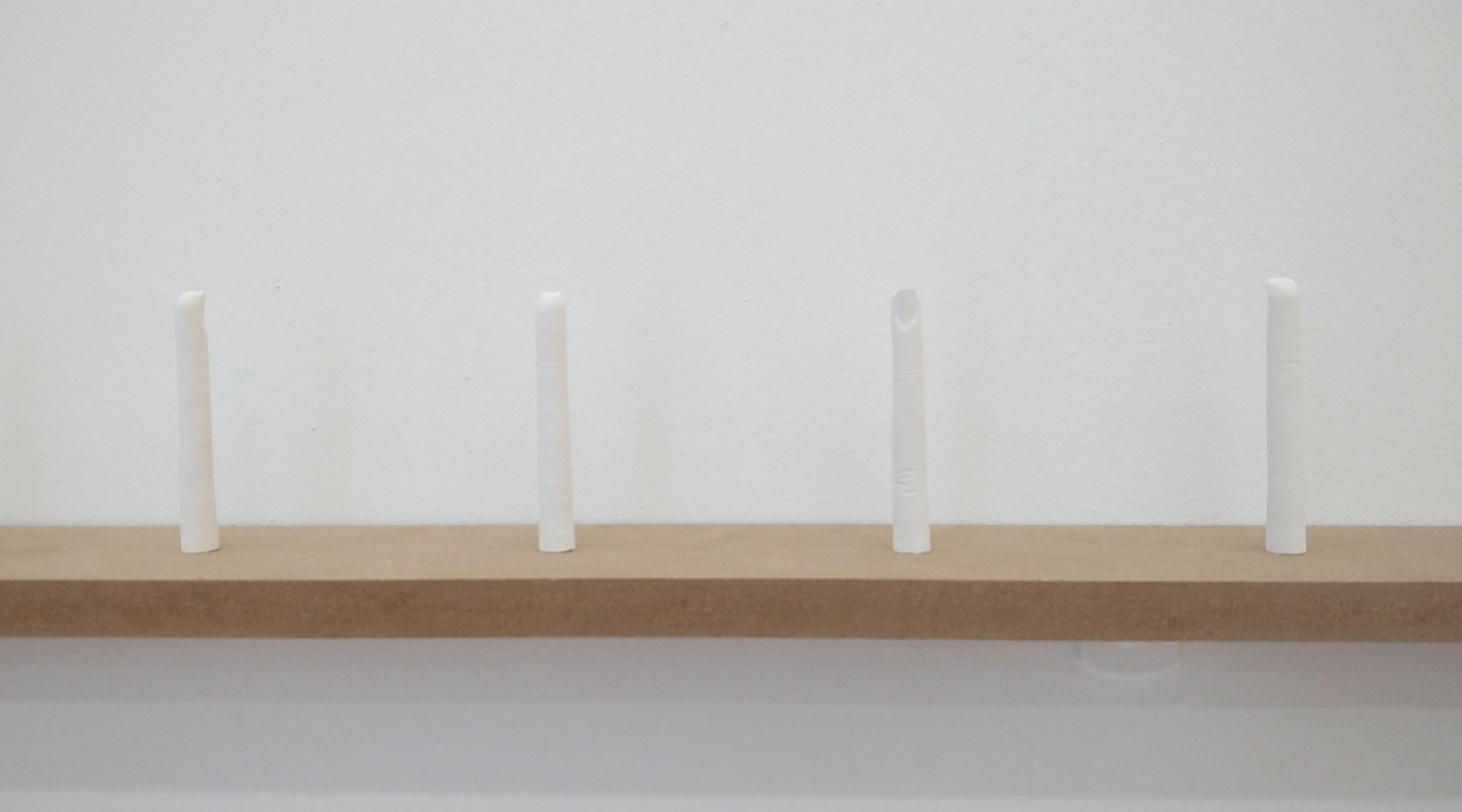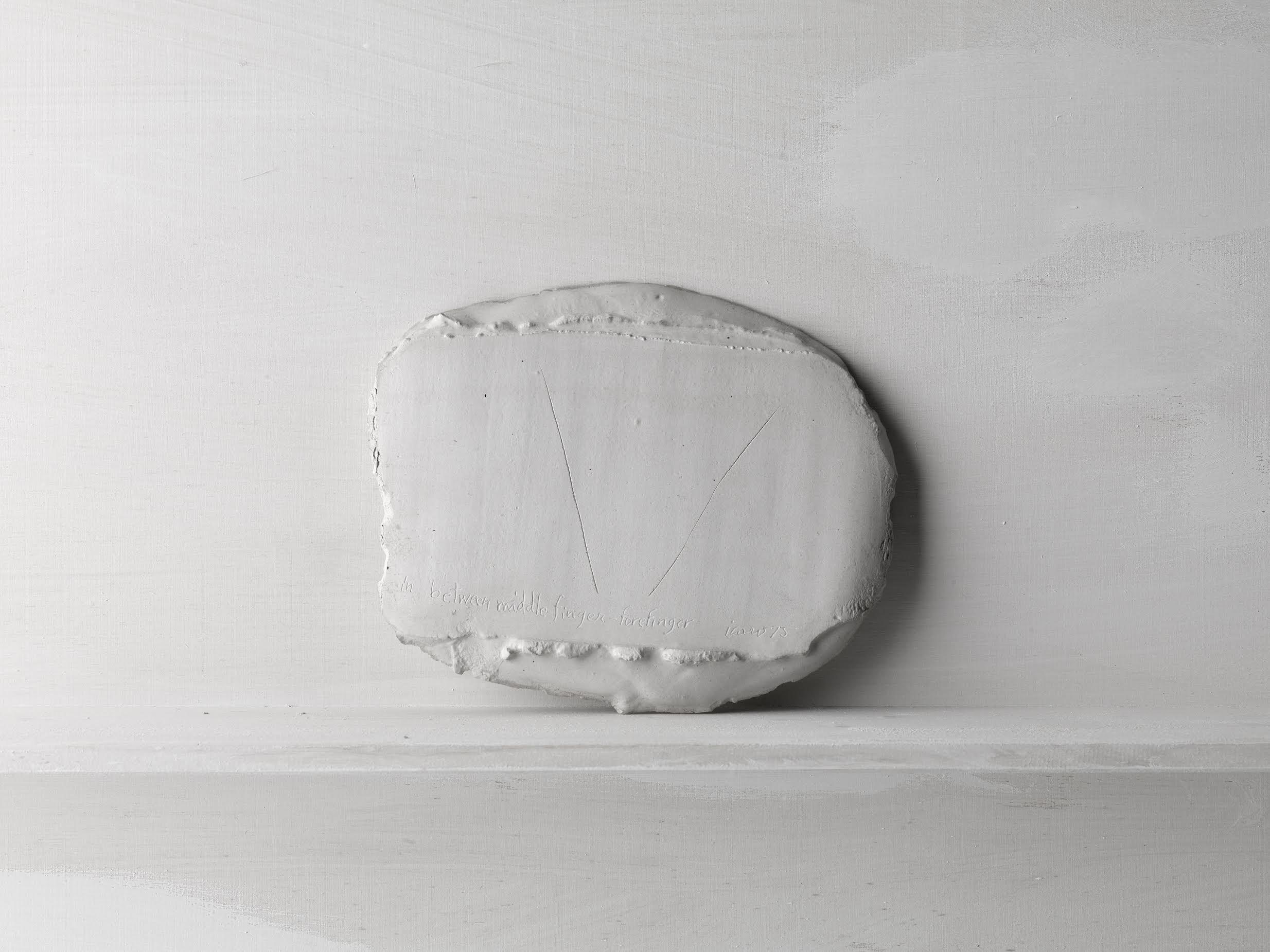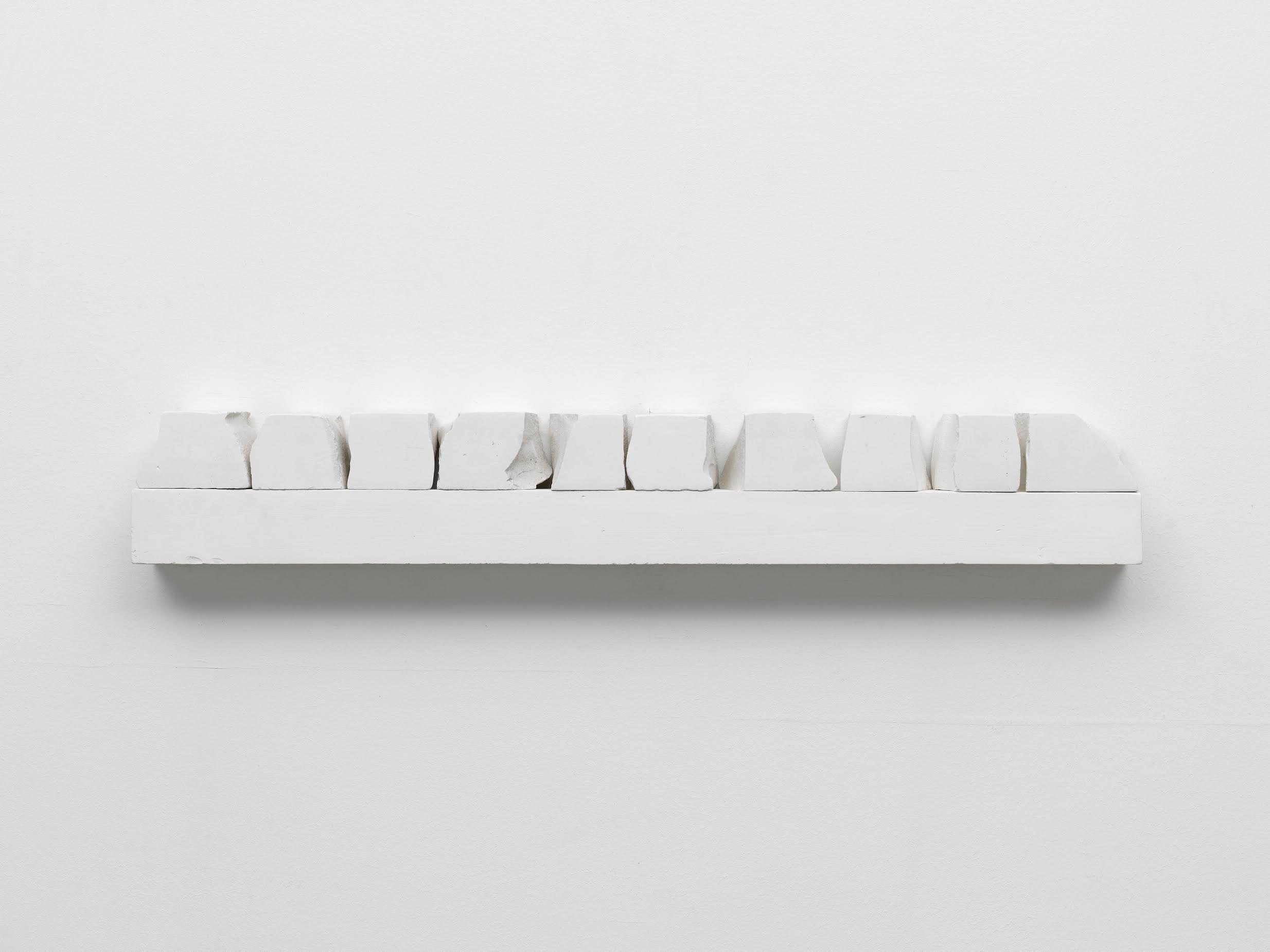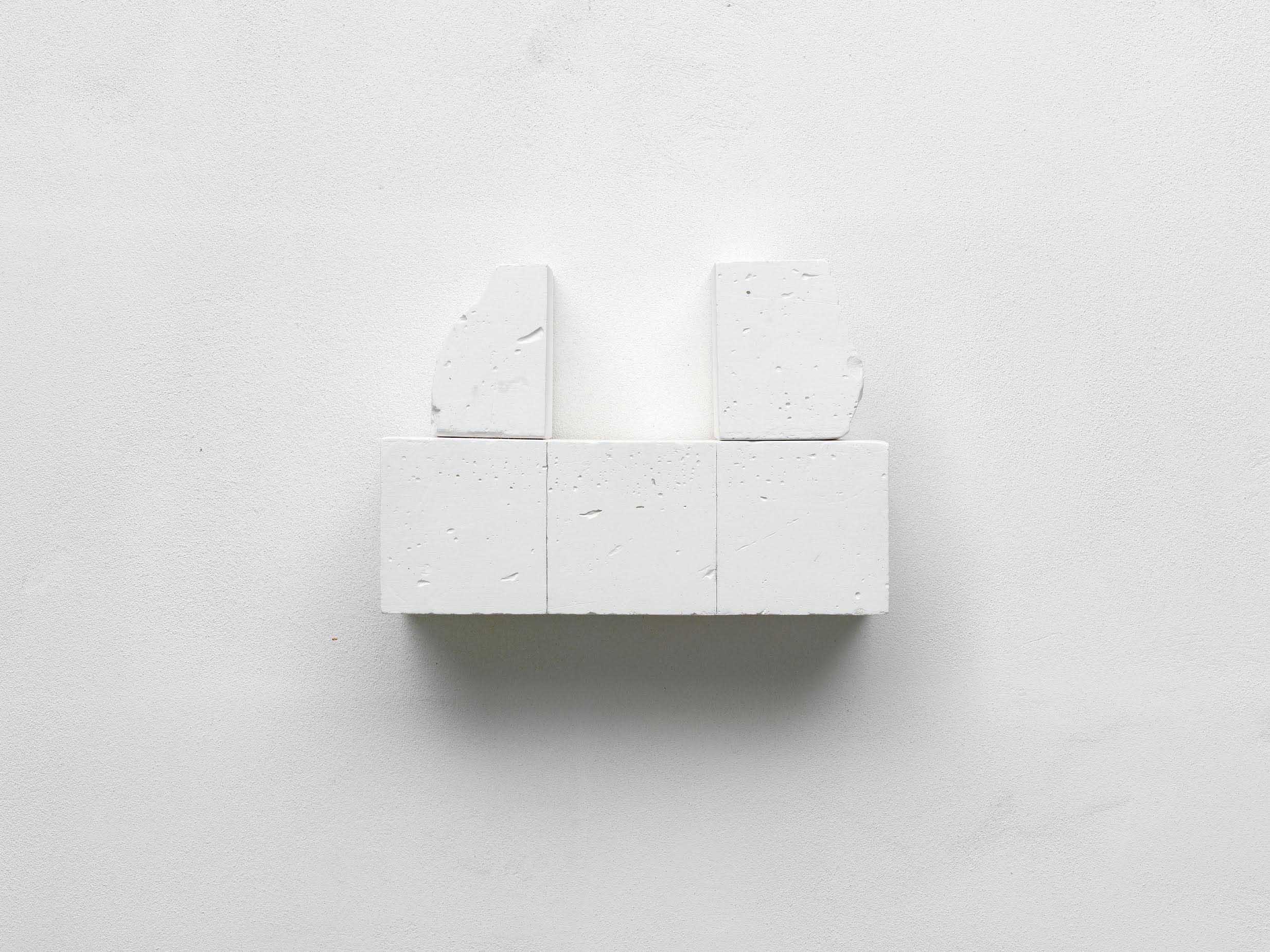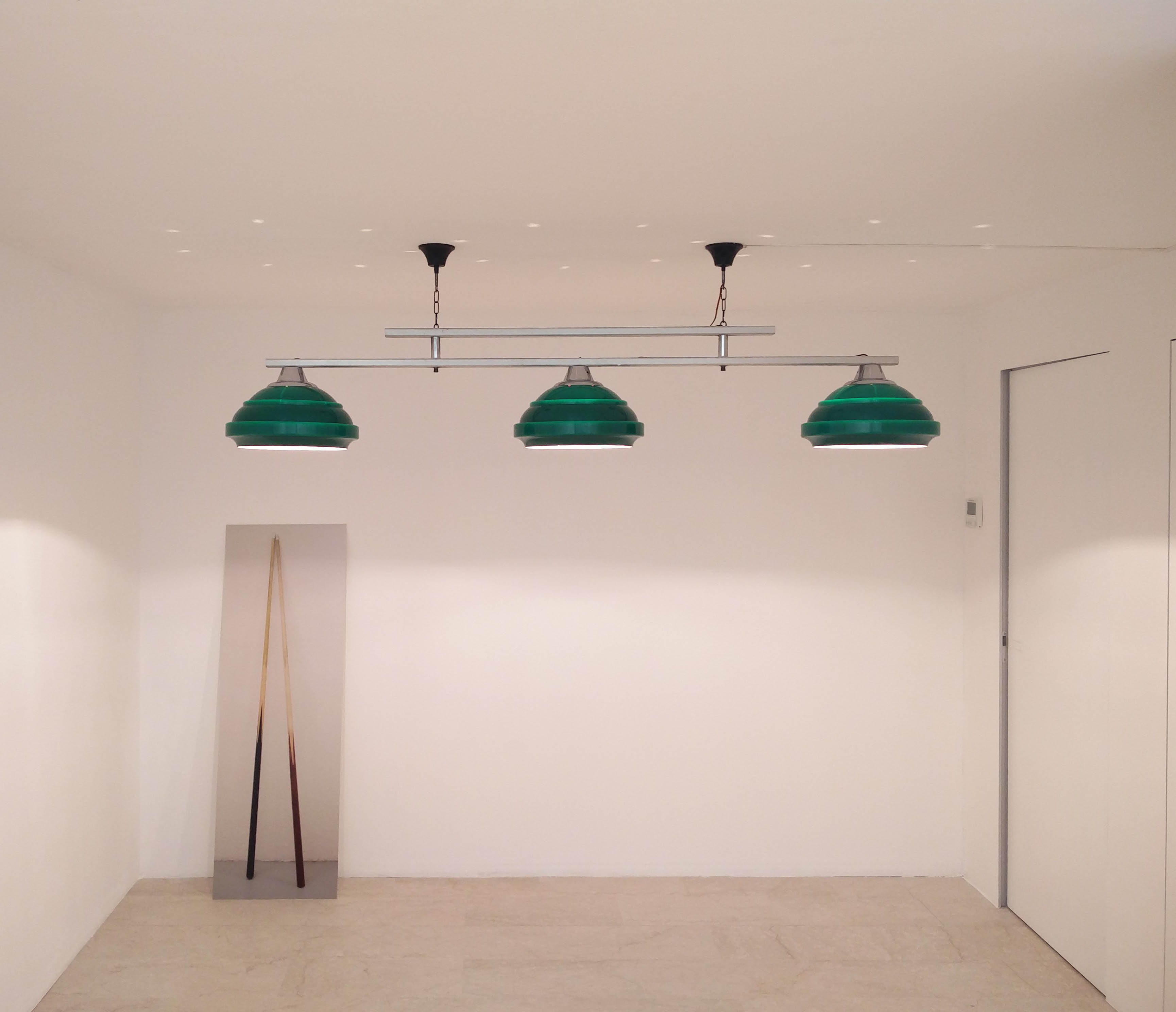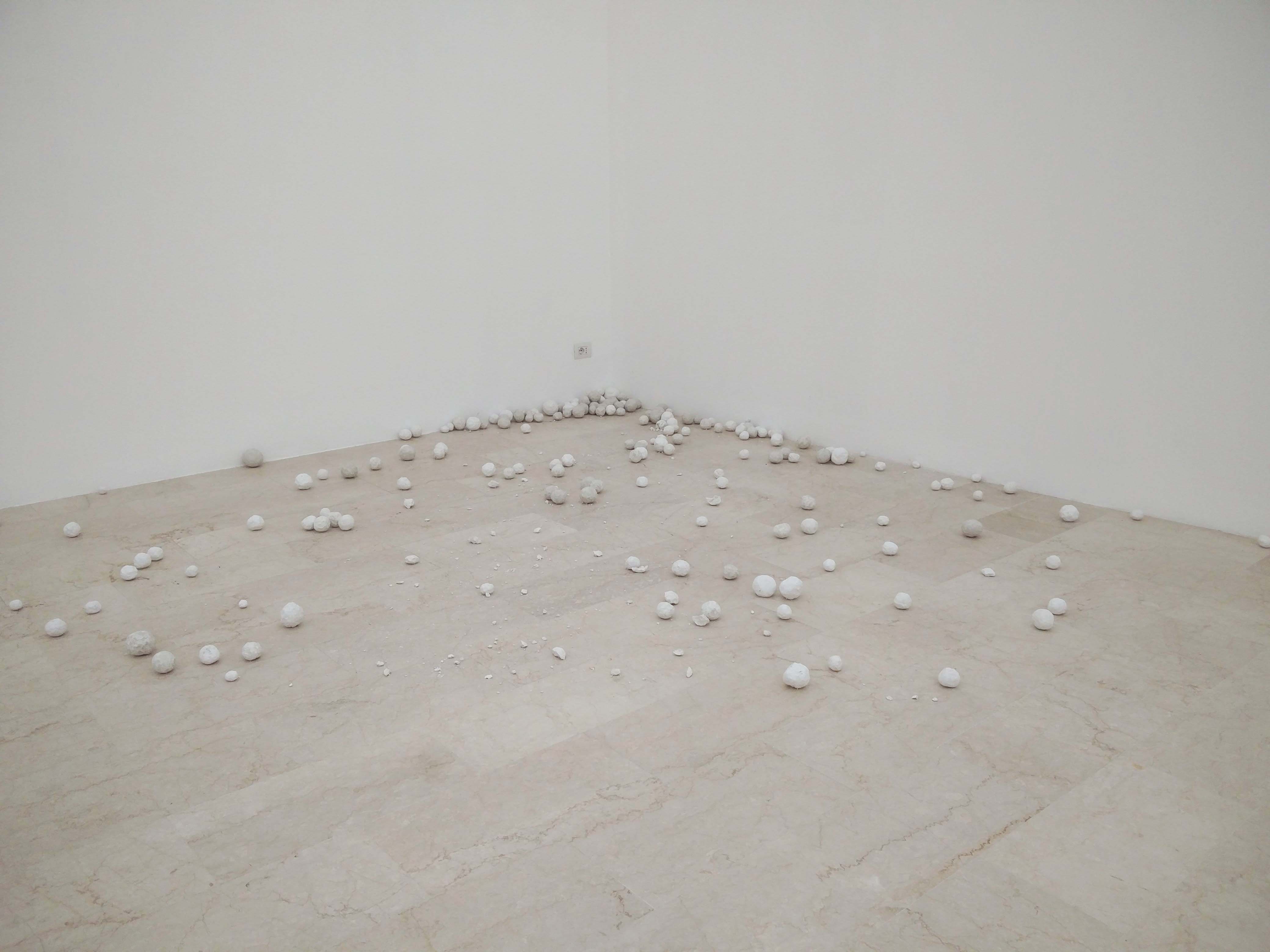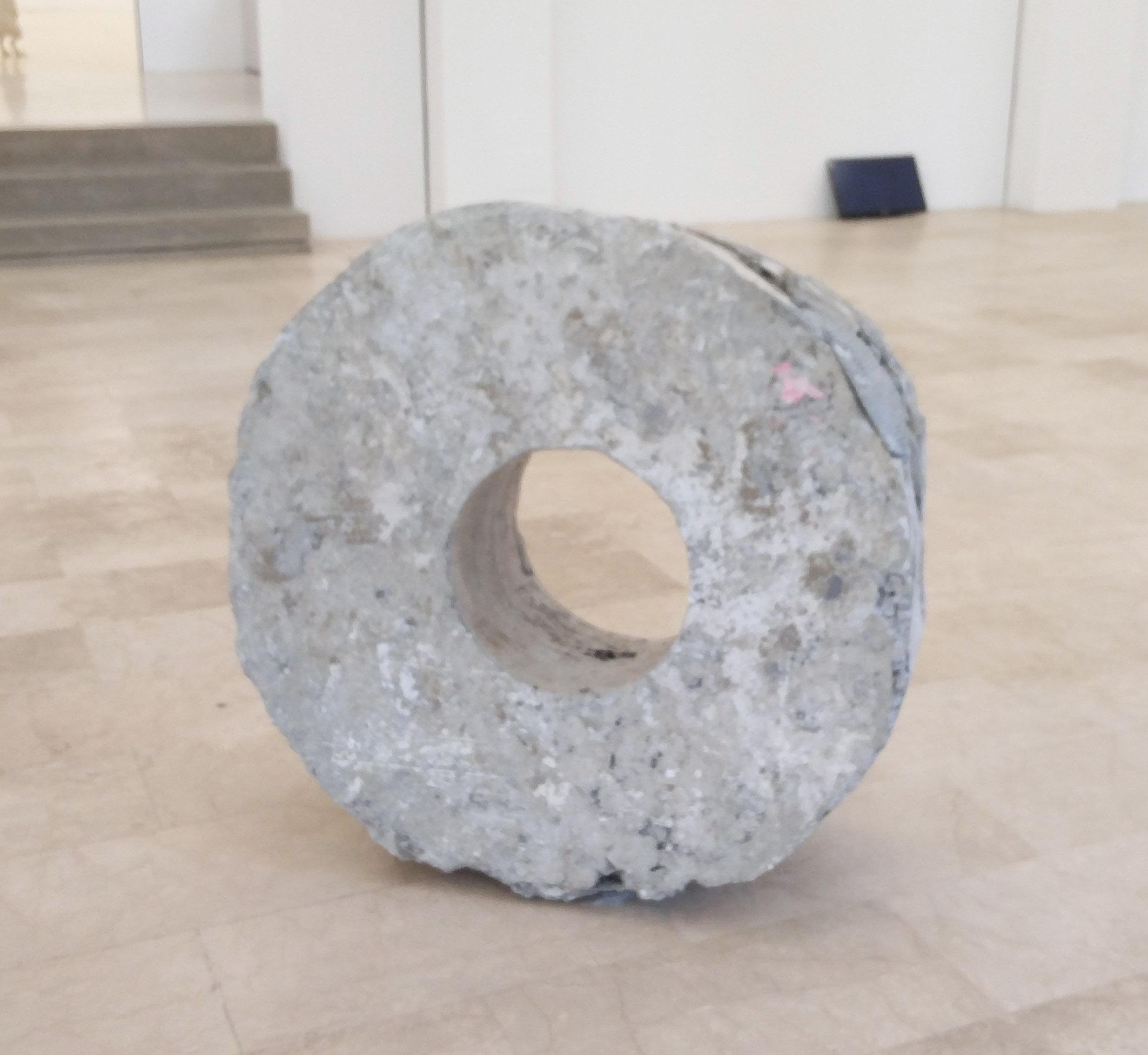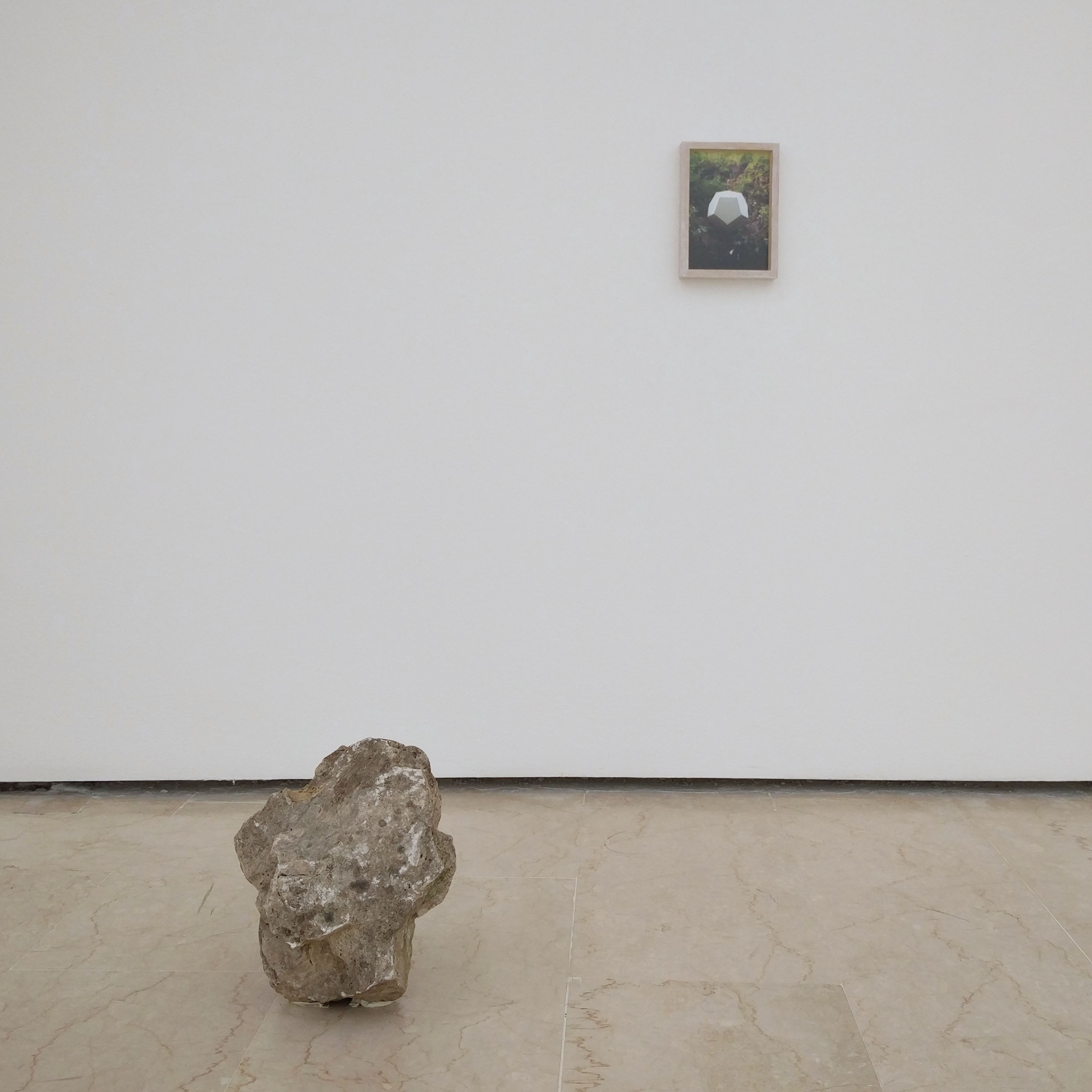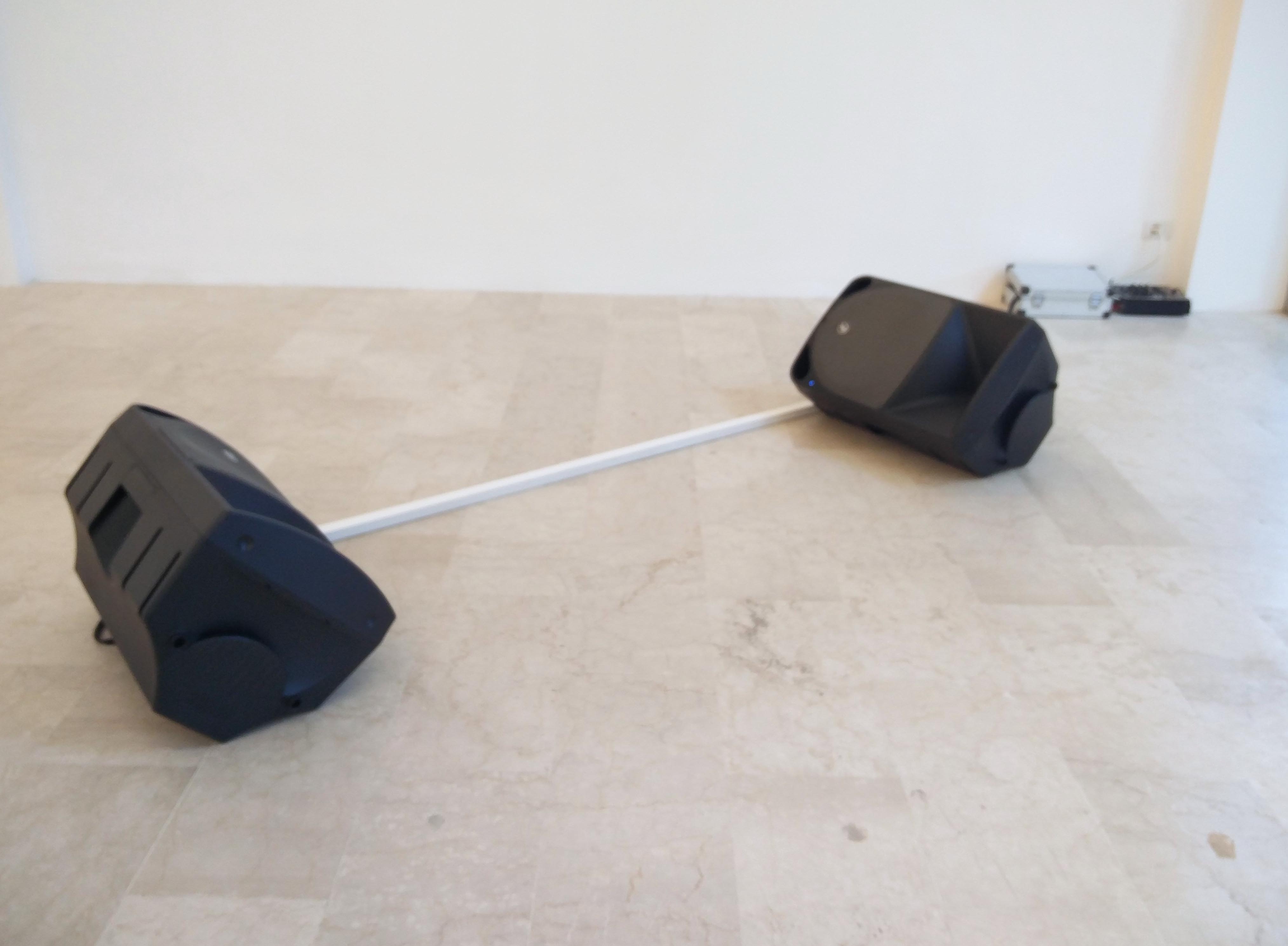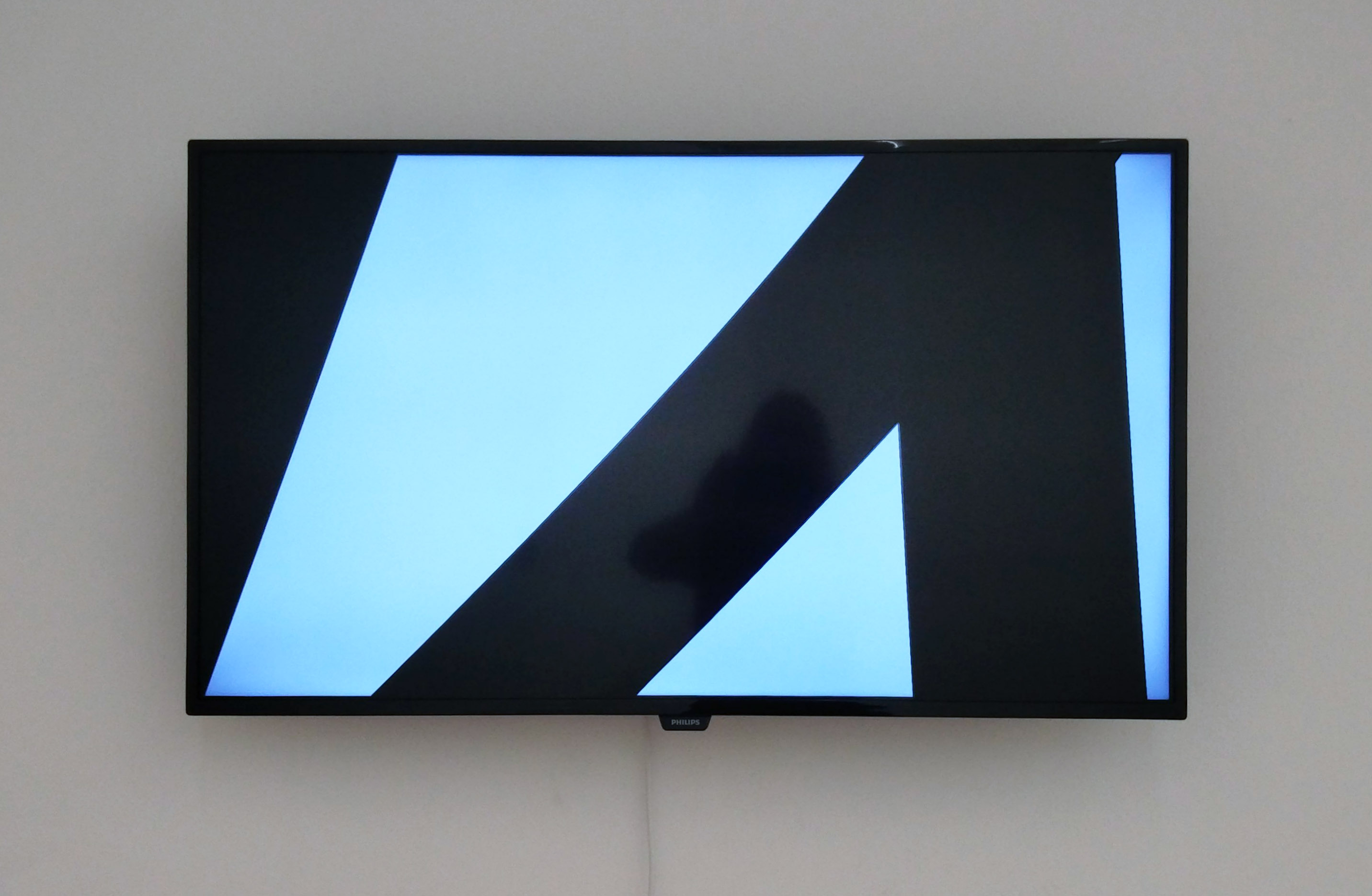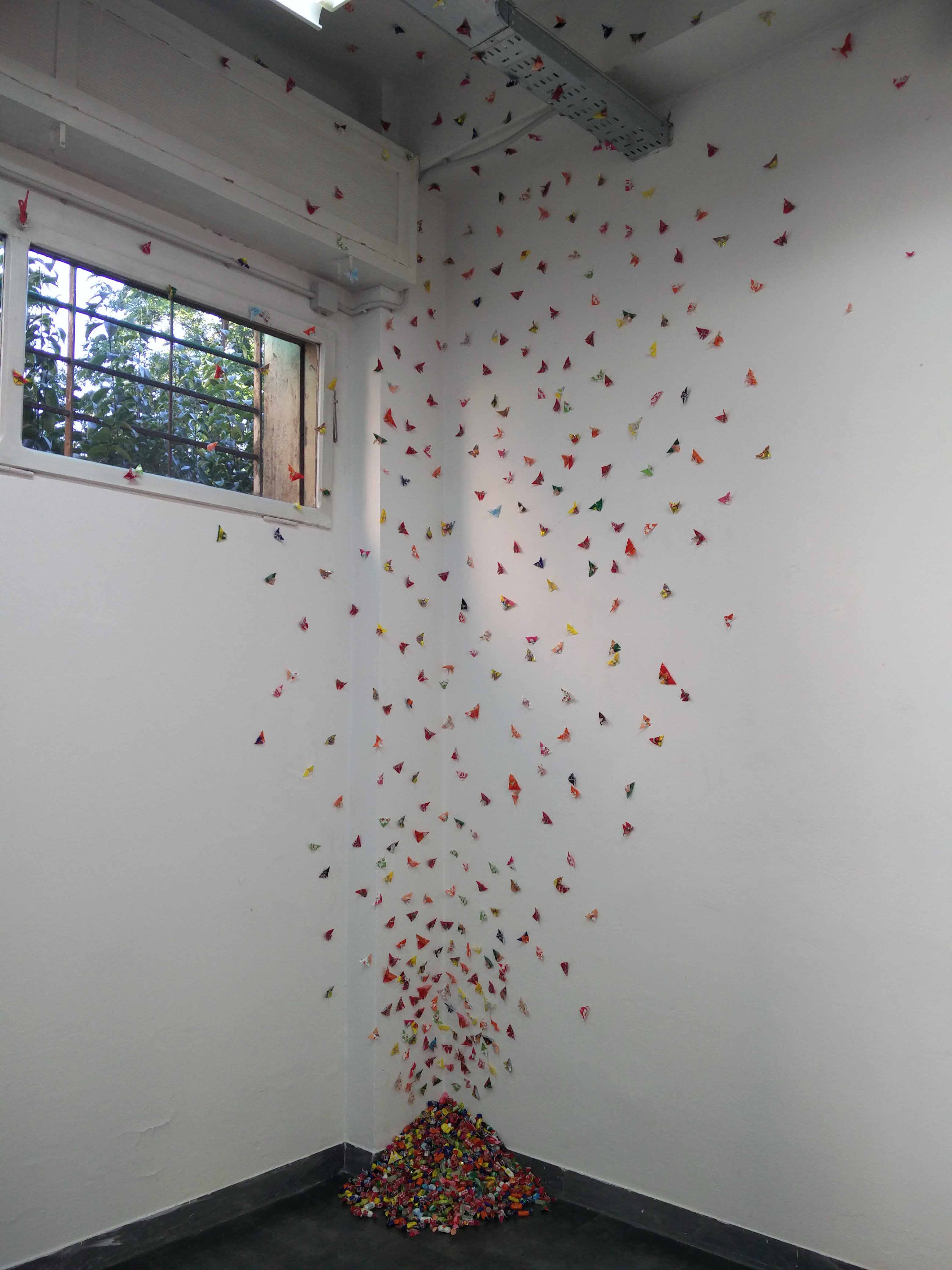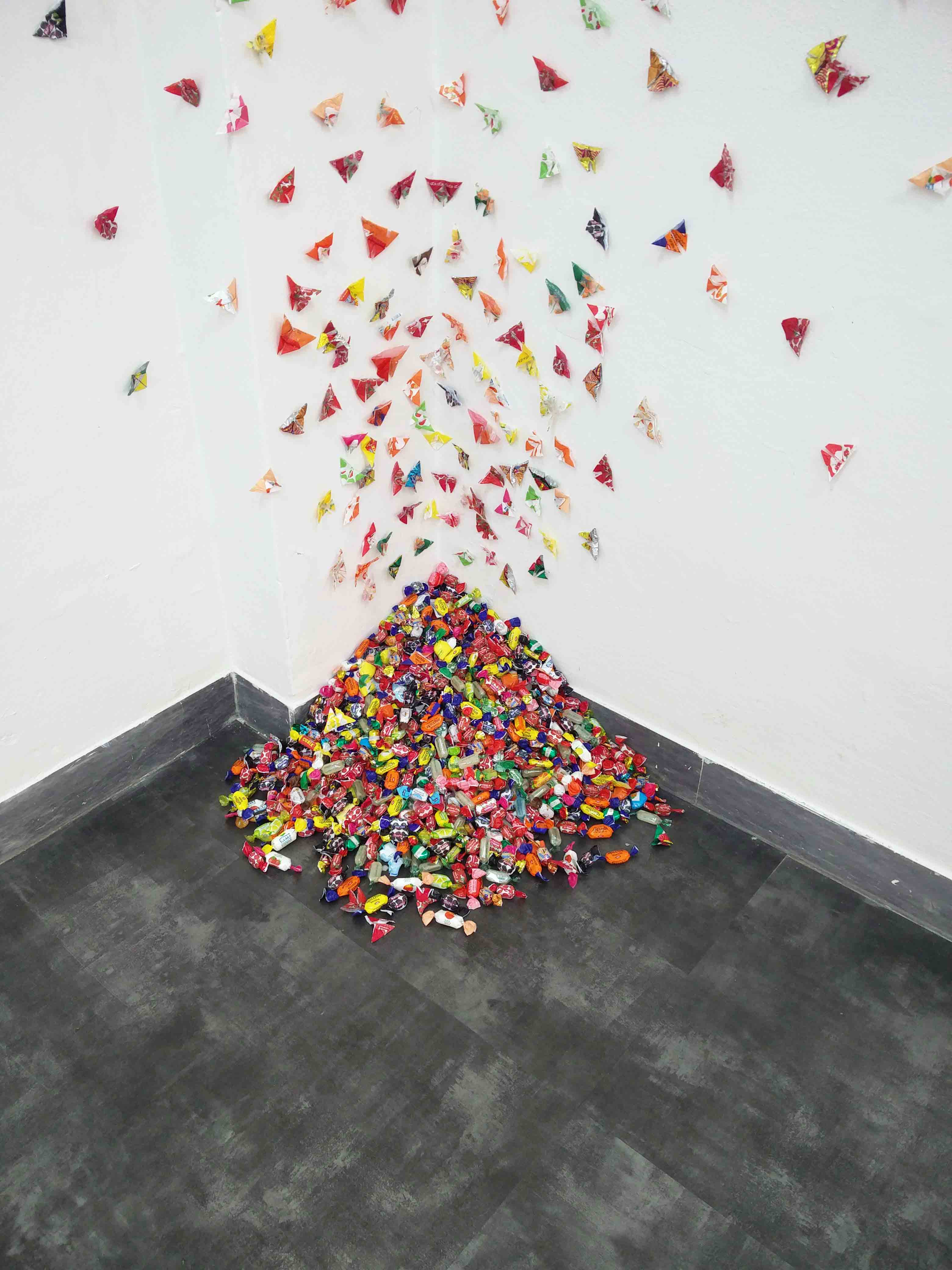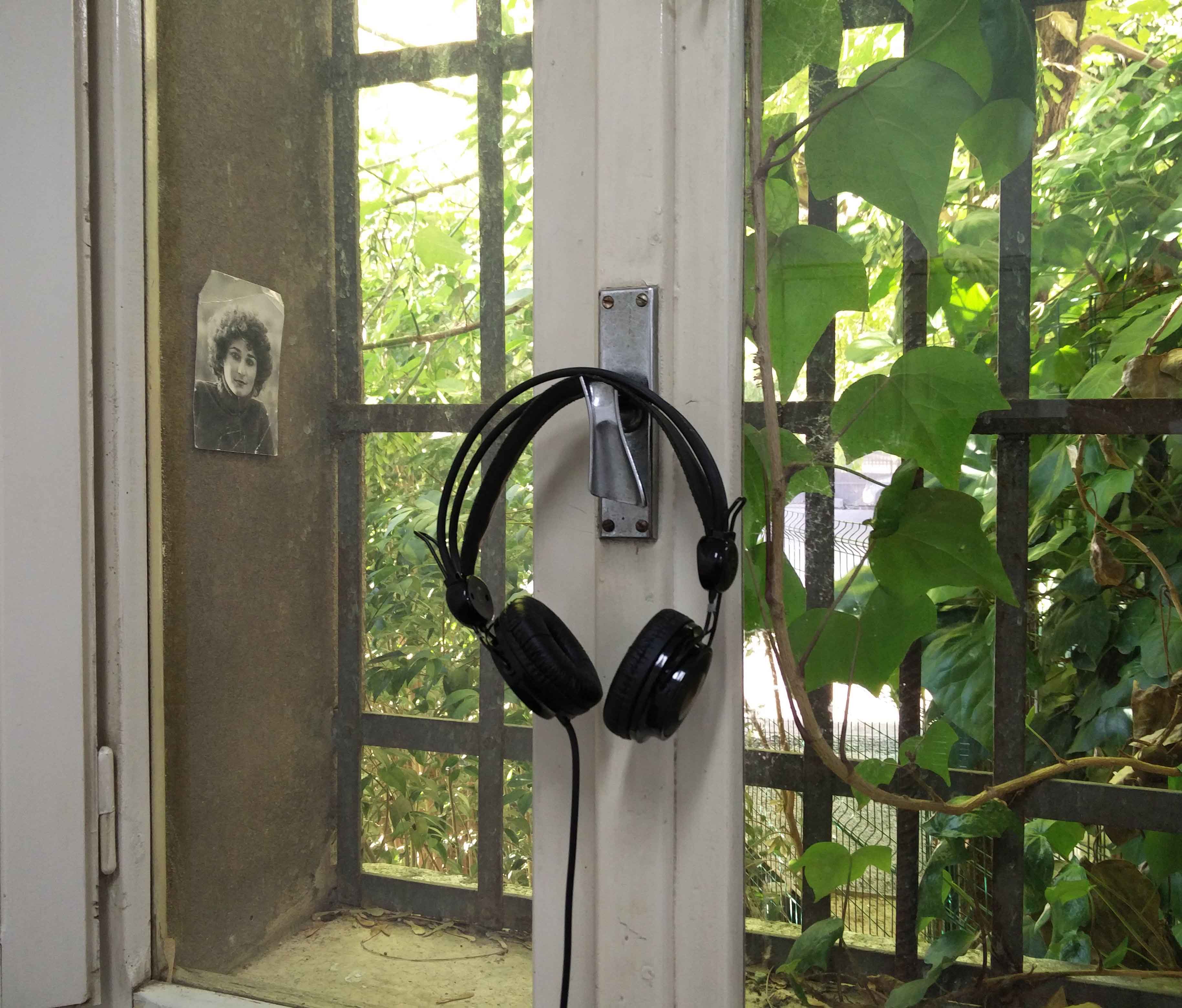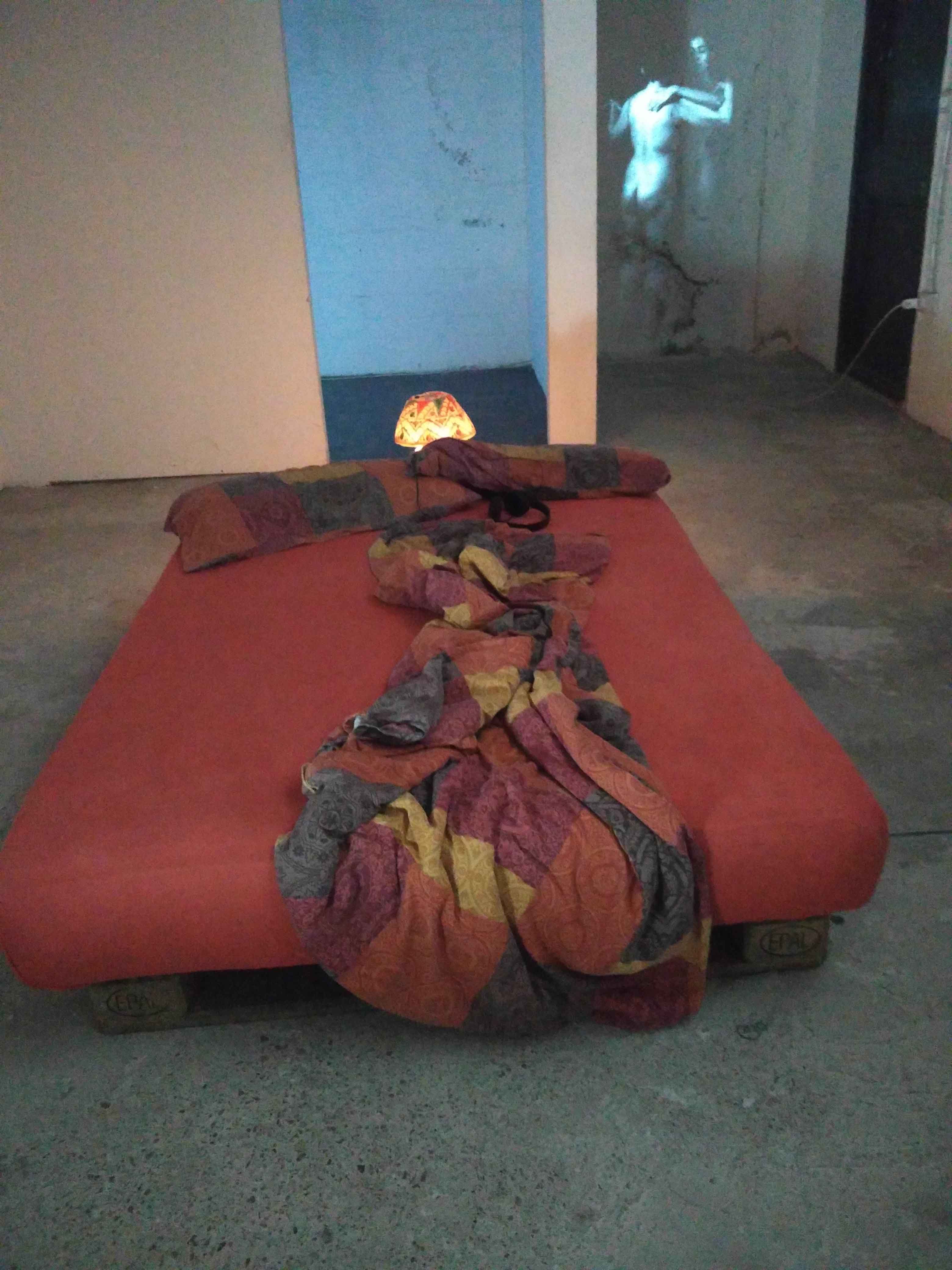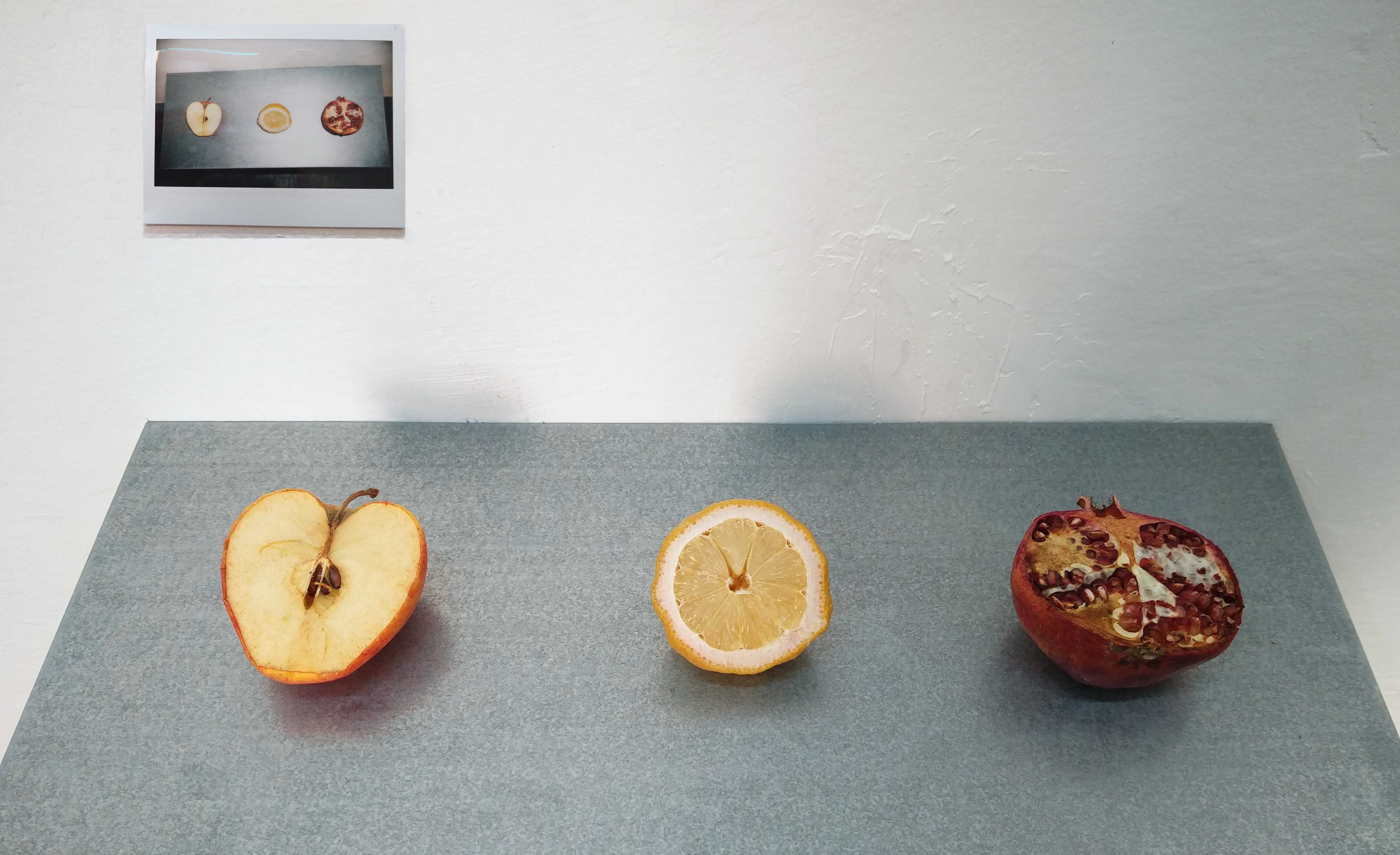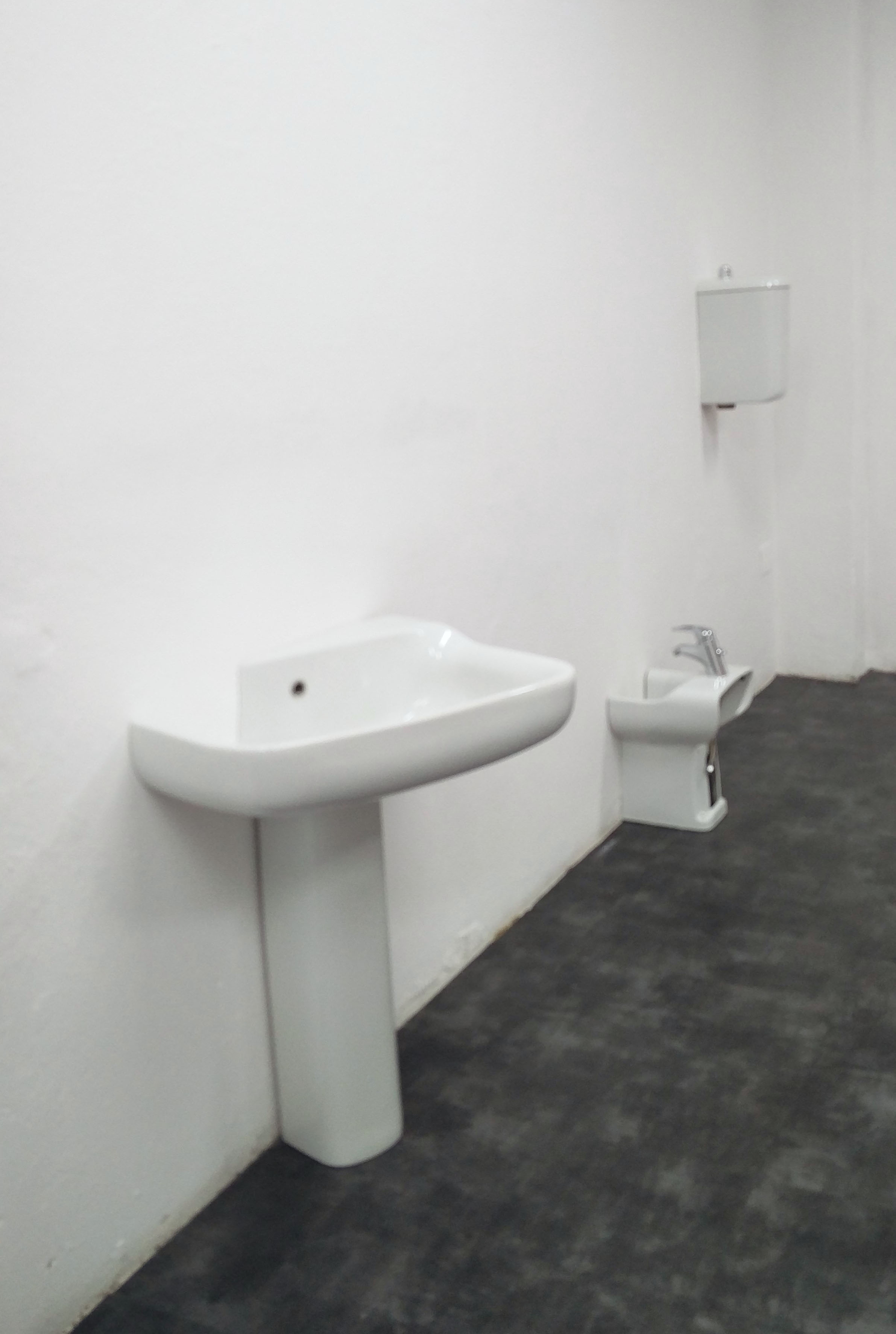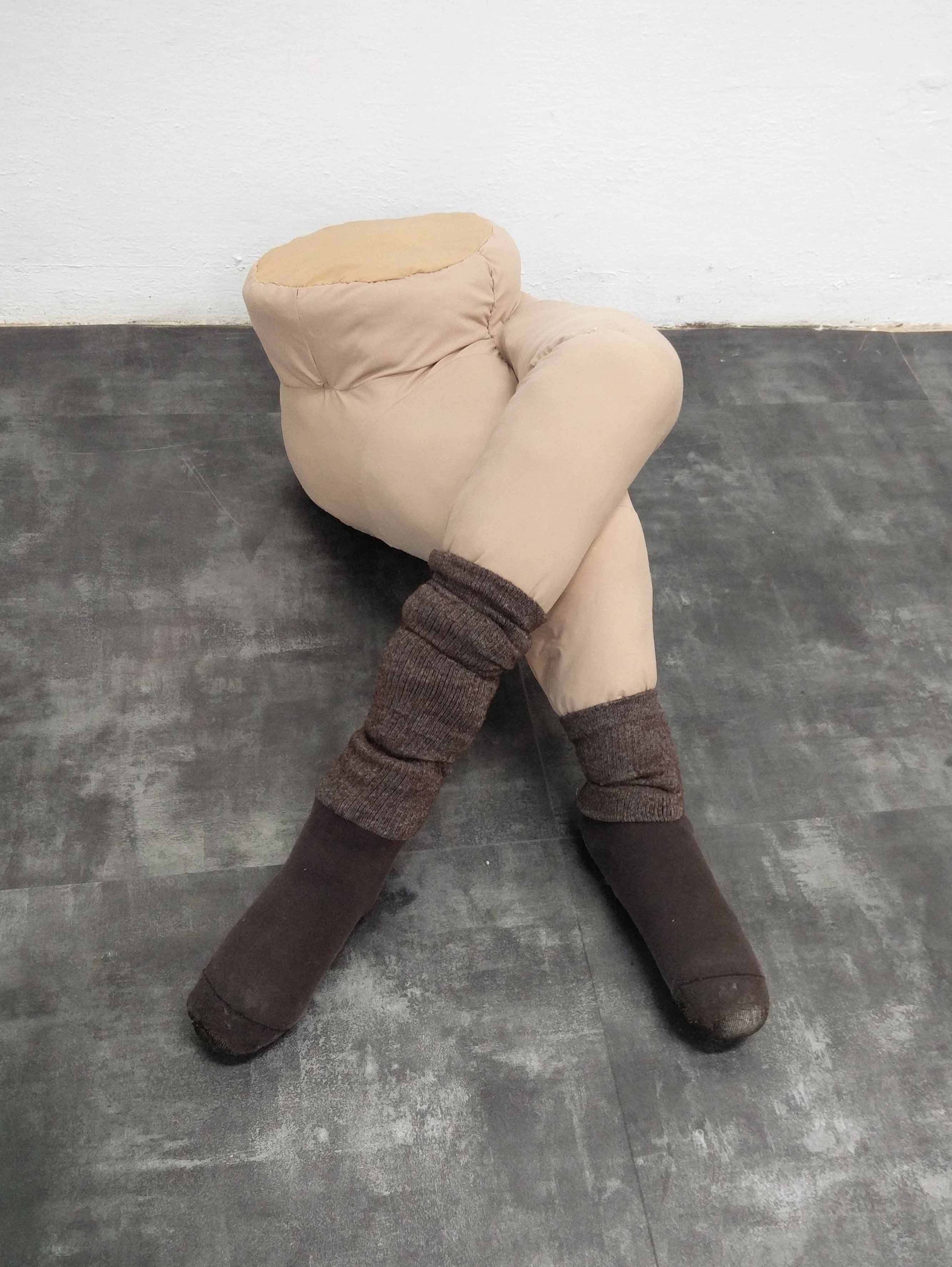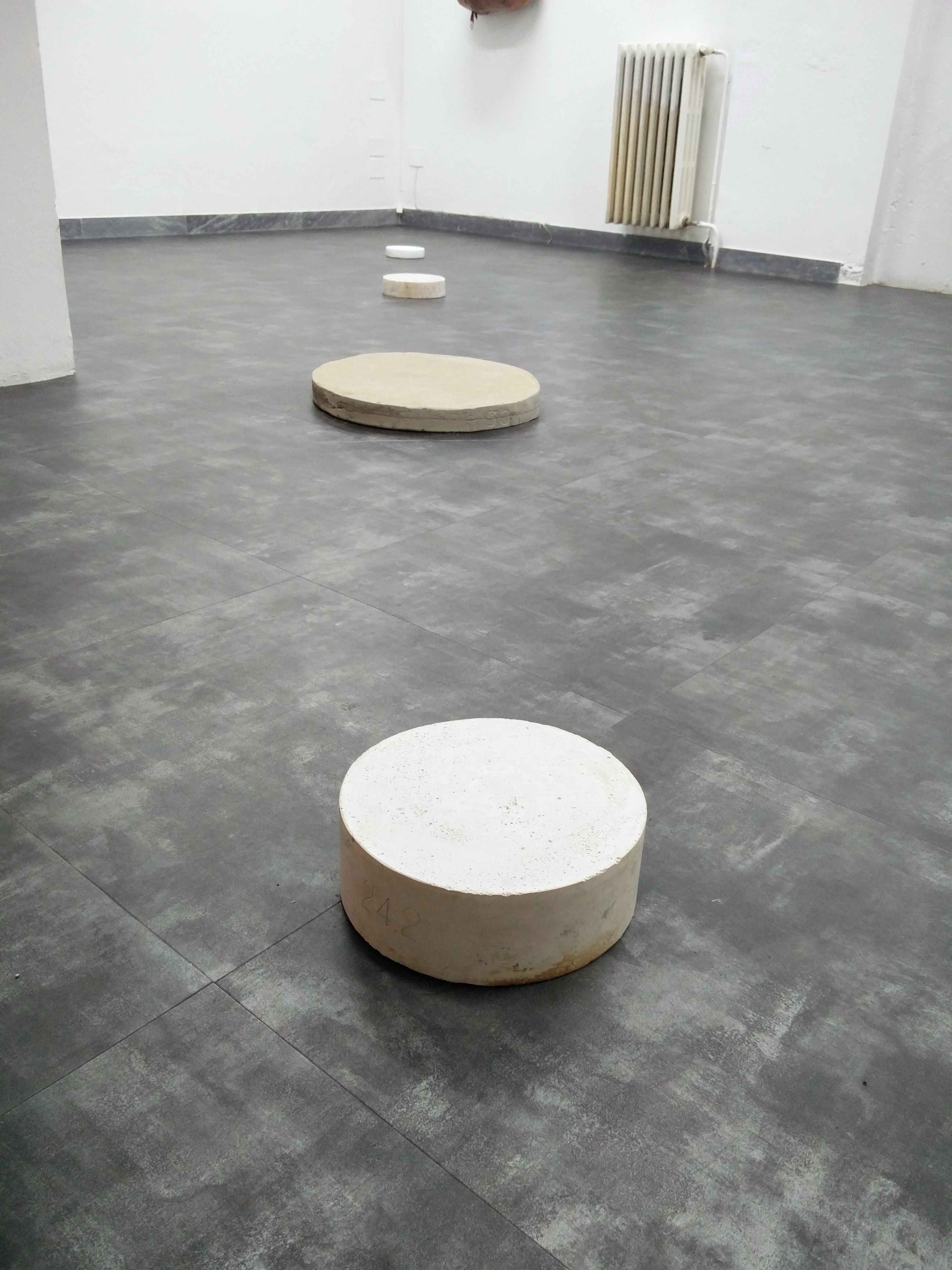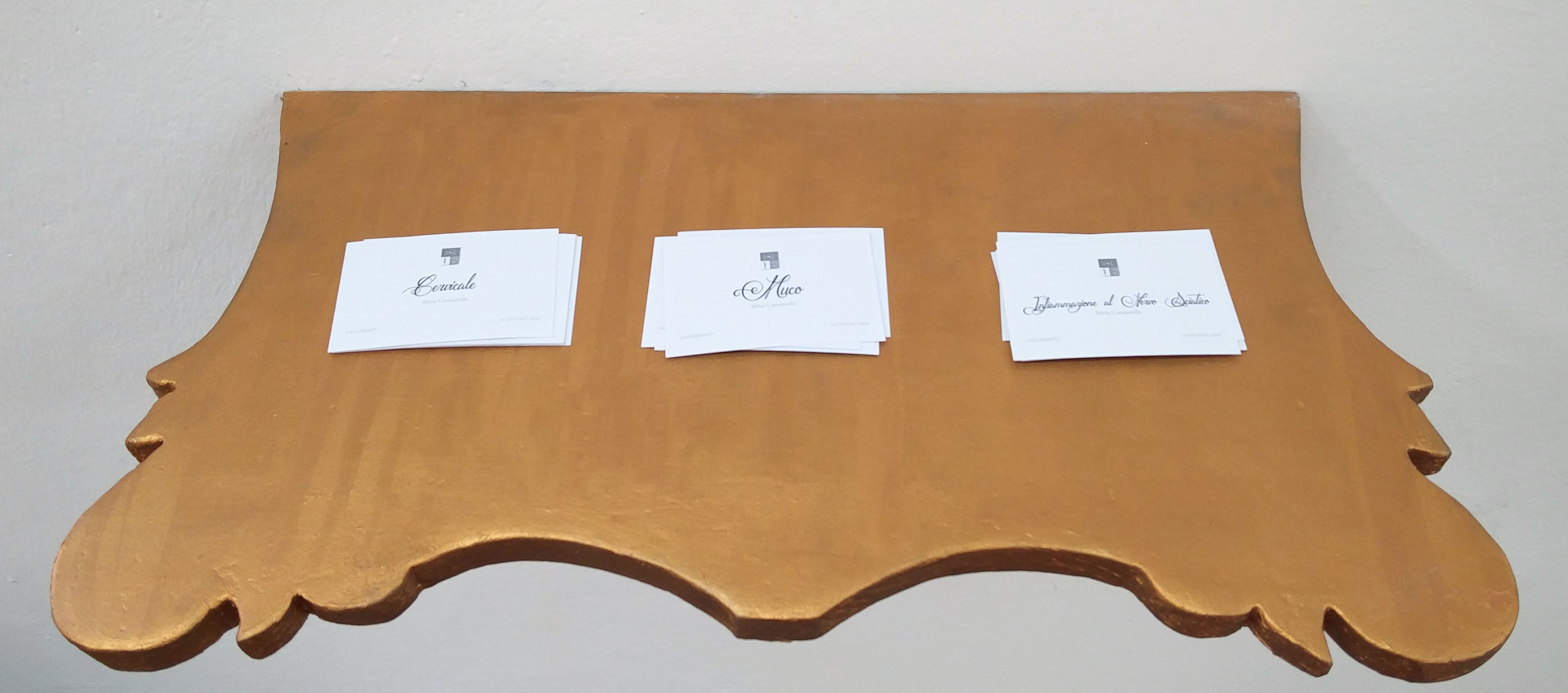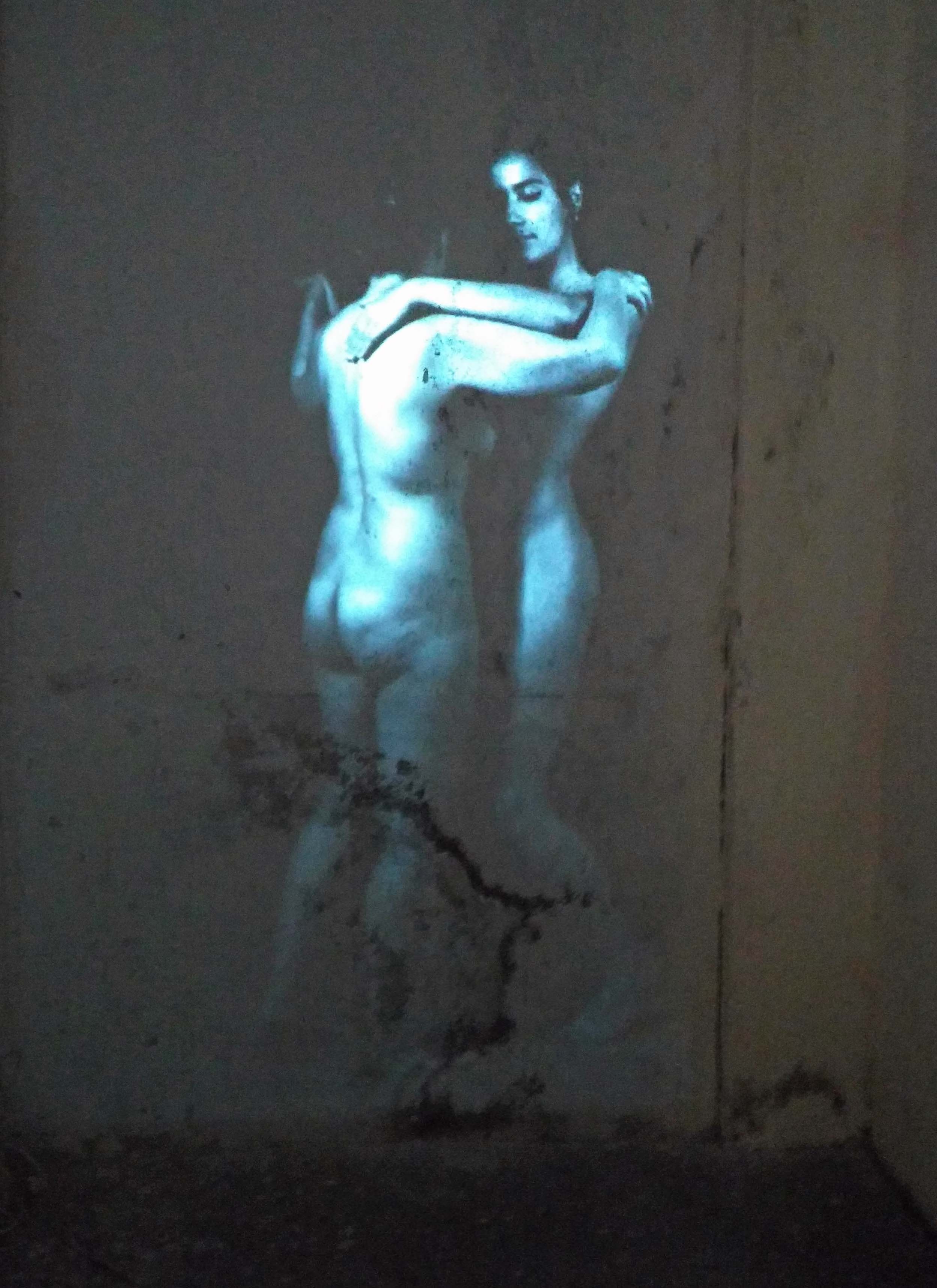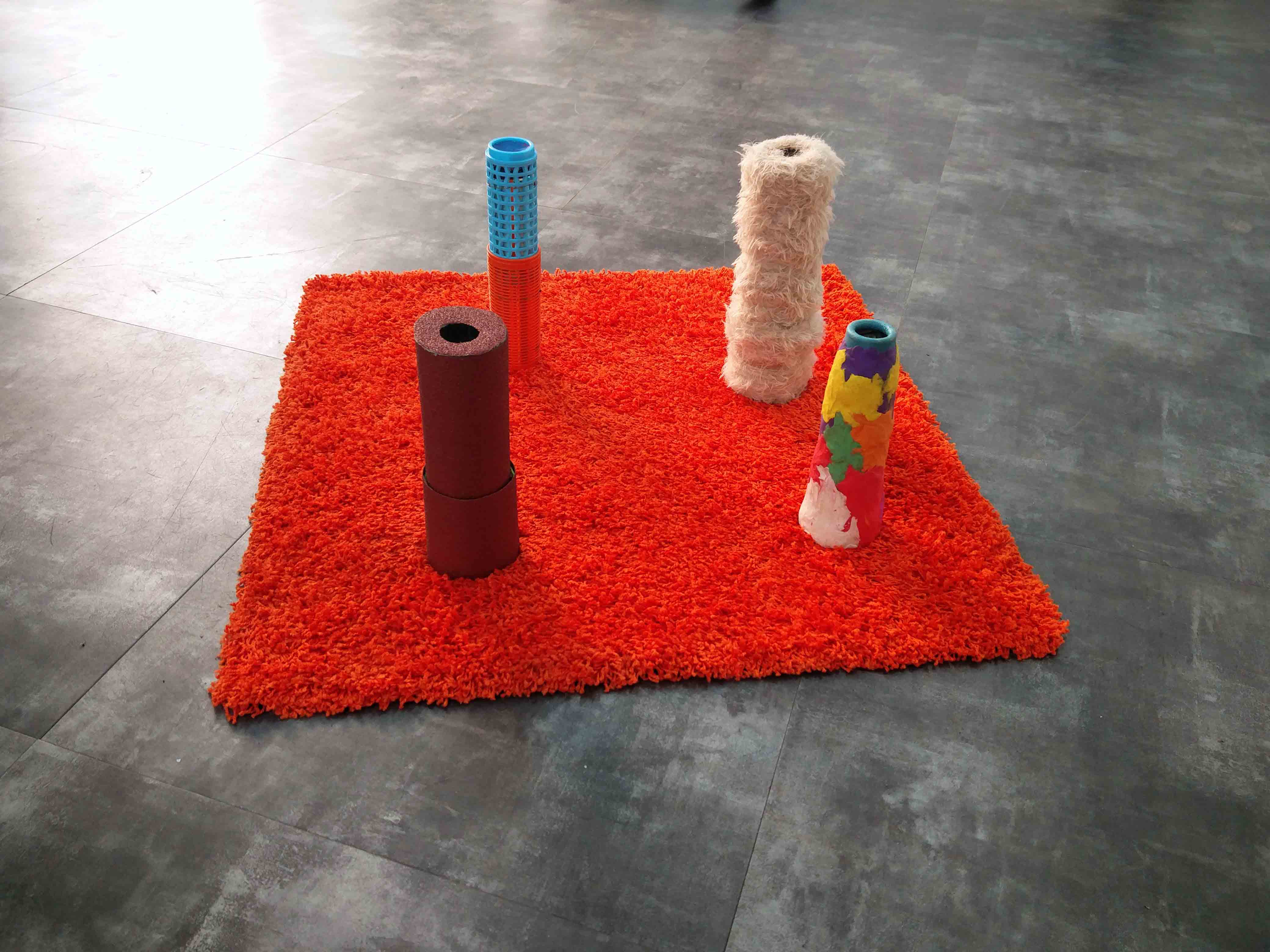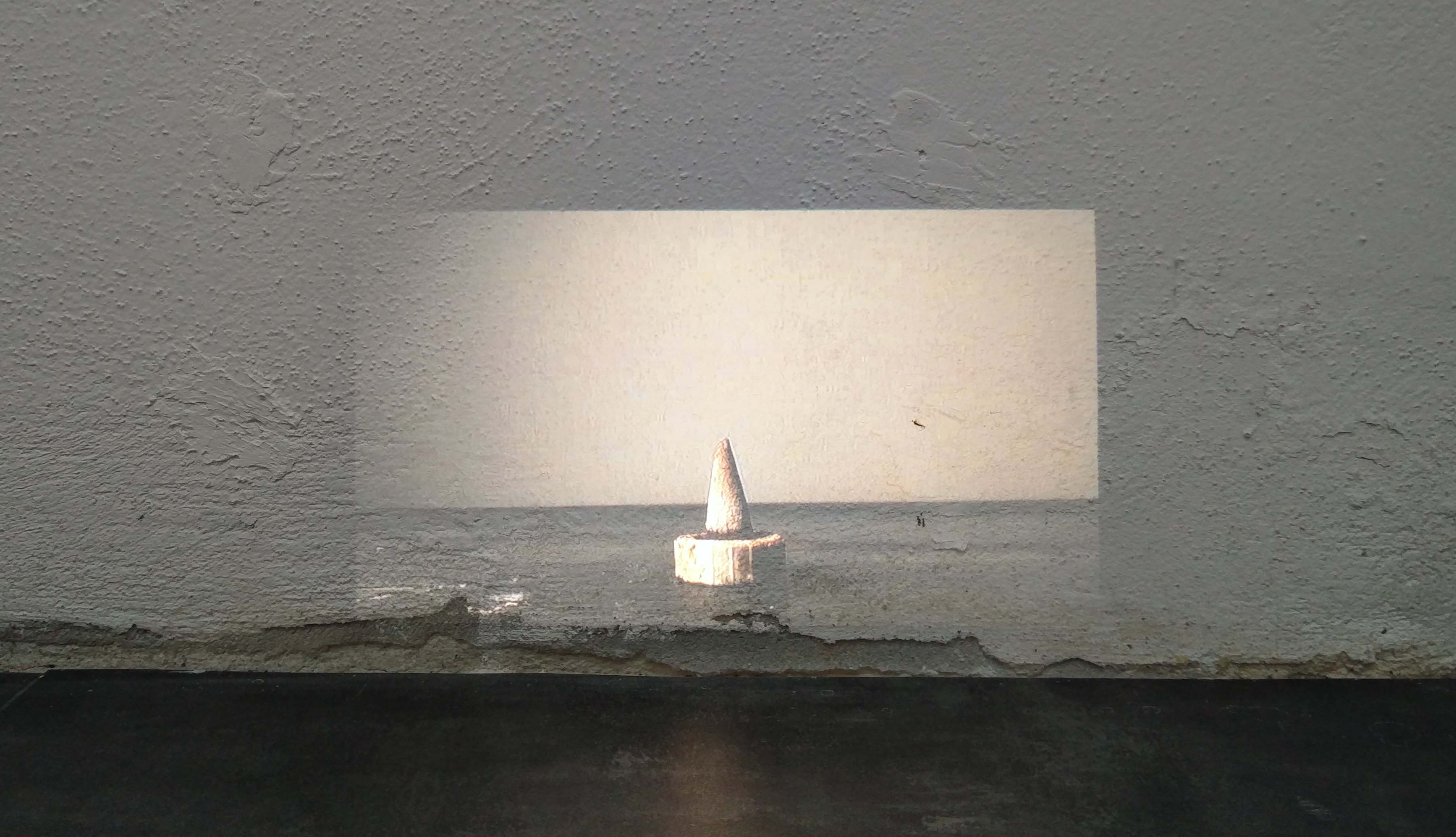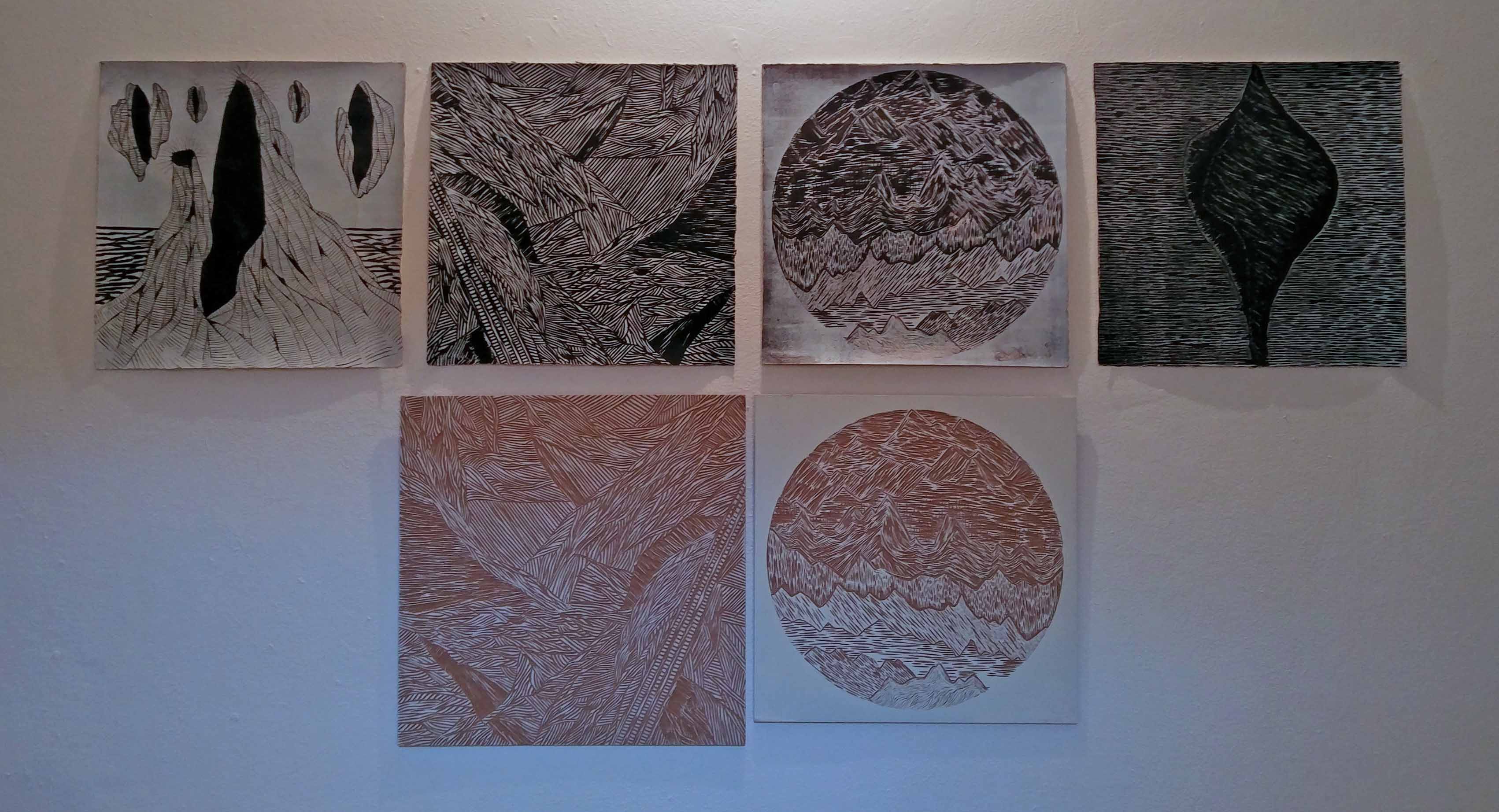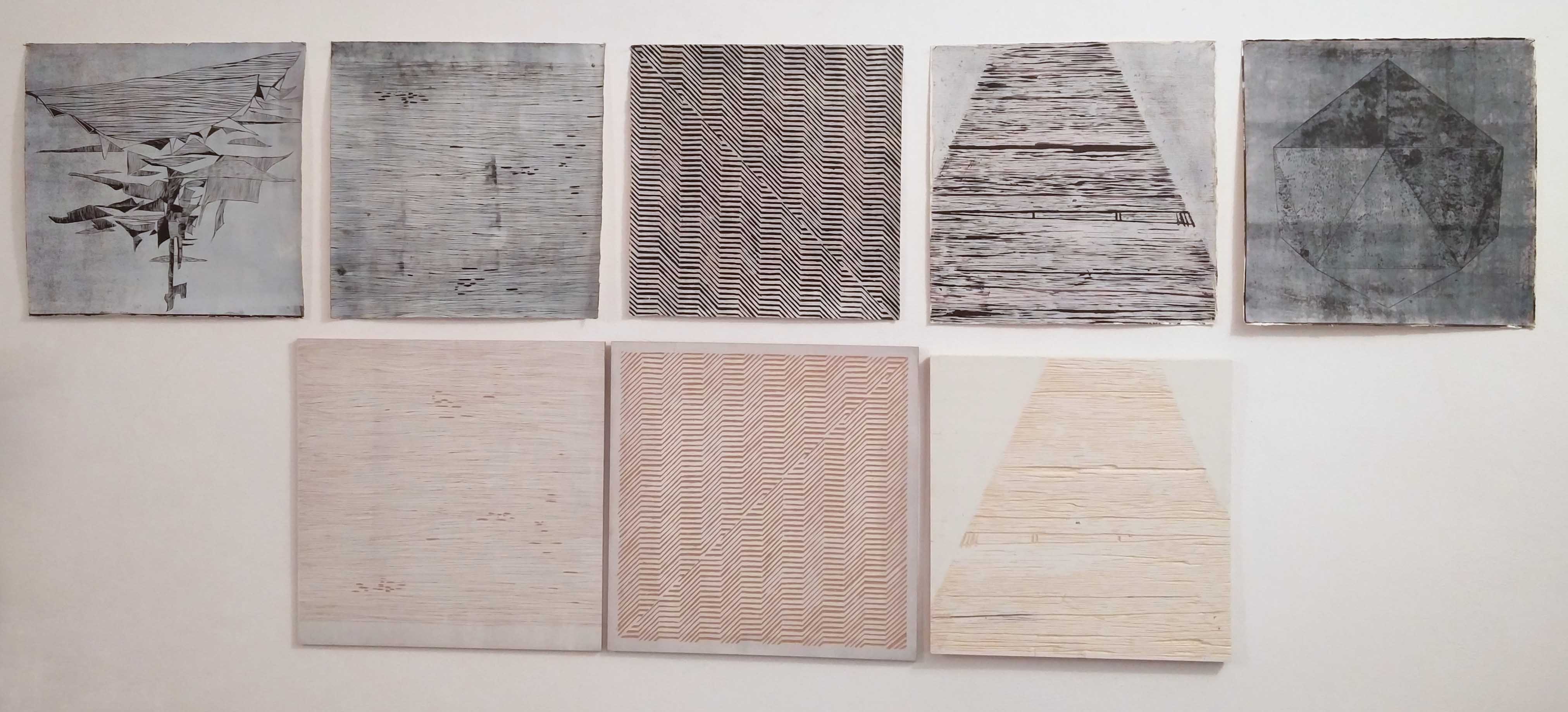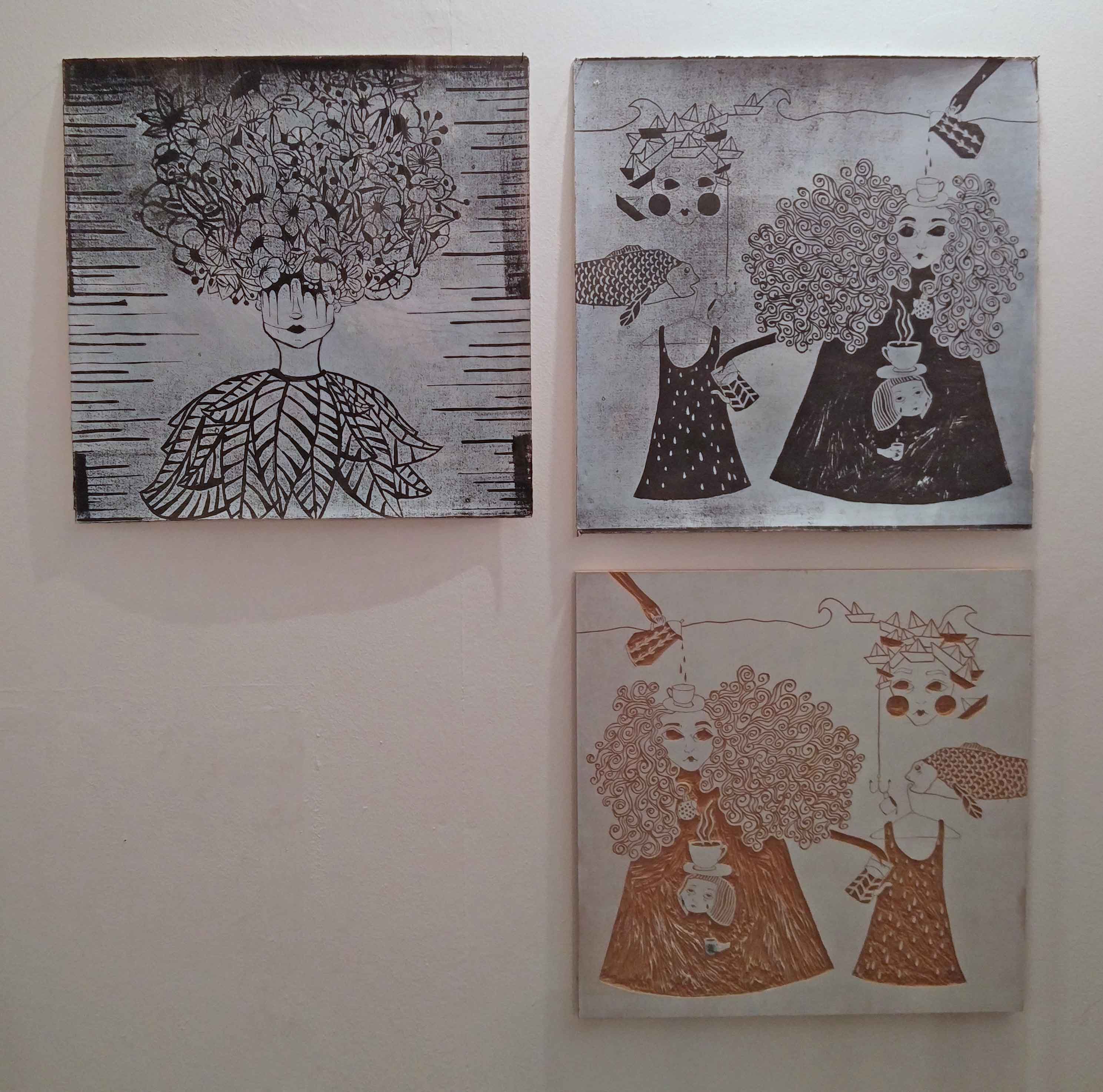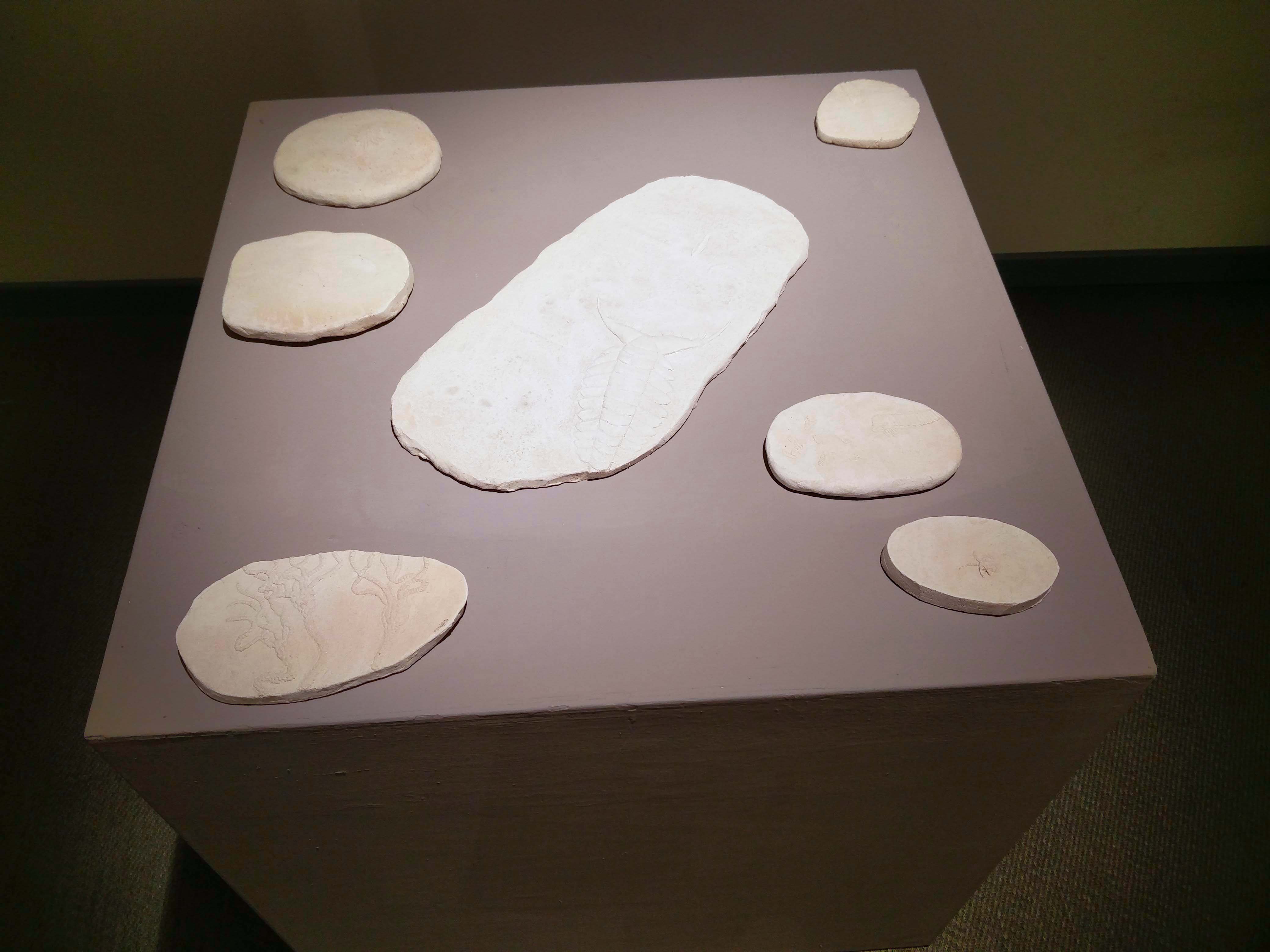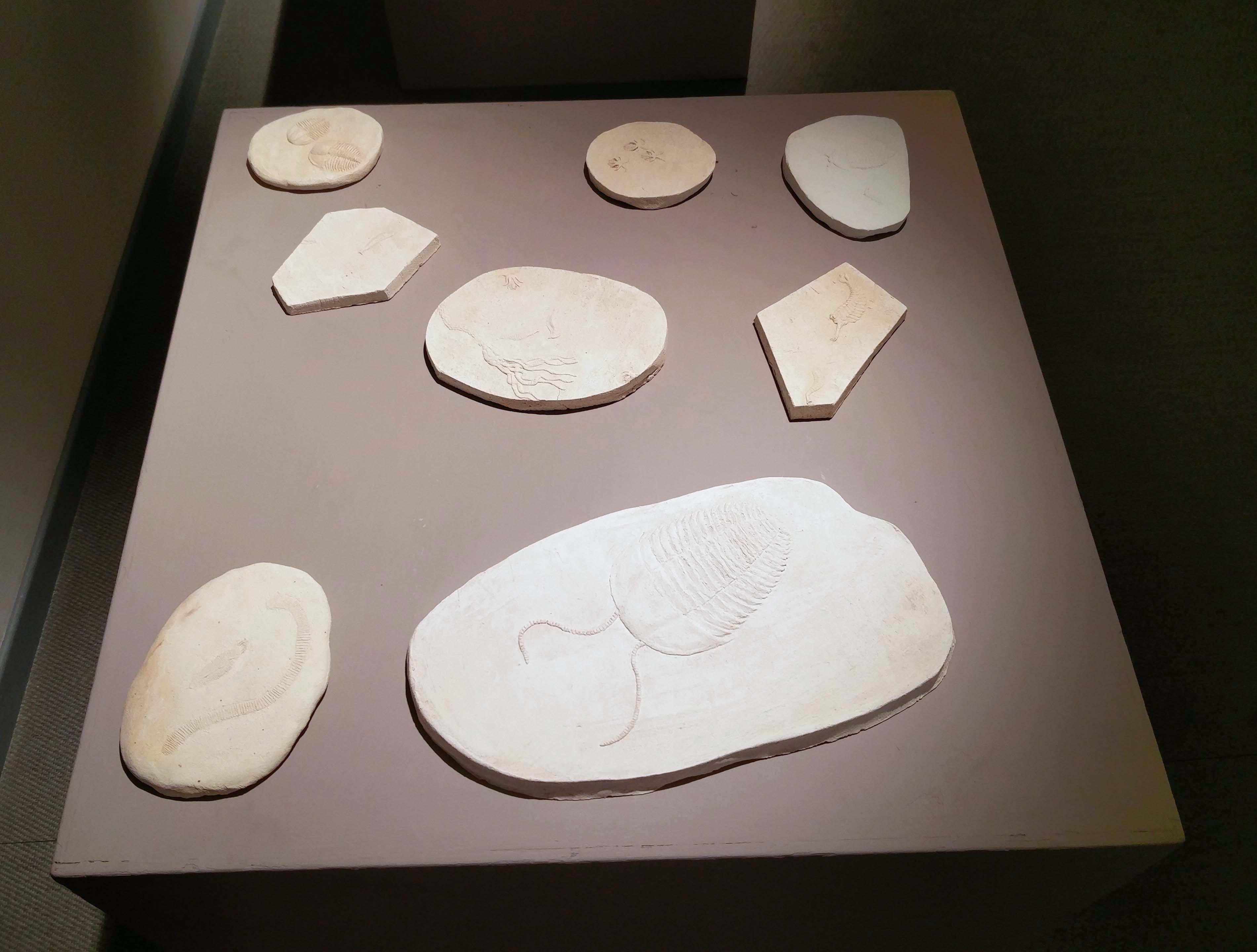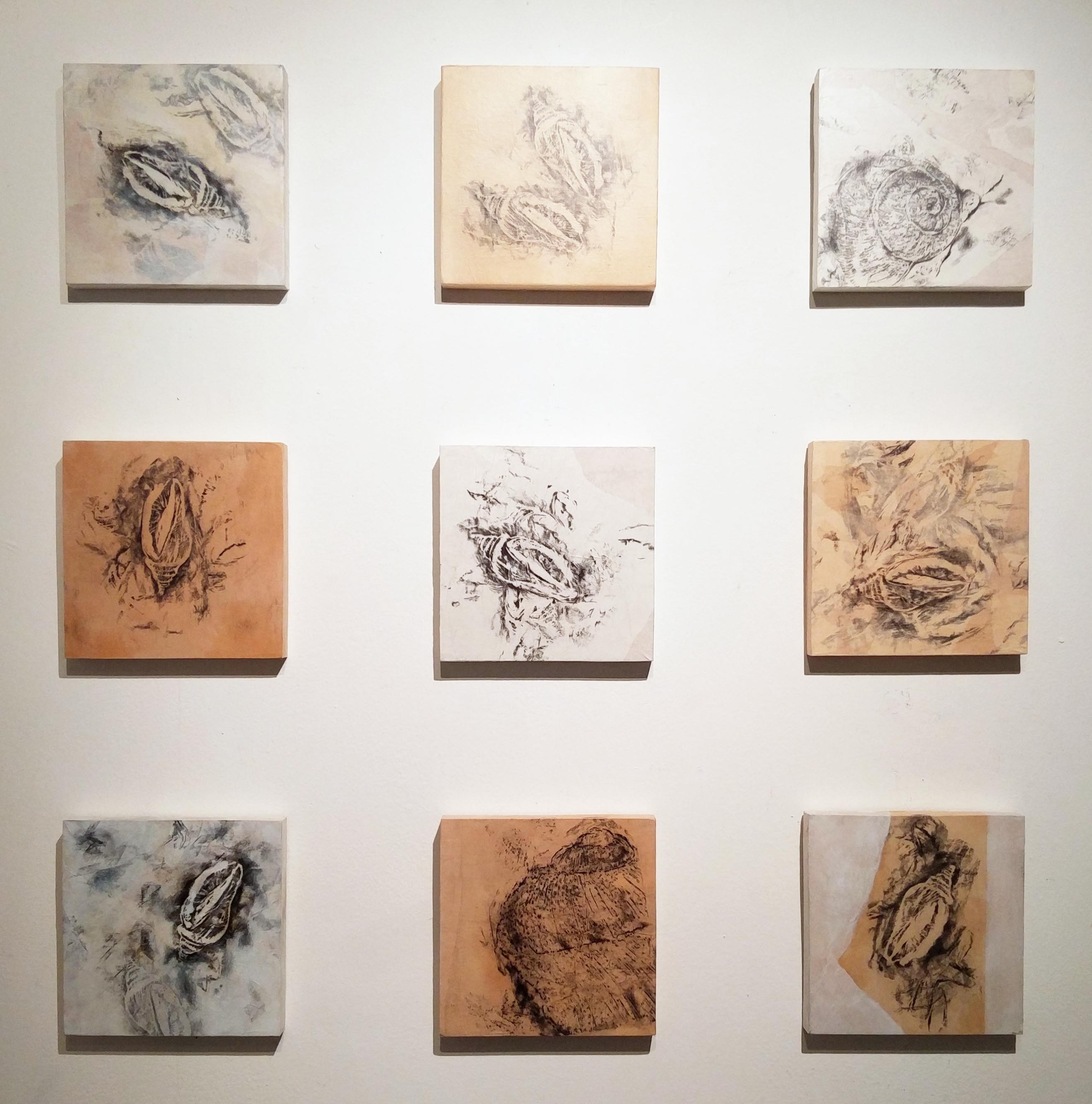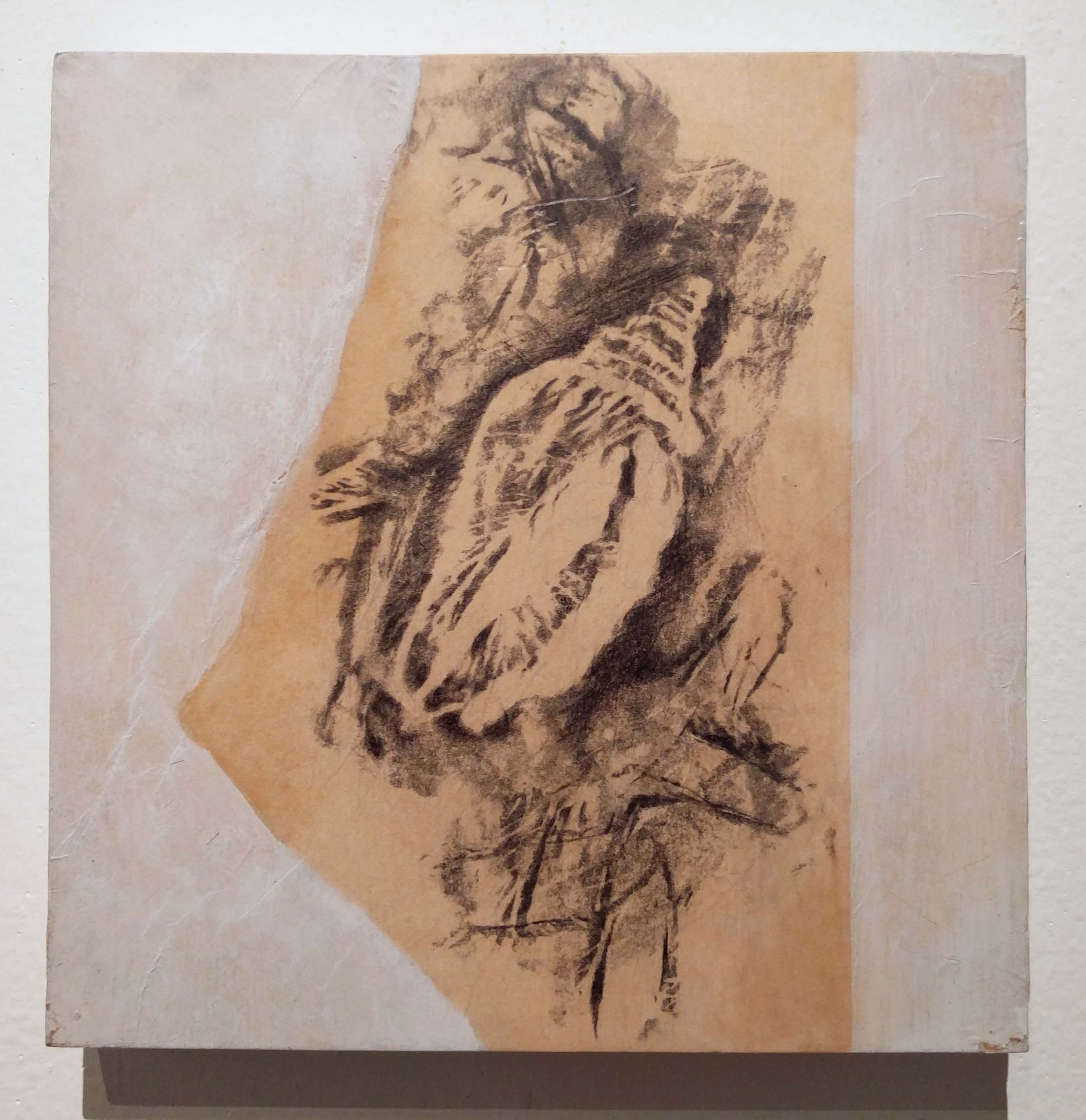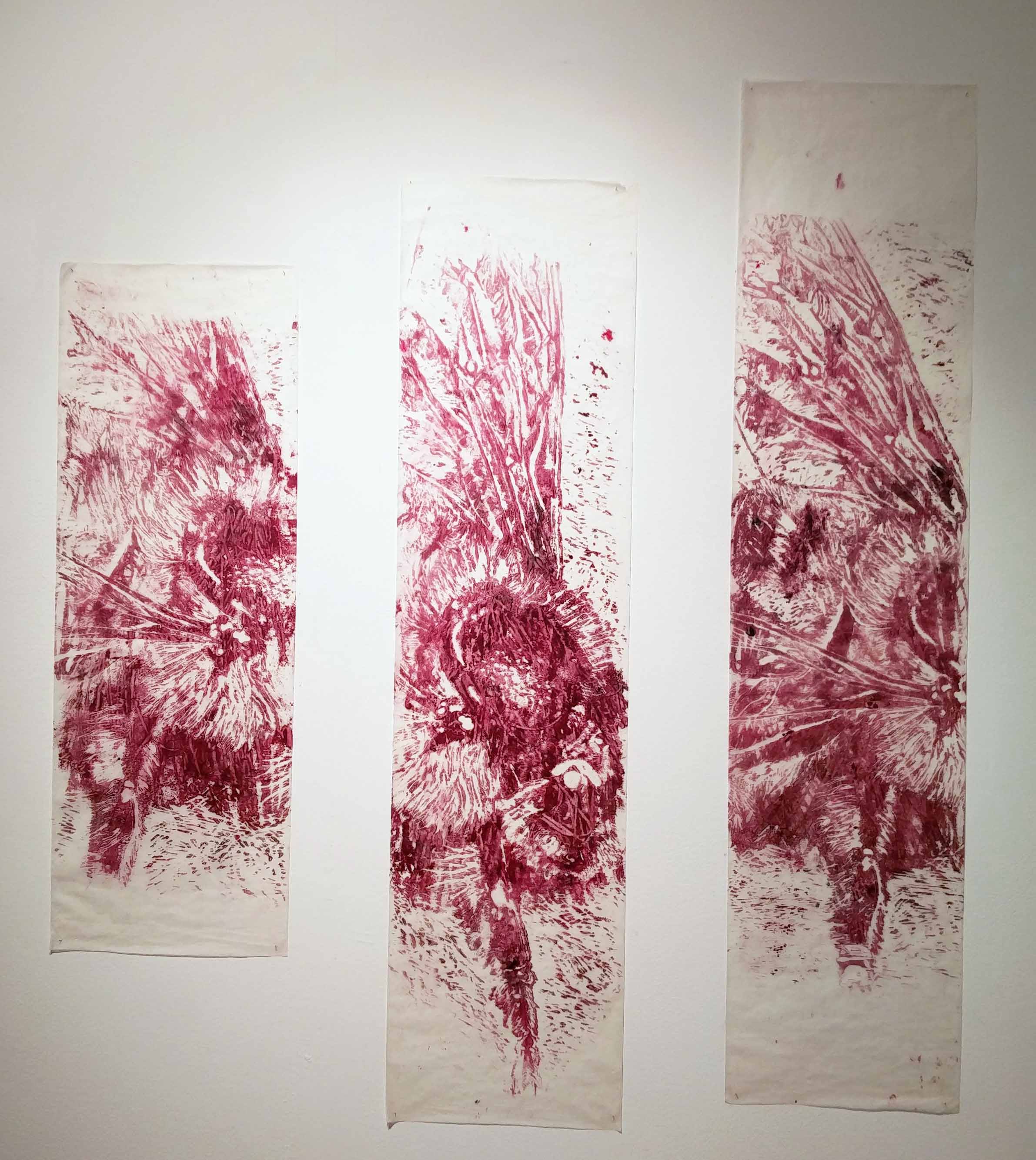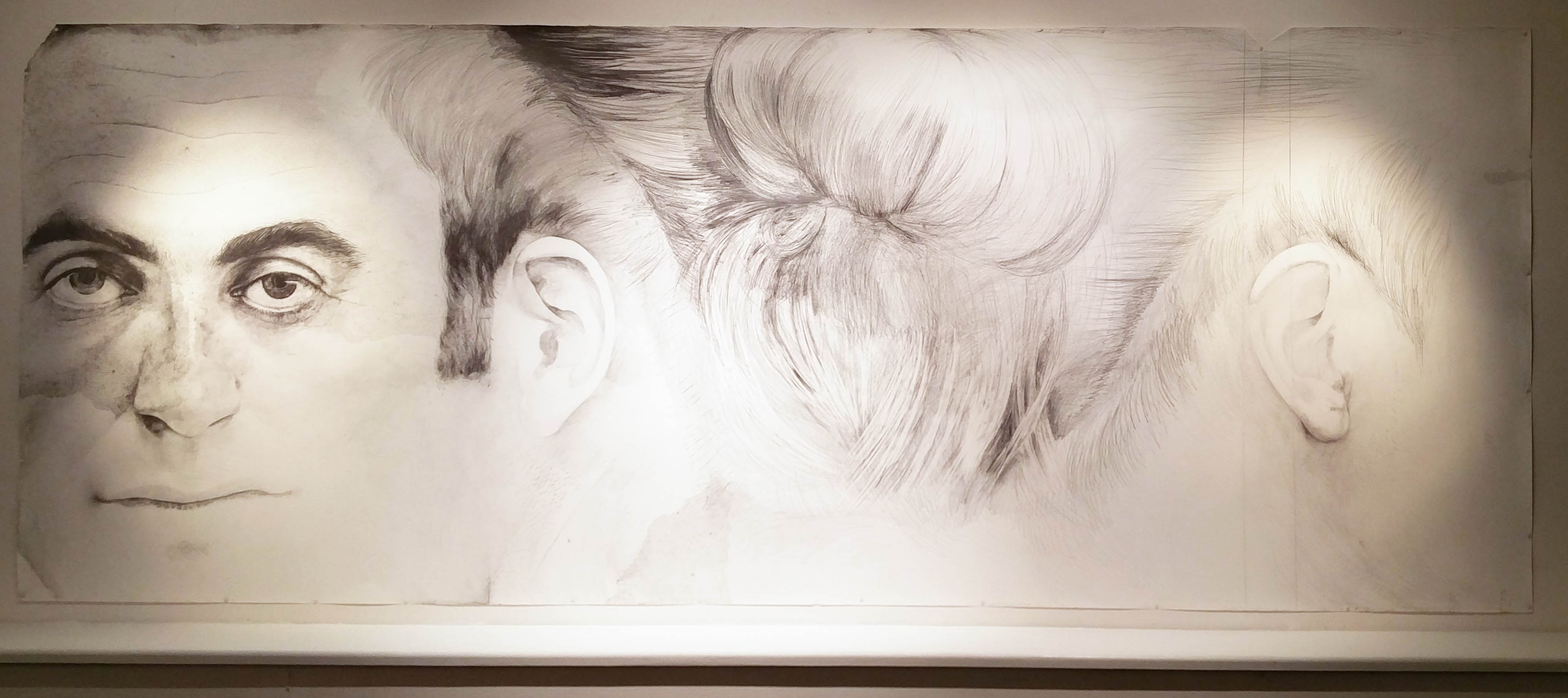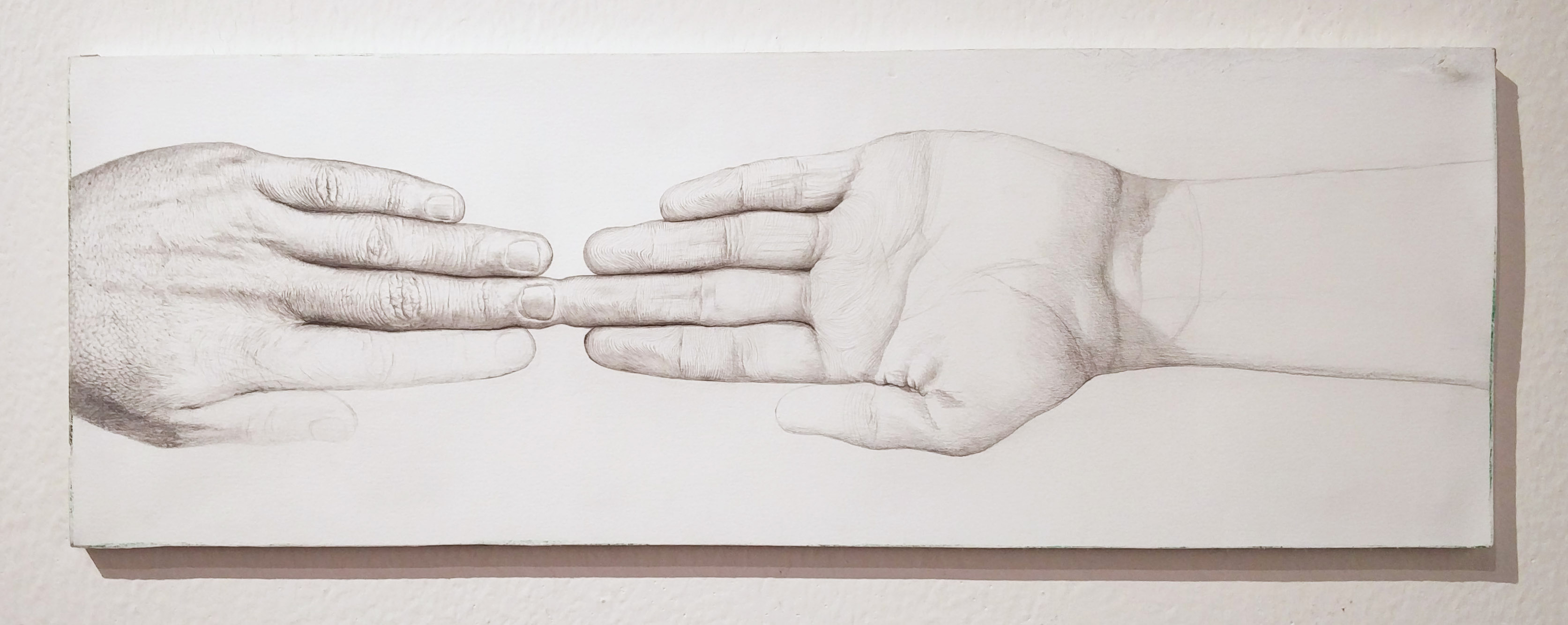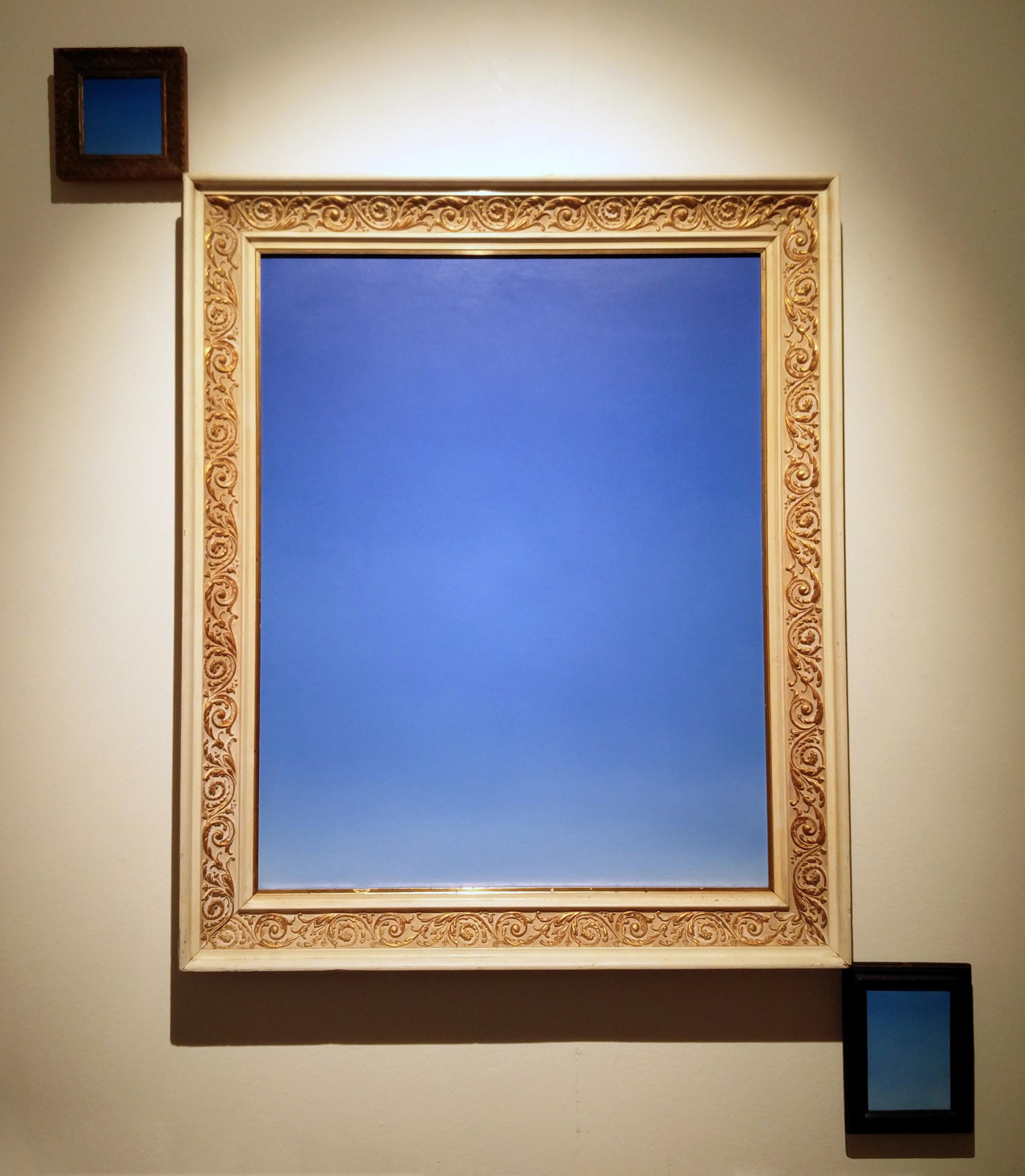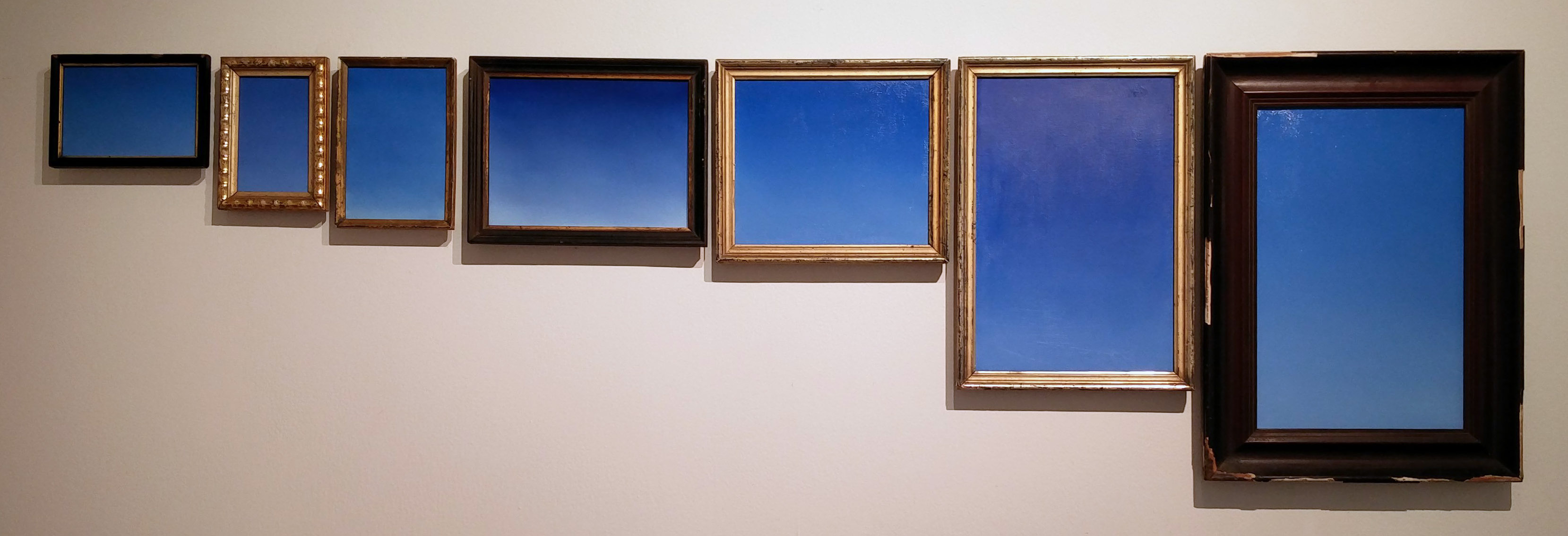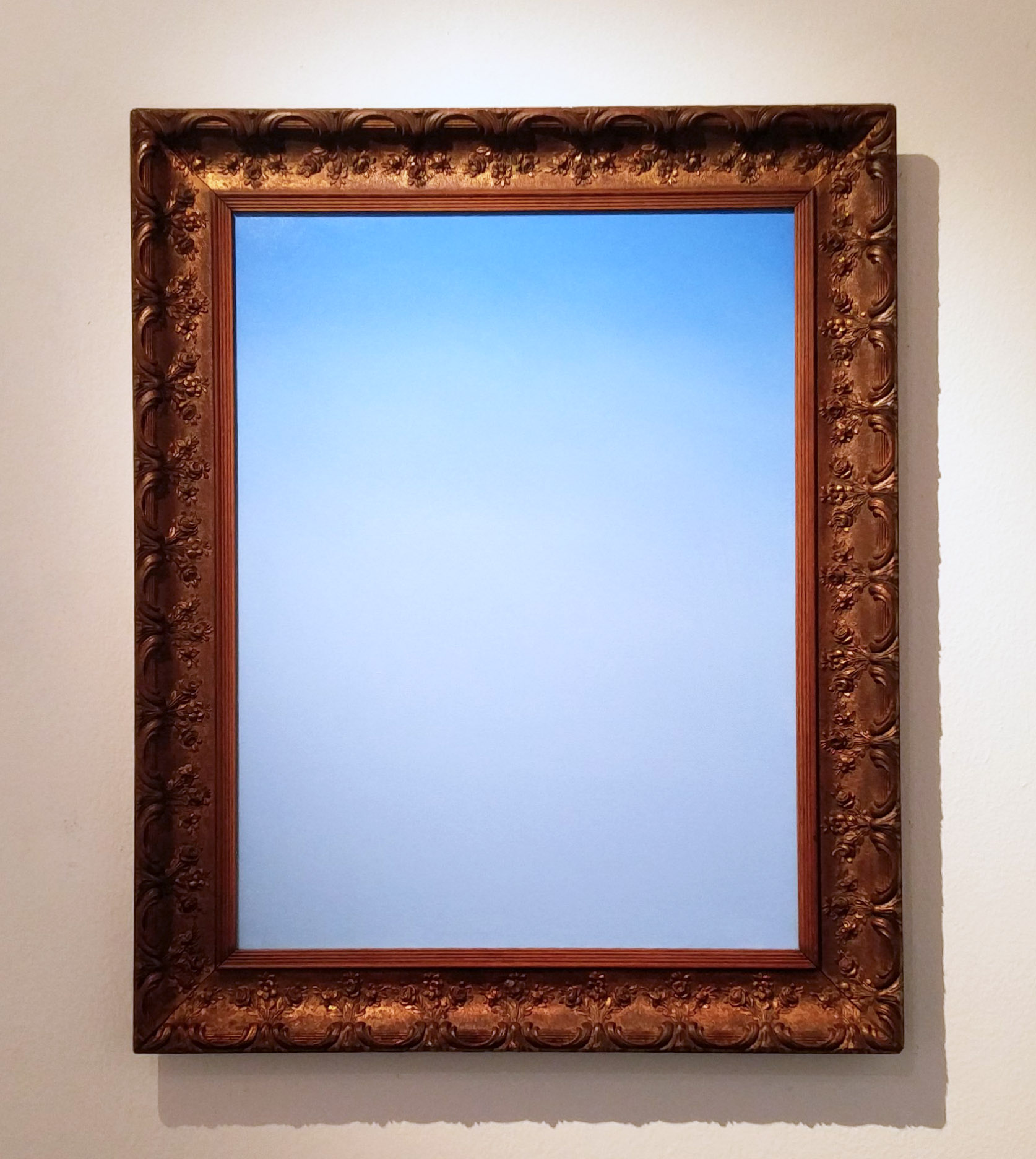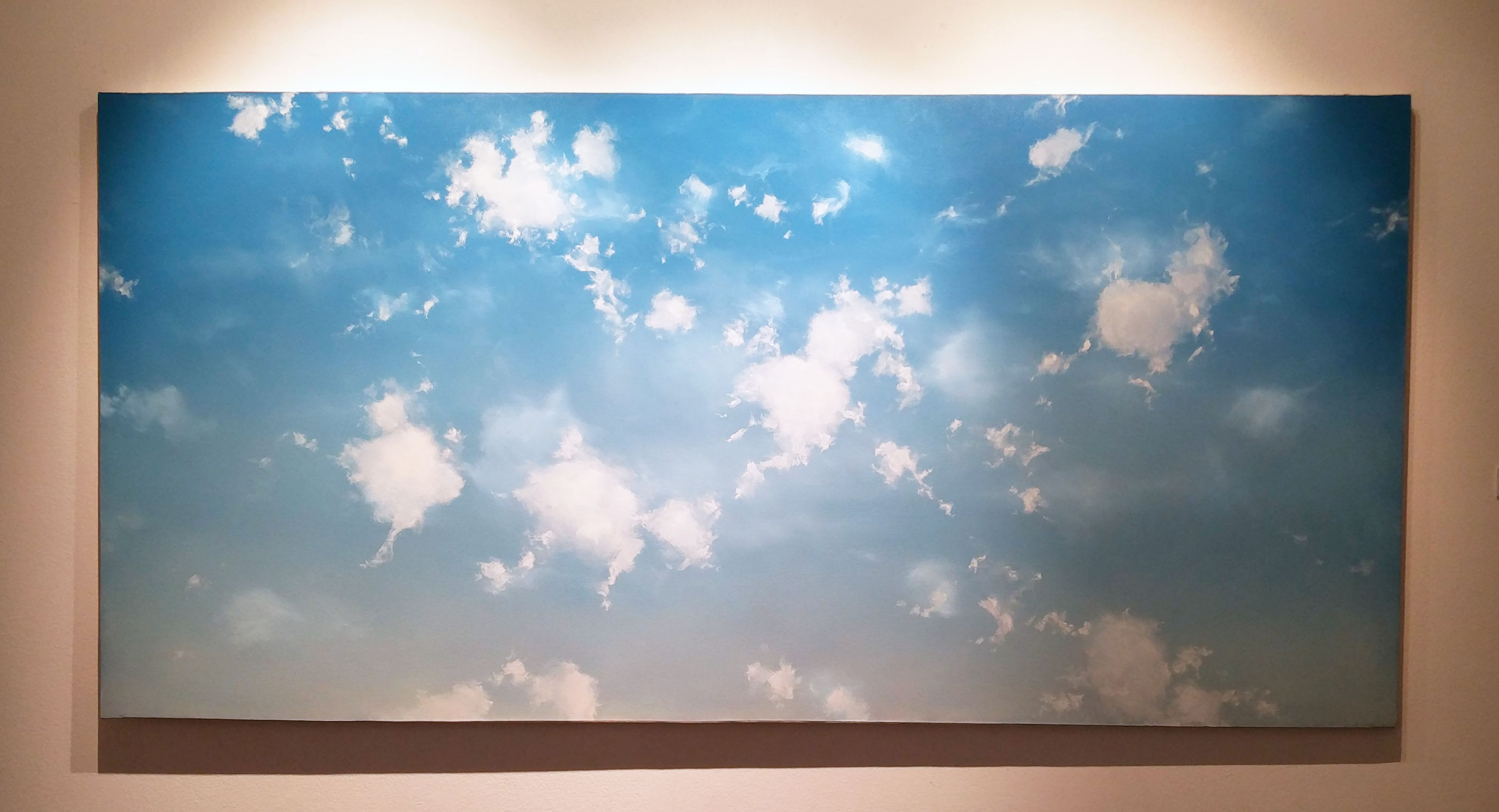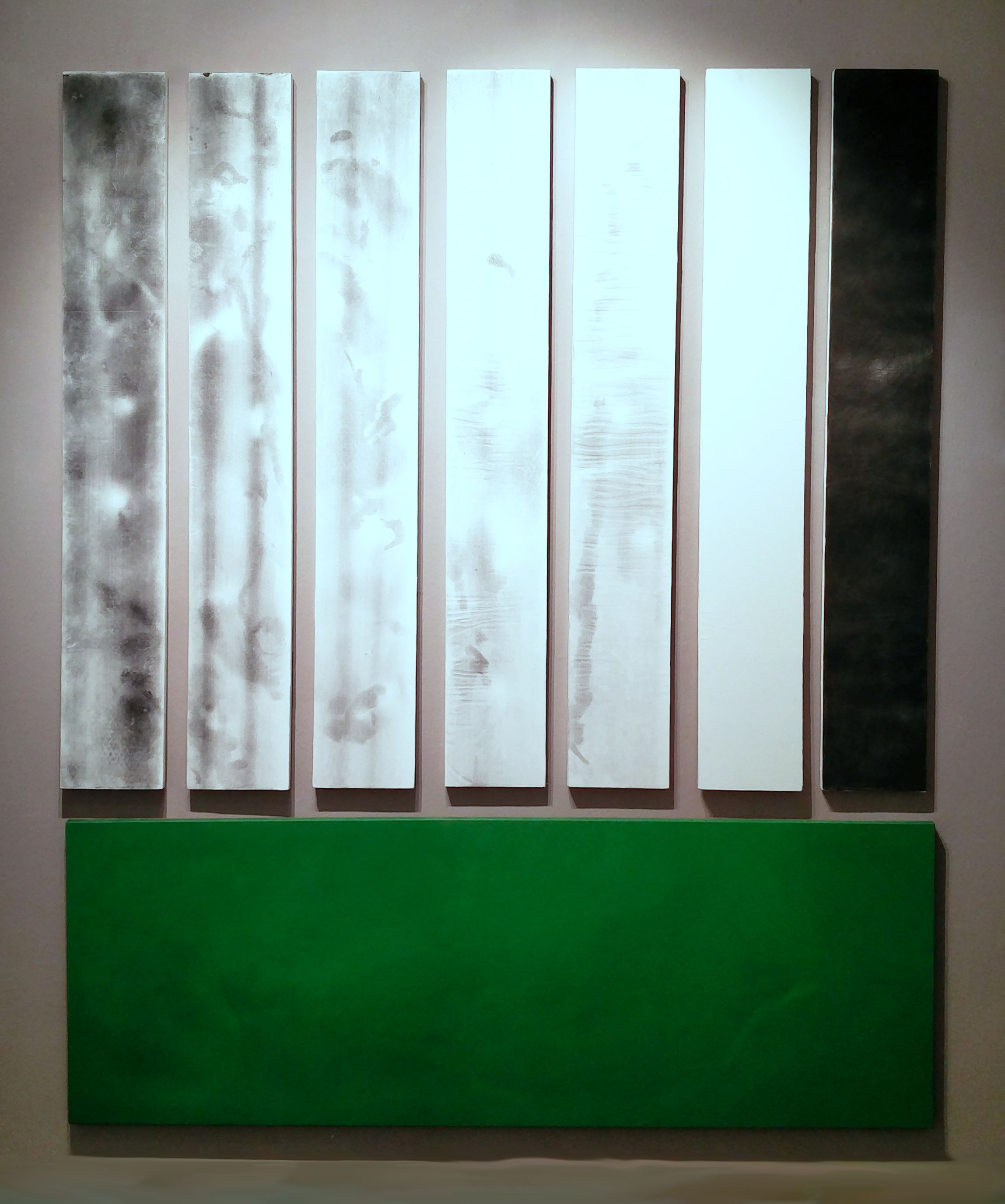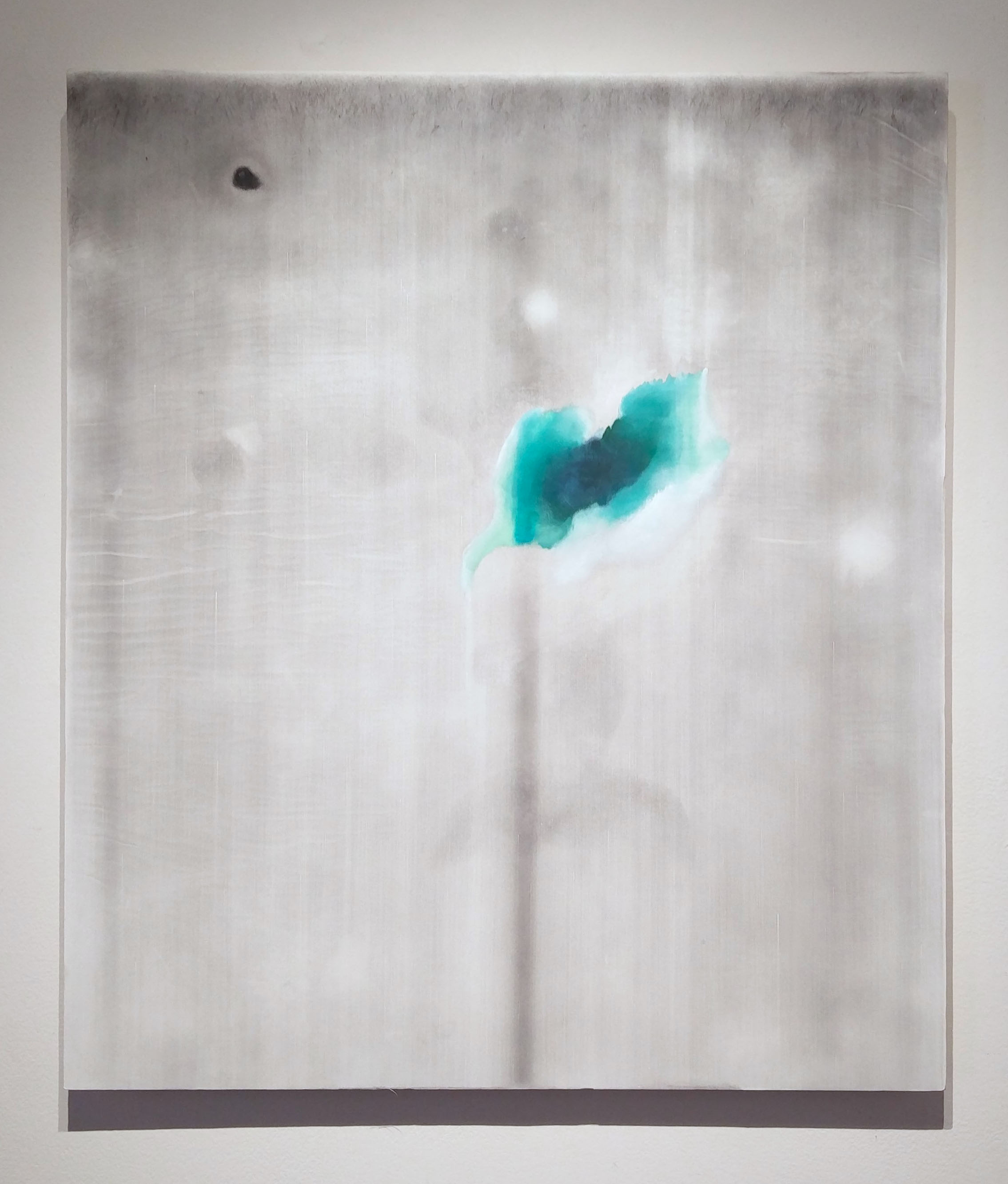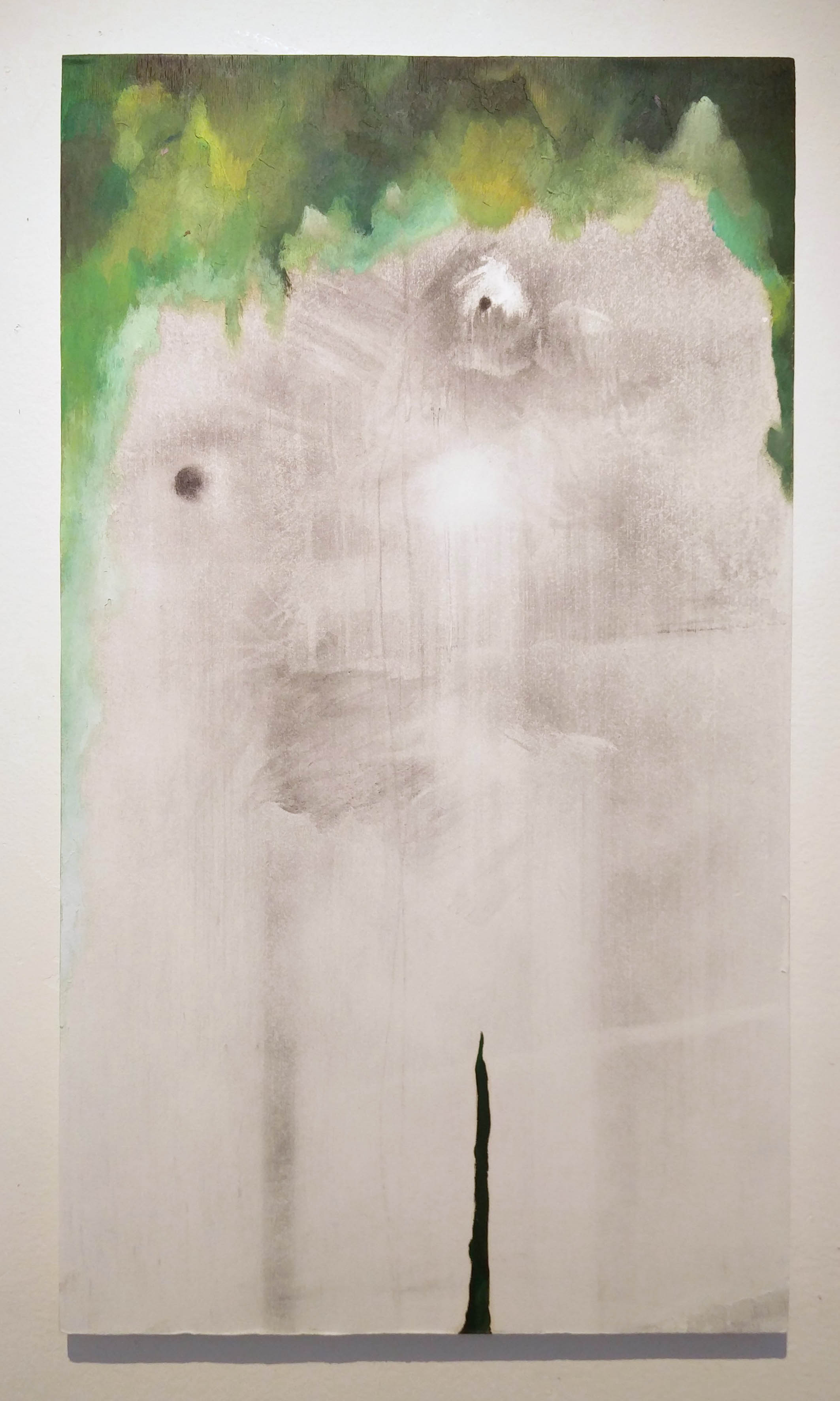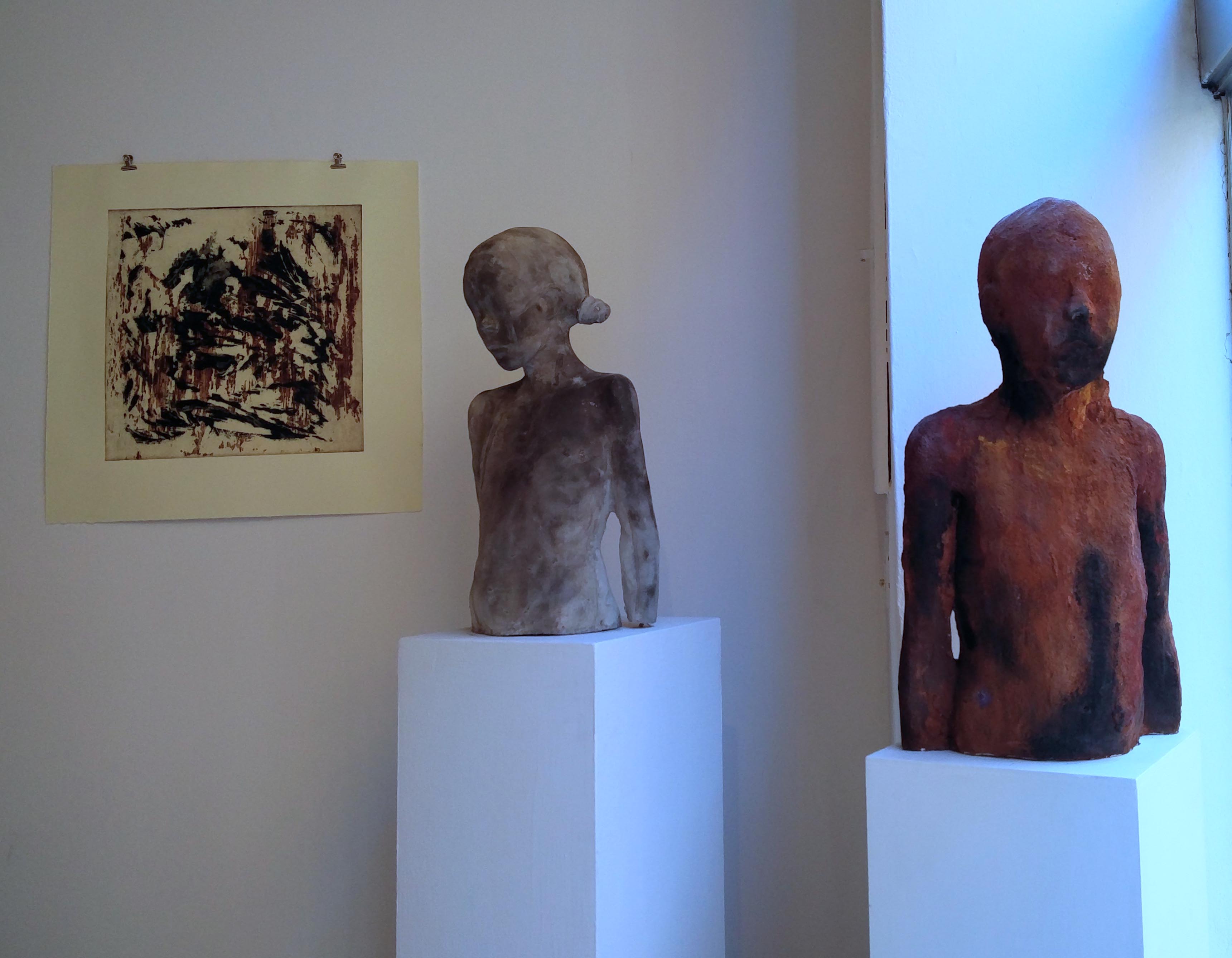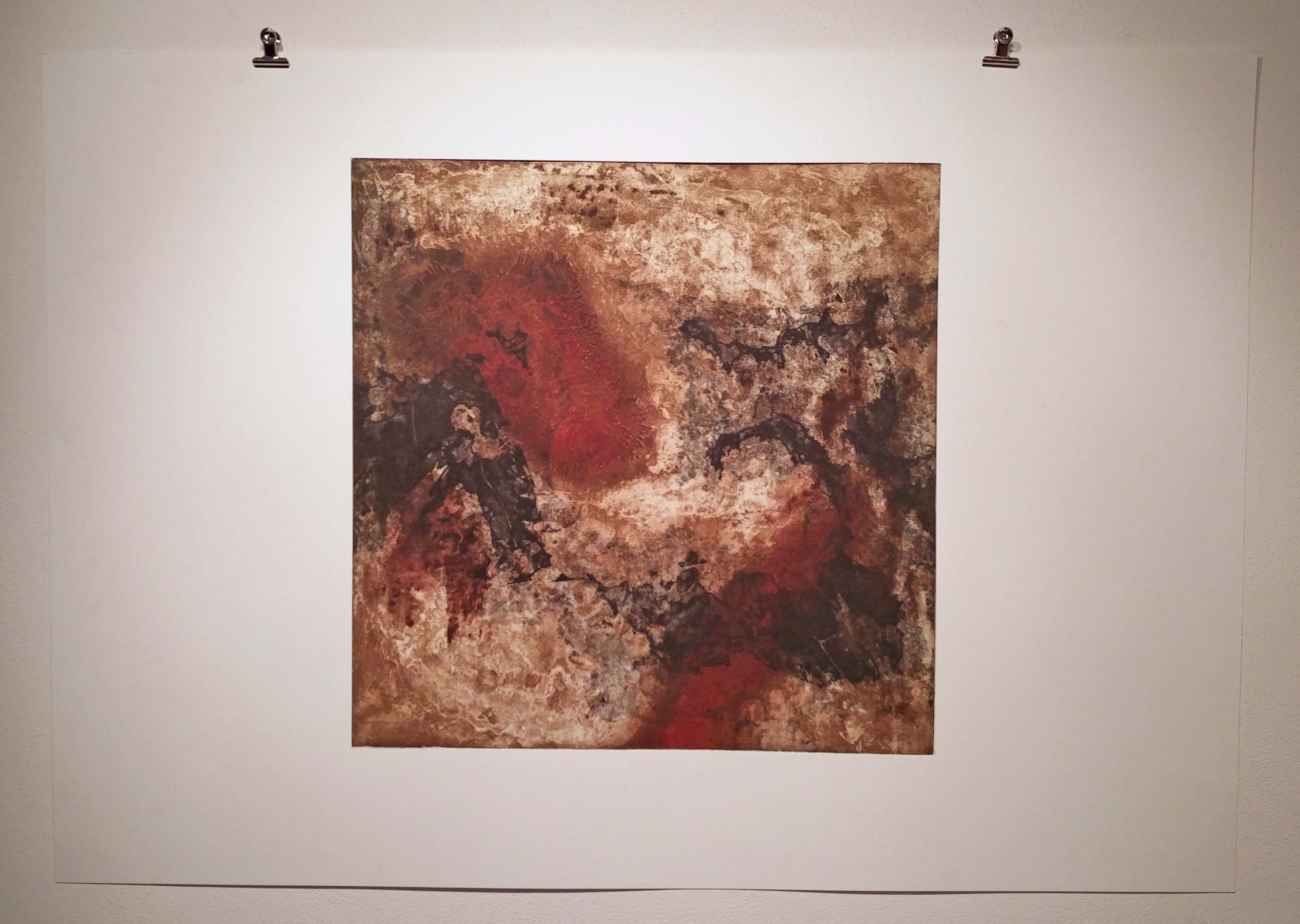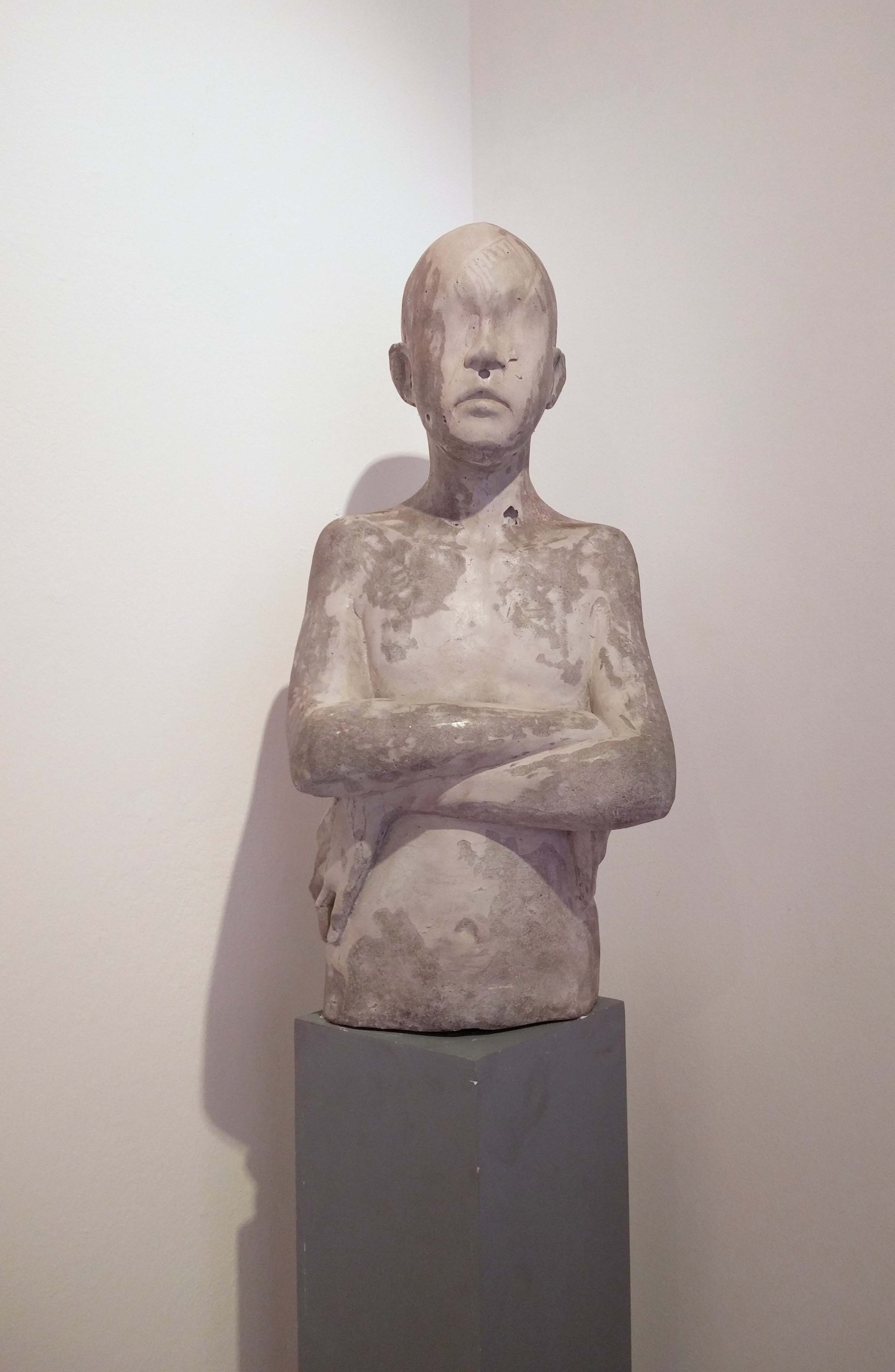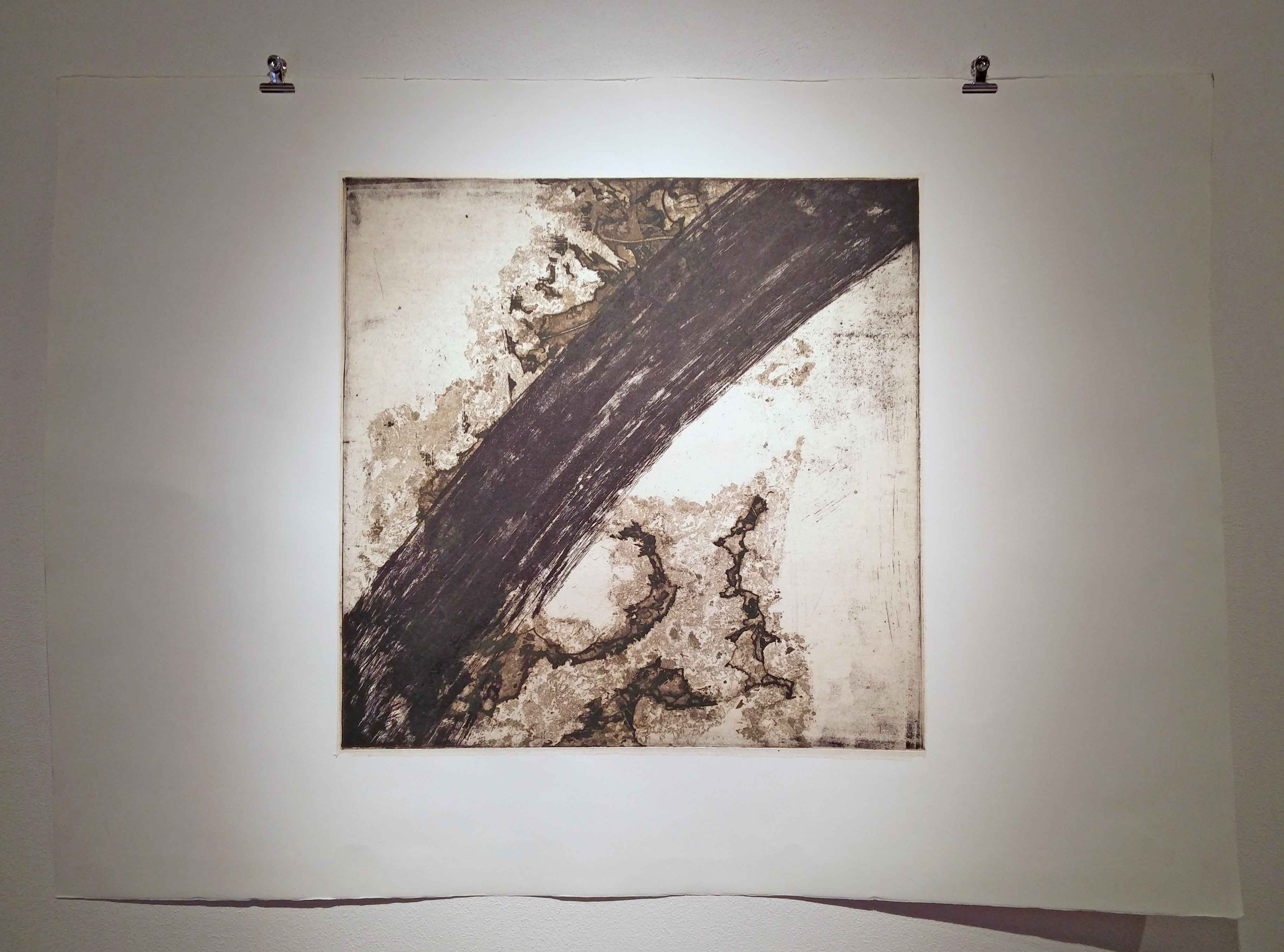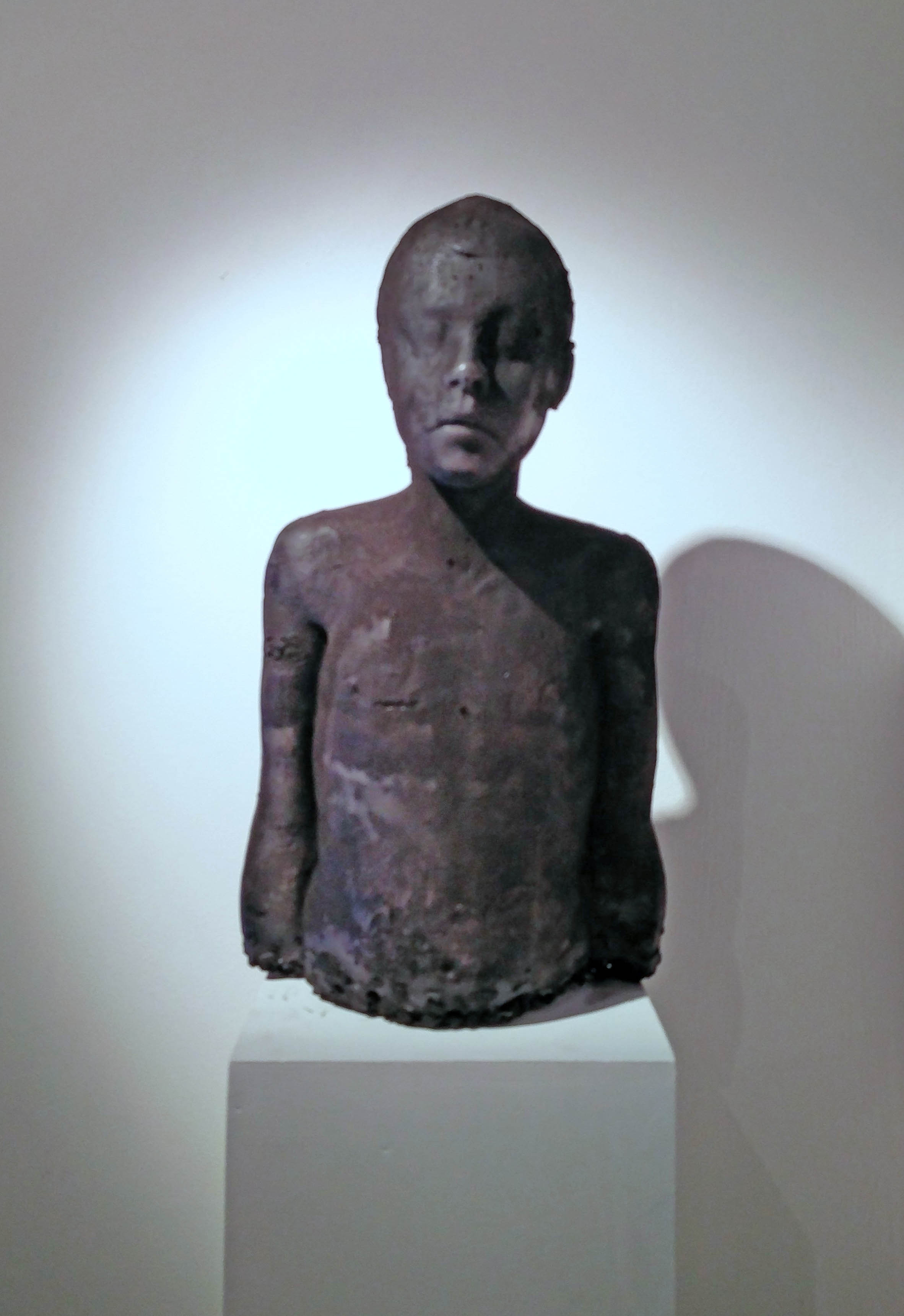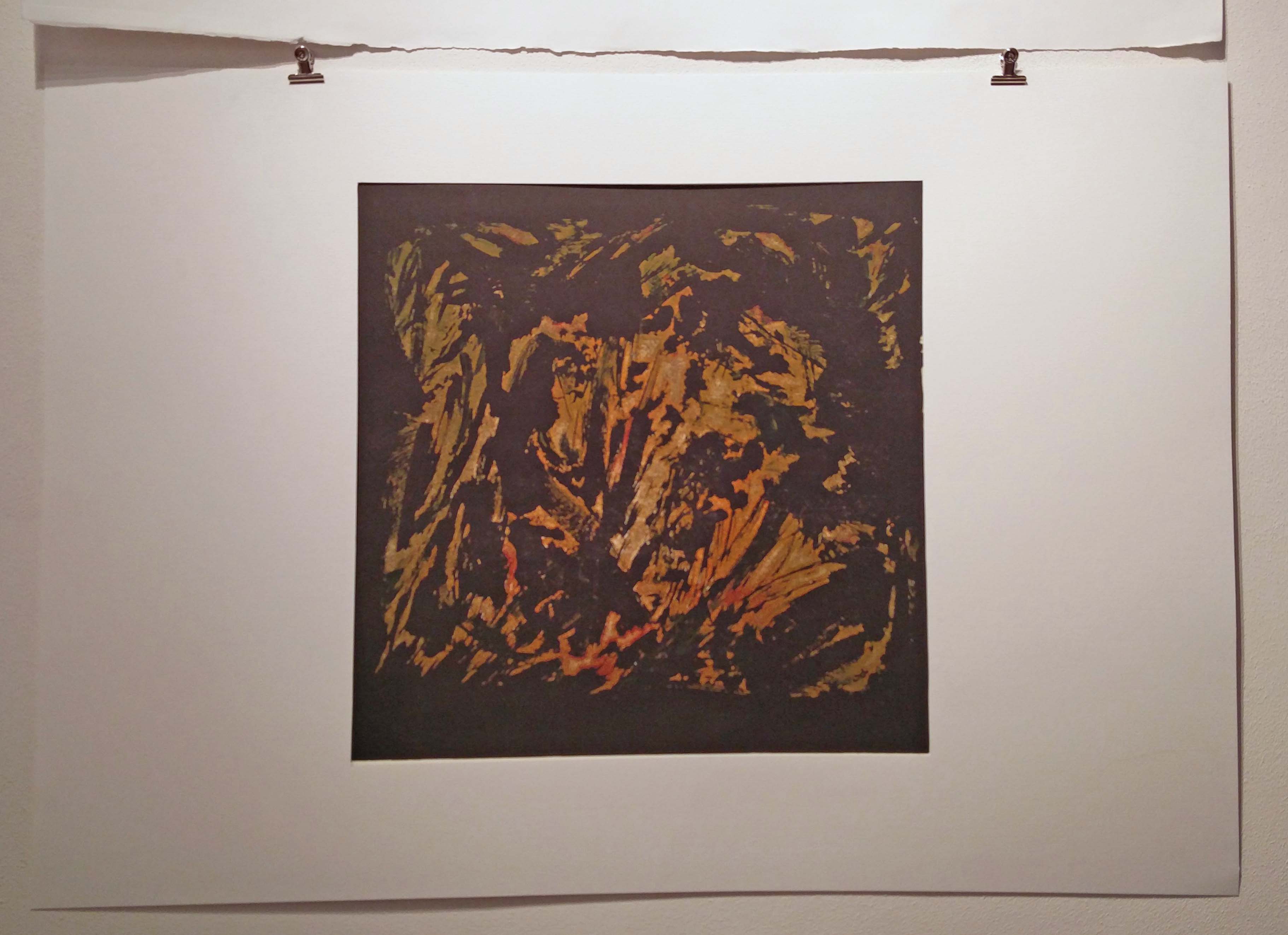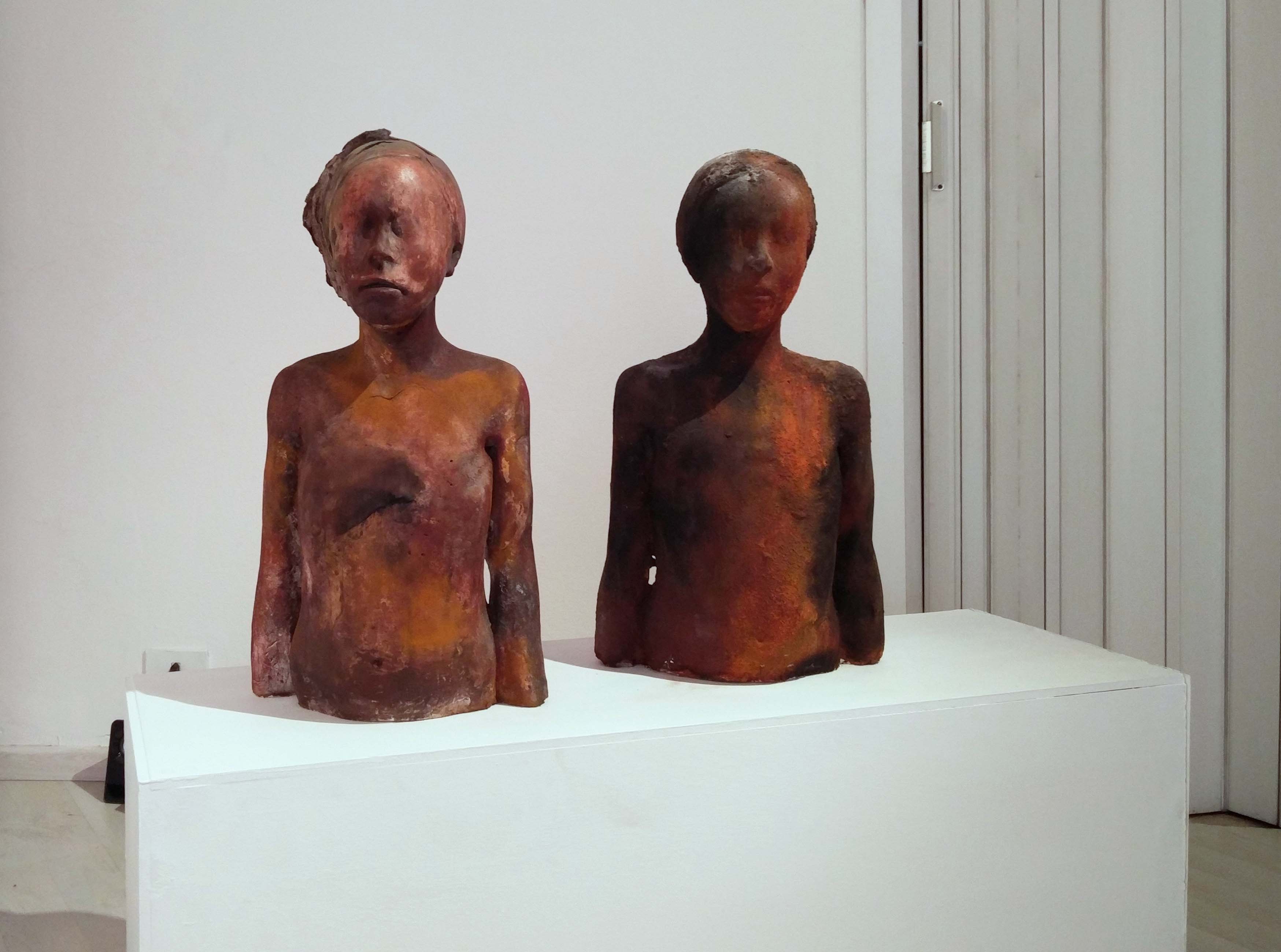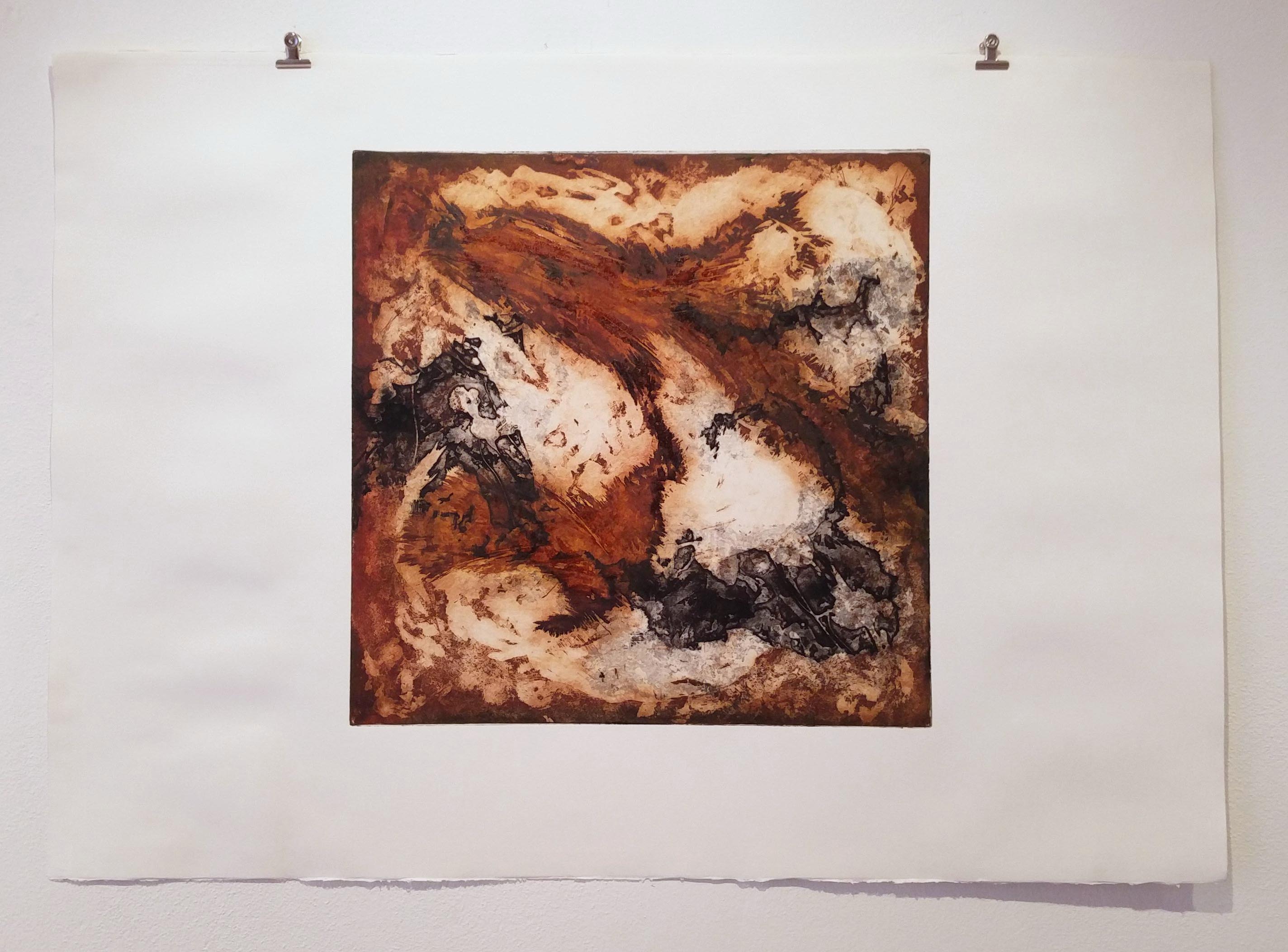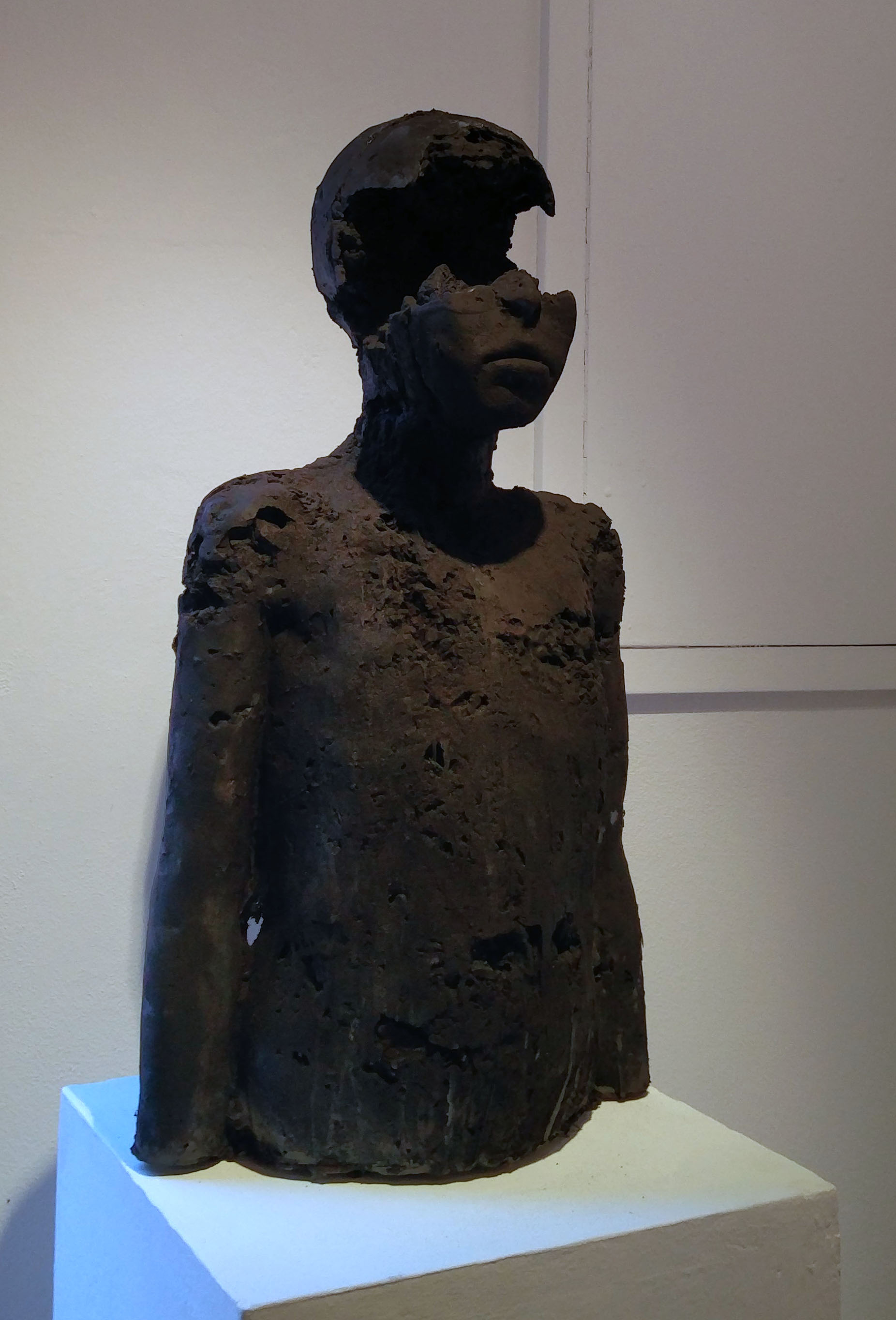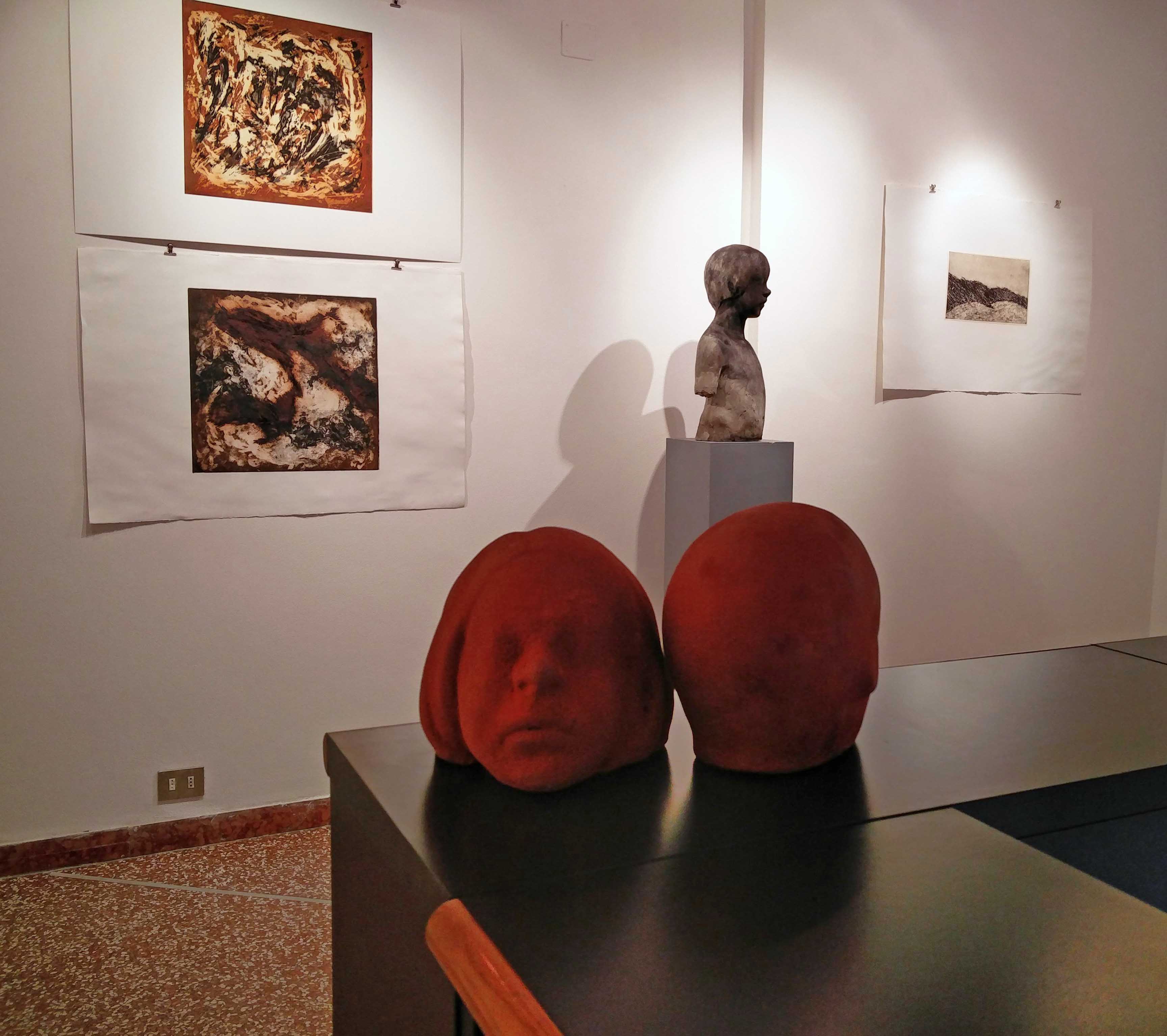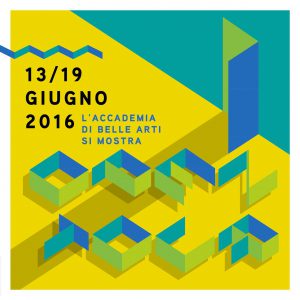 OPENTOUR – The Academy of Fine Arts appears
OPENTOUR – The Academy of Fine Arts appears
13 – 19 June 2016
For the second edition of OPENTOUR the Bolognese Academy of Fine Arts of Bologna had once again found numerous partners to be visible all over the city for the week of the event and partly even longer. Besides the exhibition of Academy alumni in the MAMbo, guided tours in the Pinacoteca, conferences, film projections and performances, there were several exhibitions in associative and commercial exhibition places. Nine Ascom galleries (Gallery association) opened their spaces to actual academy students to conceive, in cooperation with their teachers, an exhibition project. We visited six of them for you: Galleria Enrico Astuni, P420, Gallleriapiù, Galleria Stefano Forni, Galleria Forni and L’Ariete Arte Contemporanea.
Art Heroines
16 June 2016
Galleria Enrico Astuni
Via Iacopo Barozzi 3/D-E-F
Bologna
www.galleriaastuni.net
During the galleries night, the 16th of June there was a huge performance “Art Heroines – le voci delle artiste da Hannah Höch a Kara Walker” (Art Heroines – Artist voices from Hannah Höch to Klara Walker) at the Galleria Enrico Astuni (www.galleriaastuni.net). Elisabetta Zanelli invited her students of Fashion Design to create outfits, inspired by contemporary female artists. For the presentation the young designers had chosen co students from other disciplines of the Academy, who were styled by participants of the Palmer School, Bologna a professional hairdresser institution. But it was more than an ordinary fashion parade. Besides a video and sound installation the models acted in reference to the inspiring artist. Moreover they quoted concise statements of these artistes in their mother tong. All in all it was a lucky collaboration of different institutions, teachers and students with an amazing result.
Participants of the Fashion Design class: Alessandra Barausse, Dèsirée Belardinelli, Giulia Borsari, Lucia Gabriella Calandri, Behnam Dejakam, Benedetta Del Mastro, Sahide Fetai, Rui Guo, Jing Ying Hu, Mitra Kamyabfard, Serena Pasut, Paula Sanchez Benito, Yuwen Shao, Elsa Alvarez Vilanova, Feng Jie Yin, Guo Qing Zhai , Jie Zhang.
Installations
16 – 22 June 2016
Galleria Enrico Astuni
Via Iacopo Barozzi 3/D-E-F
Bologna
www.galleriaastuni.net
In addition to the performance the Galleria Enrico Astuni invited three emerging artists to expose their works in the context of the current exhibition. A common subject of the works might be “Forces”. Filippo Cecconi’s “Super Clamp” suggests that the plastic clamp was able to bend the 50 Eurocent coin. His work “L (2)” appears martial, since the foam stretchers seem to need hold by an over dimensioned padlock. In Paolo Bufalini’s “Clessidra con magneti” two magnets hold each other suspended in an hourglass. His untitled second work implies the same magnetic effect in two water filled glasses. Nevertheless, the floating objects are stones of different weight, so that one swims at the top of the surface and the other had sunken to the ground. Luca Bernardello shows the forces which had worked on different materials – marble, paraffin and synthetic – to get the same form.
La grandezza delle mani
(The Greatness of the Hands)
16 June – 30 July 2016
P420
Via Azzo Gardino 9, Bologna
www.p420.it
The artists exposed at the gallery P420 (www.p420.it) had all dealt with the works of one of the galleries represented artists: Paolo Icaro. In his oeuvre it is important to reflect about relationship between space and body, measurement, physicalizing/visualisation of emptiness and autobiography.
These main subjects influenced the creations of the young artists, like Francesca Bertazzoni’s site specific “Equilibrio Attento” (careful equilibrium). An iron staff, suspended in between floor and ceiling communicates in a distance of several meters with a plaster sculpture of the “Leprus Europaeus”, the European hare. This installation might be a questioning about Europe, its surface, extensions, history and identity.
Cherry Lill’s “Cinquantasei” (Fifty-six) reminds Icaro’s works of the seventies, where he reflected about the distance between the individual person and the surrounding world, like “In between middle finger forefinger”, 1975; “Dieci” (Ten), 1978 and “Misura intervallo” (Interval measure), 1979. Here “he explored the ‘place’ as a mental dimension and as the atmospheric availability of his presence.” (Portfolio Paolo Icaro, p. 15) However, Cherry Lill used instead of plasters chalk and not abstracted forms, but fingers. This might be a hint to Icaro’s questioning about body dimensions and to the exhibition’s title.
Mimi Enna has a totally different approach to Paolo Icaro’s oeuvre. In the installation “Senza Titolo (No Smoking)” (Untitled) she deals with representation of emptiness. A billiard lamp and a digital print of two cue sticks are placeholders for the cue sports. Nevertheless, the main eye-catcher of this game, the table is not there. If someone imagines a billiard party like in old films, it might be with the players drinking whisky and smoking cigarettes or cigars. So the title addition “No smoking” could be a referral to the absence of actors, who are needed that the match can be played.
Curated by Lelio Aiello and Massimo Marchetti
Selection of students from the master’s program in Visual Arts:
Francesca Bertazzoni, Gerardo Brentari, Edoardo Ciaralli, Gianni D’Urso, Mimì Enna, Marco Fontichiari, Luca Lo Giudice, Floriana Mitchell, Flavio Pacino, Giulia Poppi, Lucrezia Roncadi, Cherry Lill, Noemi Bigelli
Get out
16 June – 8 July 2016
Gallleriapiù
Via del Porto 48 a/b, Bologna
www.gallleriapiu.com
Also the young artists presented at the Gallleriapiù (www.gallleriapiu.com) got their stimulation by known artists, but in this case each student had chosen her/his own favourite. Sometimes the source is evident on the first view; other works could as well refer to other artists.
Seeing Alice Patara’s “2006 (portrait of my childhood)”, let the visitor at once think of the departed Felix Gonzalez Torres, even if the pile of packaged candies perhaps a little smaller. The title format, a number and an interpretation title, reminds Felix Gonzalez Torres “Untitled” artworks, which had often biographical background. Nevertheless, Alice Patara added coloured butterflies made in origami technique, seeming to fly out of the sweets heap. Here she visualised the story of Felix Gonzalez Torres “Portrait of a Ross”, where he interpreted the end of the childhood as butterflies taking off out of a candy pile.
A little less evident might be the motivating artist of Bianca Schick’s audio installation “Sottovoce” (Wisper). A headphone hangs on a window handle. Outside the window is an old photo of a young woman, perhaps in her twenties. To be listened is a young girl talking to her mother about her life when she, the child, is dead. She encourages her to hold on, even if the circumstances are difficult. The voice is from Bianca Schick herself and dates from 2000, when she was six years old. Since she’s grown up in South Tyrol, the original recording is in German. It is sent to one of the loudspeakers of the headphone and the translation is audible in the other one. So the listener hears two different voices in two different languages. That leads to a spherical effect and makes it difficult to distinguish both texts. At the same time, it leads us to the inspiring artist: Susan Hiller, who has, inter alia, a favour for paranormal phenomena. Moreover she researches about cultures and near death experiences, like in Clinic from 2004. Clinic might have been one of the departing points for Bianca Schick, since it is an audio installation with 200 voices, which float the room all at the same time.
On the contrary, Riccardo Ambiveri’s performance “Pillow talk” is only audible for the public after the proper event. For the period of three weeks (weekends excluded) he invites every night one person to stay with him at the gallery. So he creates an atmosphere of cover, confidence and intimacy. The conversations between the artist and his guest are recorded and projected the following day at Gallleriapiù, where visitors can also see the bed. This participative performance has a clear reference to Tracey Emin’s installation “My bed” from 1998. Moreover it hints to her autobiographic works, like “Why I Never Became a Dancer” from 1995, where she reveals intimate details of her life. Nevertheless, the audience might learn something about Riccardo Ambiveri and his guests, but it might have another nature as Tracey Emin’s revelations.
Curated by Lelio Aiello in collaboration with Massimo Marchetti
Selection of students in multimedia languages:
Riccardo Ambiveri, Virginia Argentero, Bianca Bernazzi, Luca Bernardello, Majid Bita, Silvia Cannarella, Licia Carpi, Gloria Dardari, Noemi Diamantini, Elisa Florian, Giuditta Gentile, Arianna Grifoni, Sara Labadini, Simone Marino, Aurora Montecchio, Ilaria Minelli, Giorgia Minoli, Valeria Notarangeli, Manrico Pacenti, Alice Patara, Maria Porro, Laura Quattrucci, Matteo Salis, Bianca Schick, Amirah Suboh, Francesca Tassinari, Lucia Tonni, Agata Torelli, Sofia Venturi, Emilia Zabberoni, Giorgia Zecca, Ilenia Zingarelli, Maria Chiara Ziosi
Segno rivelato
(Revealed Sign)
16 – 30 June 2016
Galleria Stefano Forni
Piazza Cavour 2, Bologna
www.galleriastefanoforni.com
Woodcut is one of the oldest printing methods of the humanity. So it is not astonishing that a students of artistic graphic should learn how to use it. Moreover, experimentation is important for them to get ideas to use and perhaps to invent new possibilities for different results.
In consequence Cataldo Serafino asked his students to work for this exhibition with a print technique, developed by him in the 1970s. It is a form of woodcut, combined with photographic tools: the imprinted paper is photo paper, coated with gelatin. After the drying, the wooden printing plate was painted with white ink and pressed on the paper. In the developing bath the colour free zones get black, the white ink stays untouched. The result is not a negative print like in the traditional woodcut, but a positive one, where the excised areas are black and the remaining parts are white. This method enabled the students to work on one hand with the traditional technique of woodcut and on the other hand to enter in new horizons of formal experimentation, since the chemical process allows interventions during the development of the print.
Even though the technique of combined woodcut and photographical print process and the format of printing plate and paper were for all fourteen students the same the results vary a lot. There are prints with floral motives and landscapes, others are more geometrical and some resemble abstract paintings. In addition to the prints, there are as well several printing plates on view, which are artworks themselves.
Curated by: Cataldo Serafini
Veronica Pellinghelli, Isabella Bignardi, Vittoria Cesareo, Irene Belladonna,Luca Degli Esposti, Anita Salvato, Suren Hash, Li Han, Tina Vivan, Enea Luisi, Chiara Emiliani, Li Jiaqi, Lara Contrini, Zoe Muratori
Delle forme e delle cose
(About forms and about things)
16 – 30 June 2016
Galleria Forni
Via Farini 26/F, Bologna
www.galleriaforni.com
For the exhibition “Delle forme e delle cose” five young artists showed their works under the same subject, but with varying techniques and inspirations. Lionel Santagostino uses white clay to create pieces that are reminding fossils. Even though Jessica Ferro is also engaged in the fauna, her insects are prints or frottage. Esmeraldo Baha seems to depict reality in his large-sized pencil drawings. Nevertheless, they are baring some surprises. Andrea Mario Bert’s are perhaps the most classical works in this exhibition: on the first view they resemble oil paintings in traditional frames. Evidently, he uses oil on canvas. In addition Andrea Mario Bert applies as well the pigments directly on the painting ground. The results are oeuvres with titles like “Overseas” or “Waterlilies” almost looking like wonderful blue sky. Finally Federico Aprile’s pictures are telling by their titles about the things in the universe like “Stars and Earth” or “Chaos and Chrono”; the works themselves are more about the forms. Moreover Federico Aprile uses mixed techniquess: oil and charcoal on paper or both on wood and/or canvas.
Curated by: Beatrice Buscaroli
Federico Aprile, Esmeraldo Baha, Andrea Mario Bert, Jessica Ferro, Lionel Santagostino
E non stiamo a guardare – Carte e terre
(And we aren’t watching – Paper and clay)
16 June – 30 July 2016
L’Ariete Arte Contemporanea
Via D’Azeglio 42, Bologna
www.galleriaariete.it
On the first view the two artists on show at L’Ariete Arte Contemporanea are working as well in traditional techniques: Nicola Amato is doing engravings and Paolo Migliazza creates sculpture from clay. By a closer contemplation the observer remarks that the engravings are non-engravings, because they are processed with turpentine, pumice or limonene. The clay sculptures might occasionally be built by chamotte, sometimes darkened by pitch. Once more, a well-known method is modified by experimental additions to improve the desired expression.
In the gallery space there is an encounter in between the poetic world of fading childhood memories by Paolo Migliazza and alchemistic images of Nicola Amato. The human sculptures seem to marvel from time to time about the colour resonances in the pictures, especially since several of the shades are repeated in both oeuvres. Nevertheless, this familiarity was not enough for the artists. They added a sound installation, which translates the dialogue between the material oeuvres into a sonic world.
Nicola Amato e Paolo Migliazza
Curated by Eleonora Frattarolo

